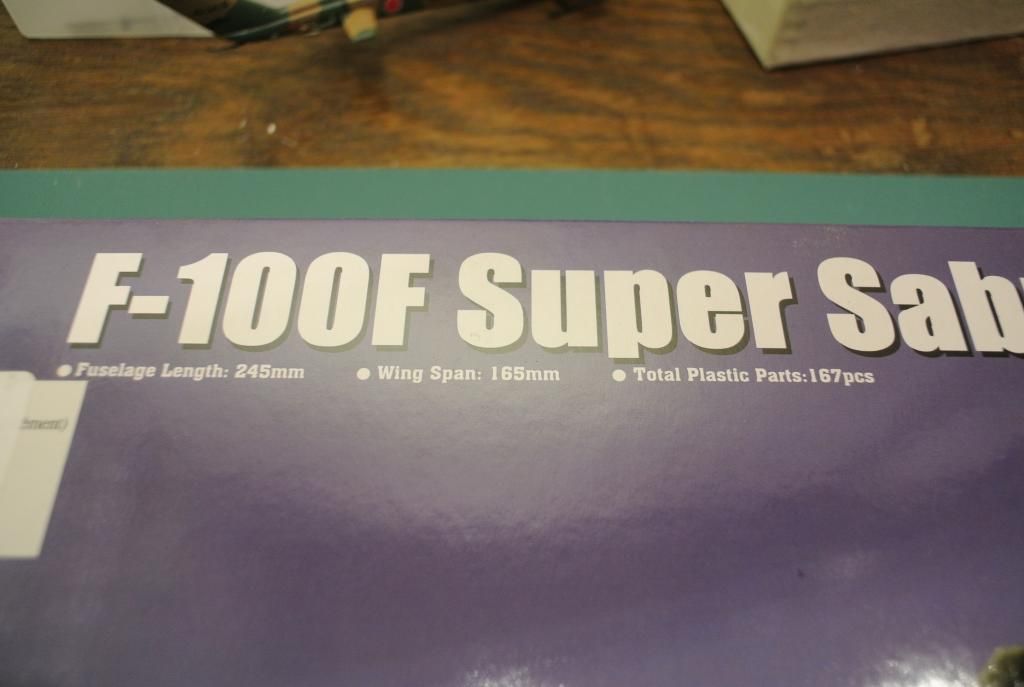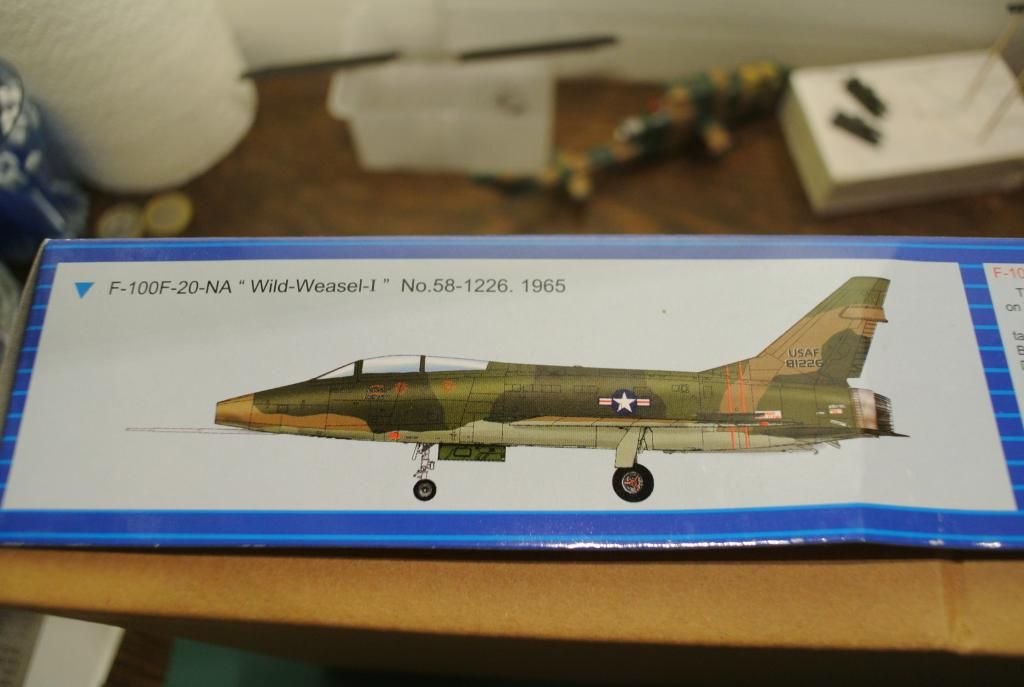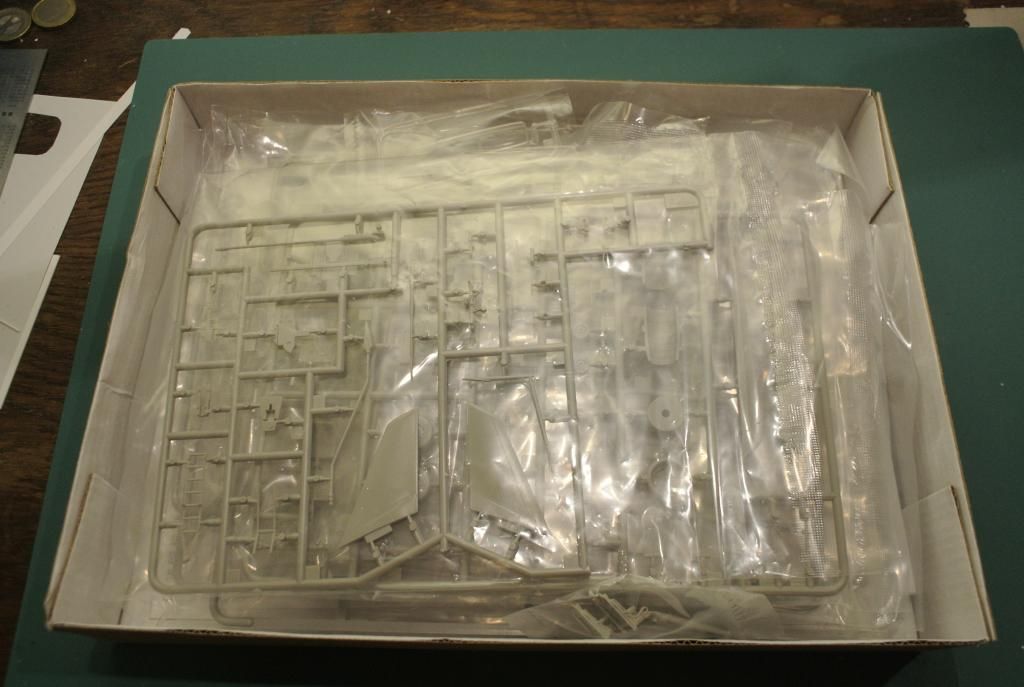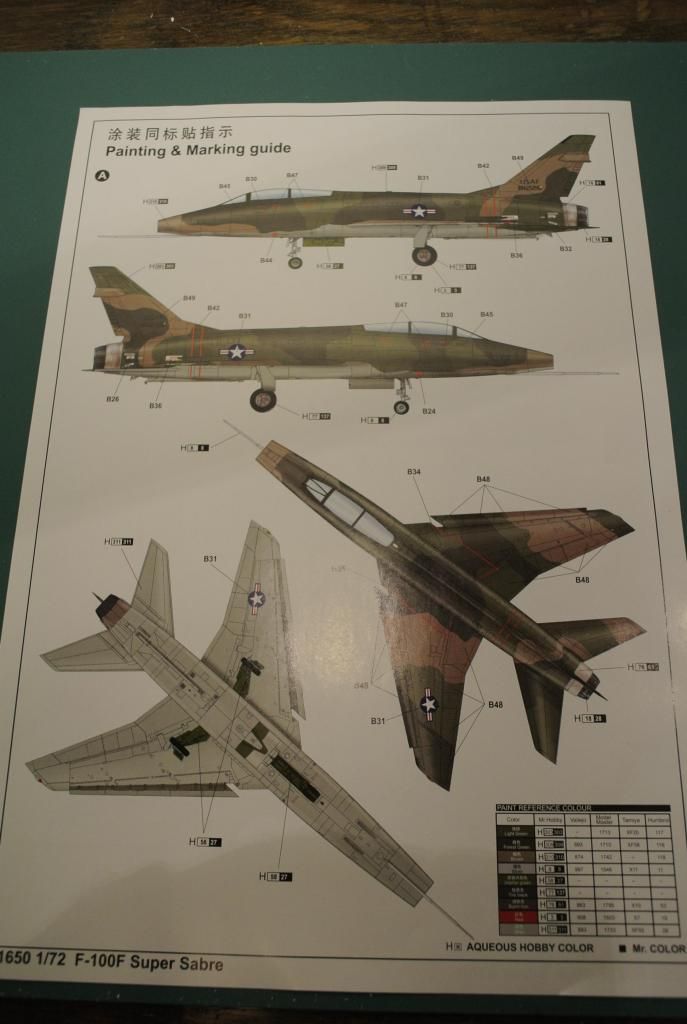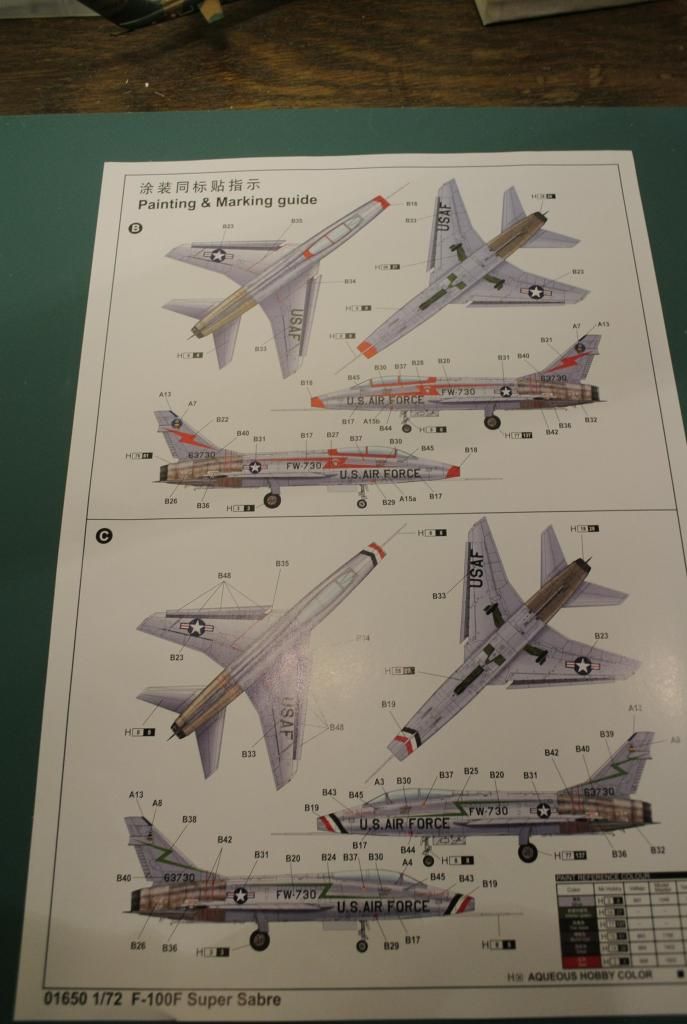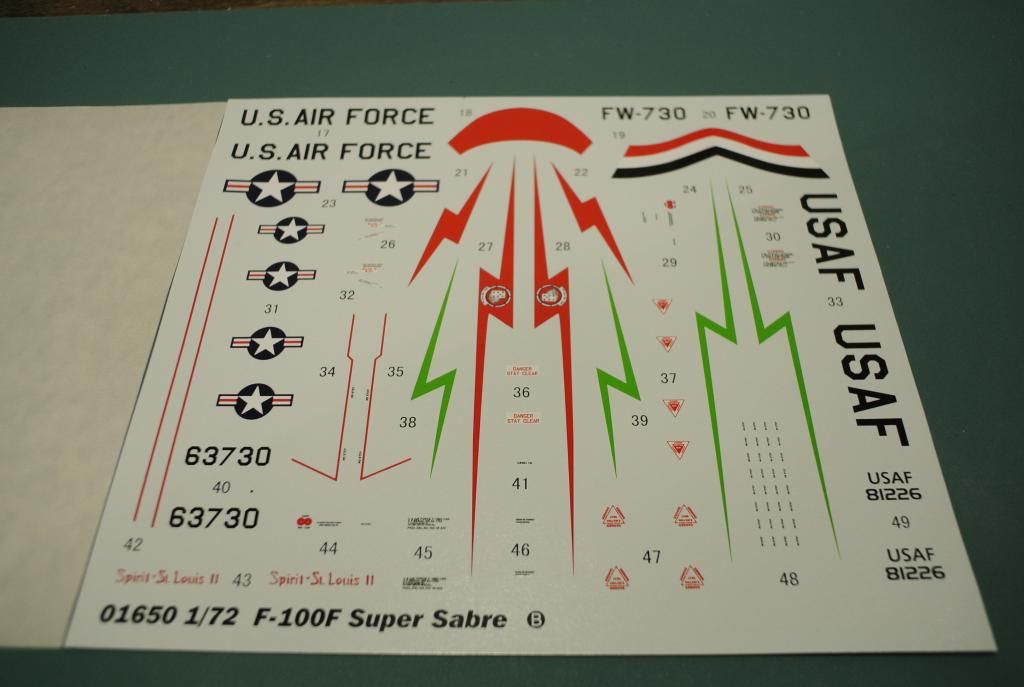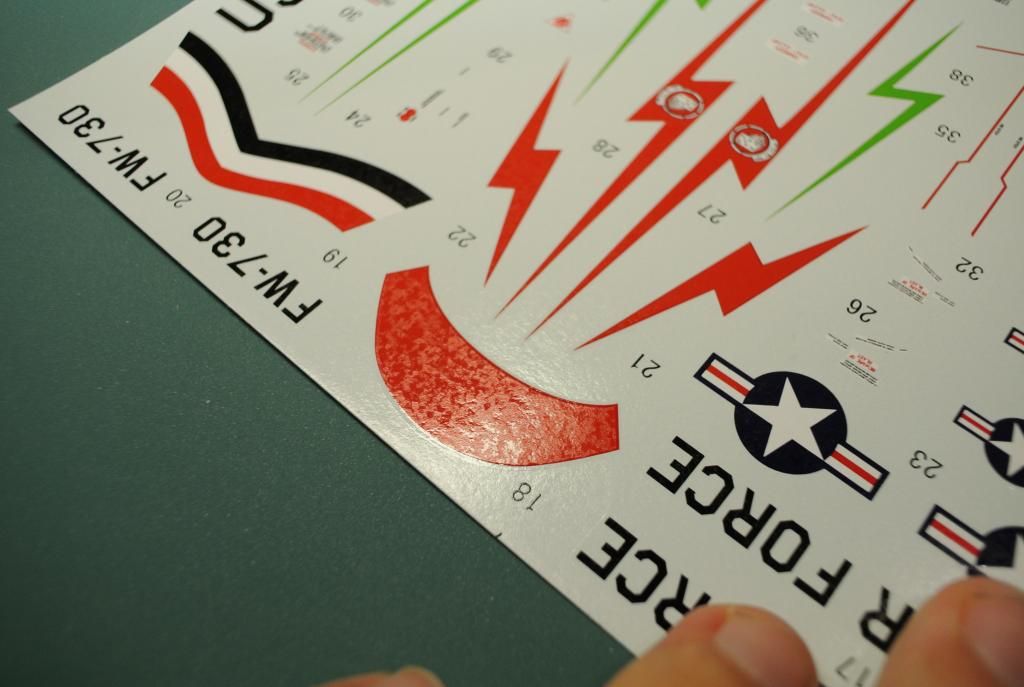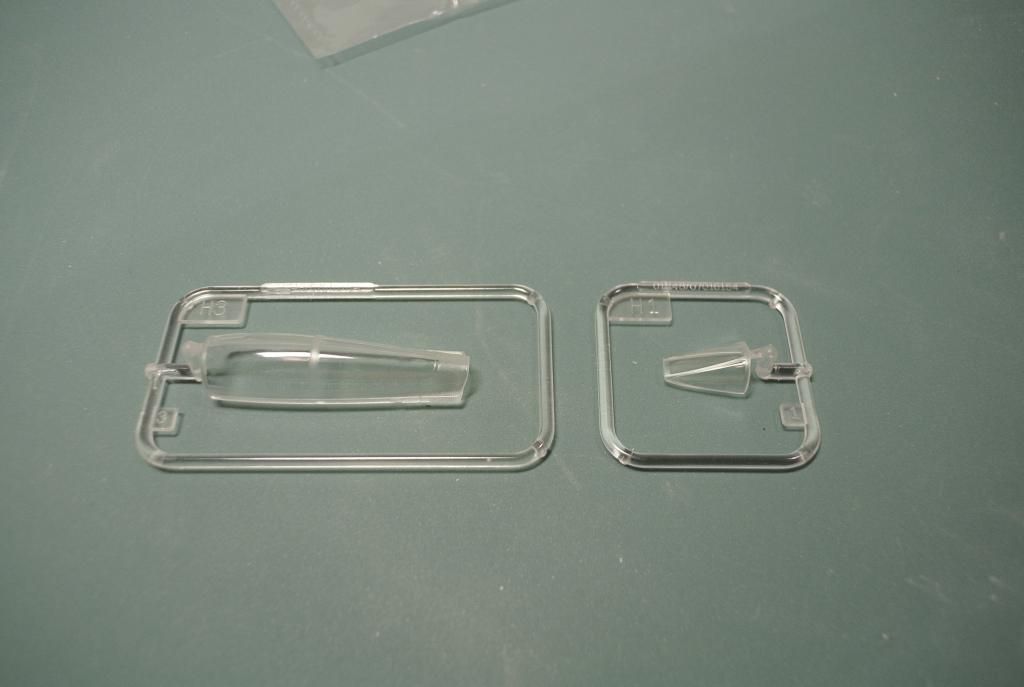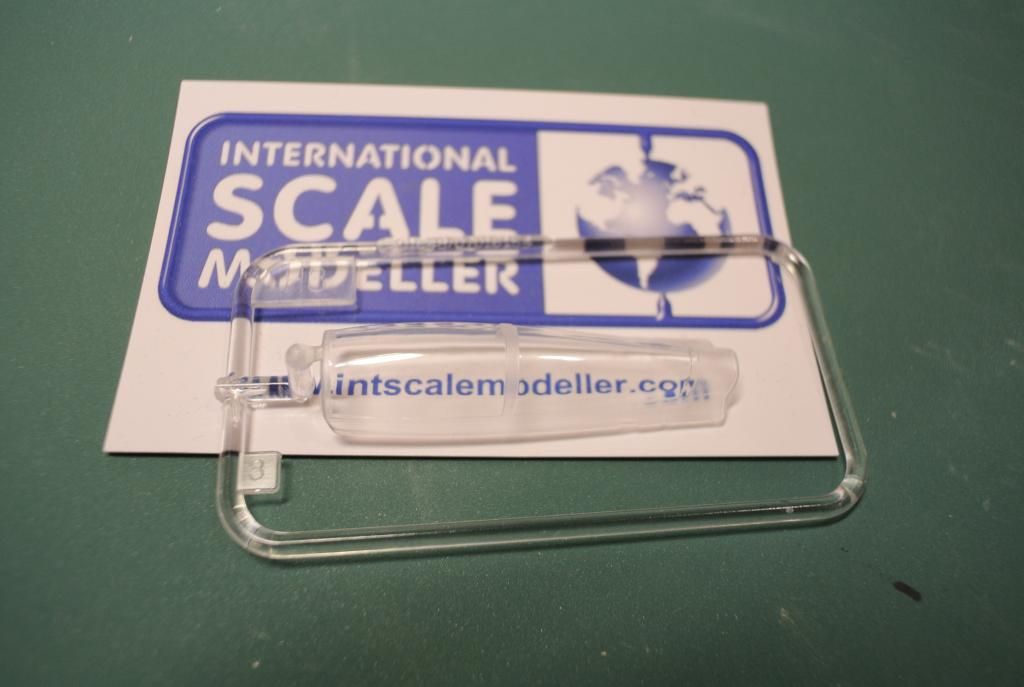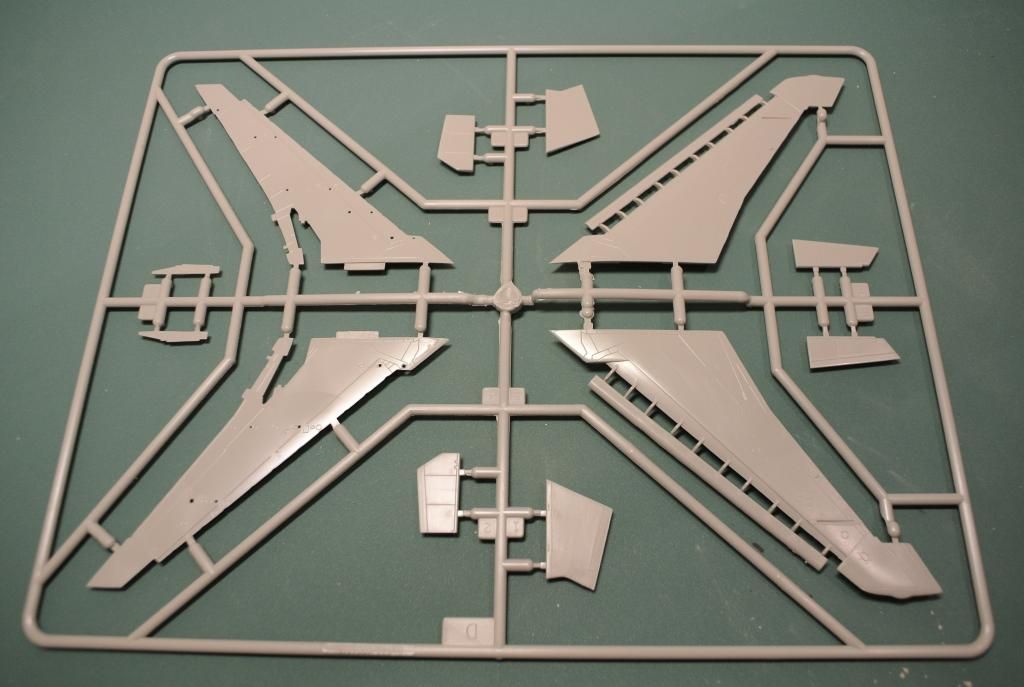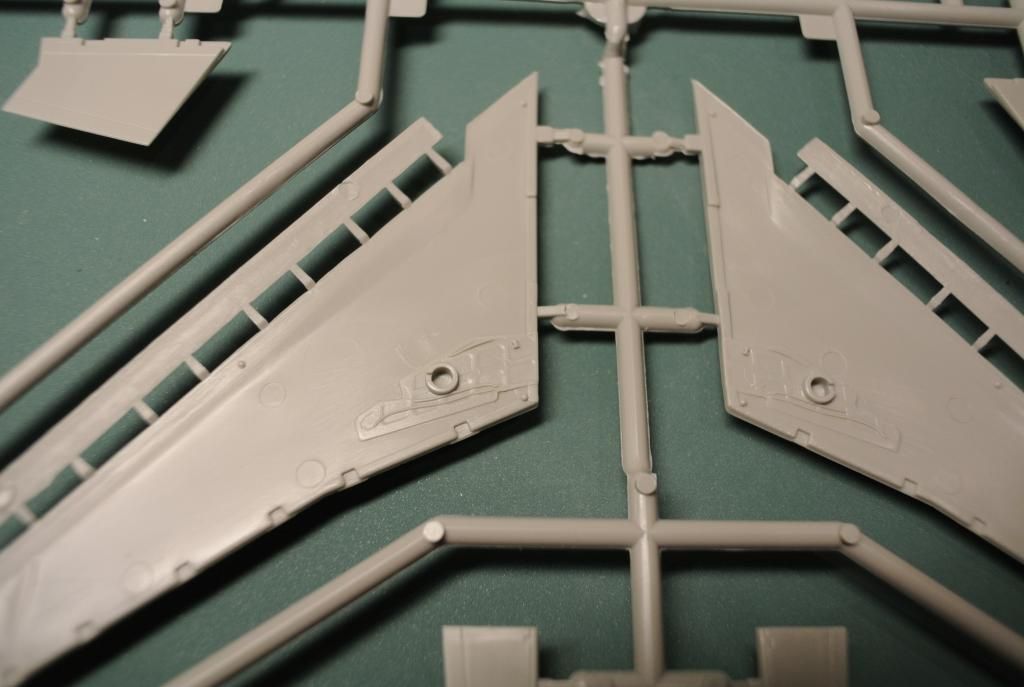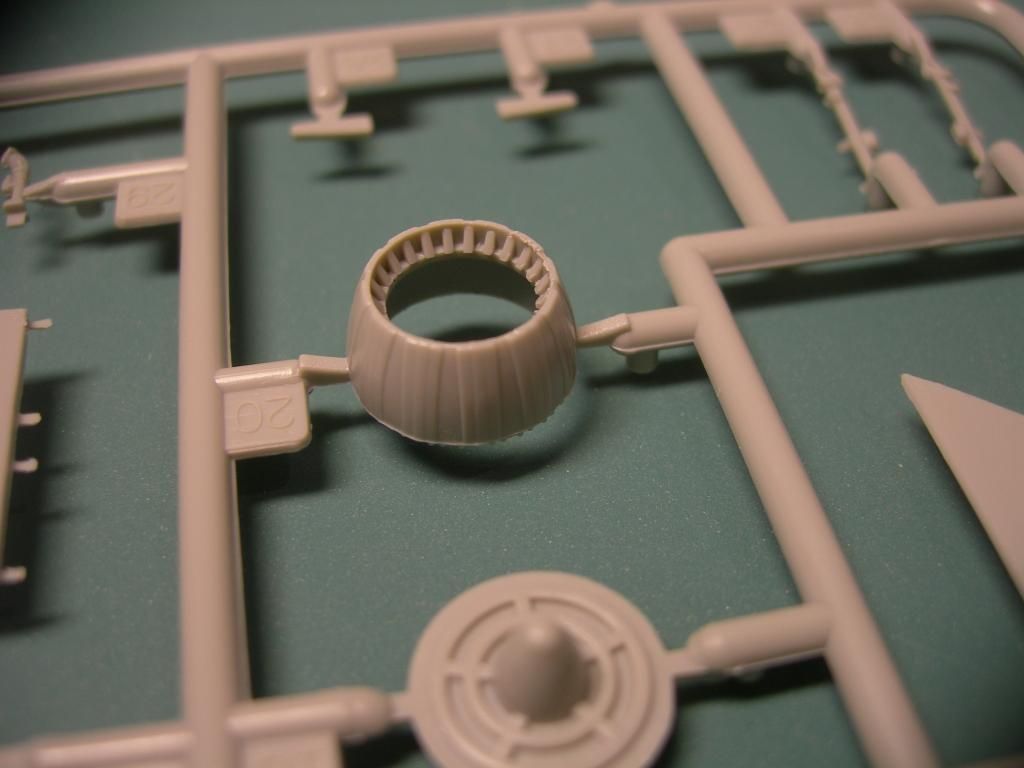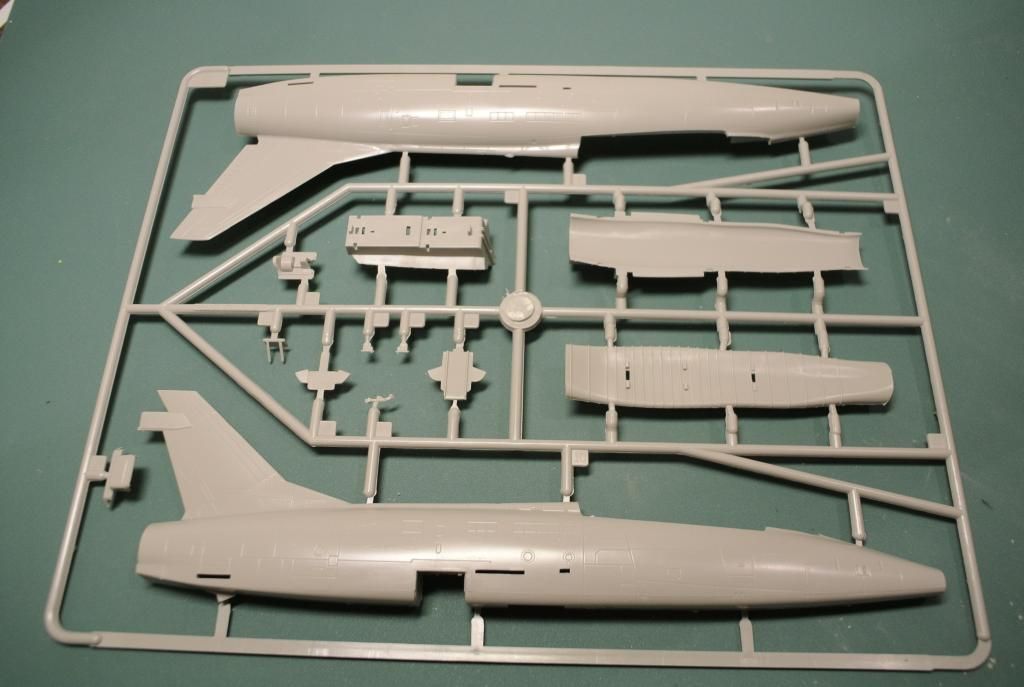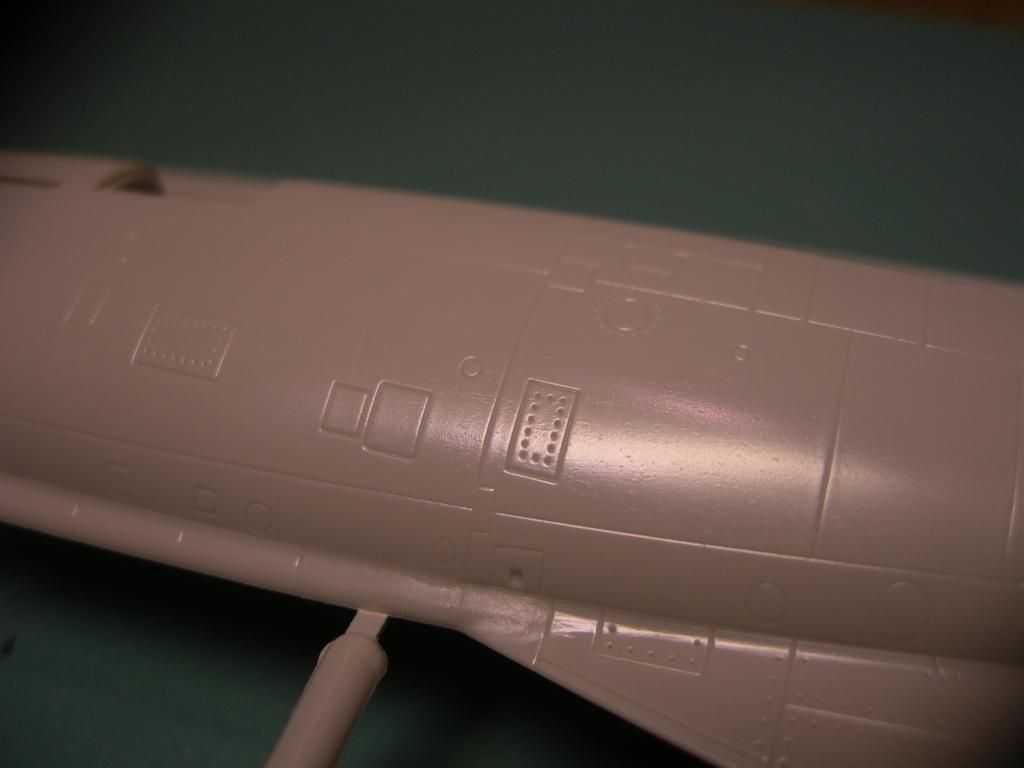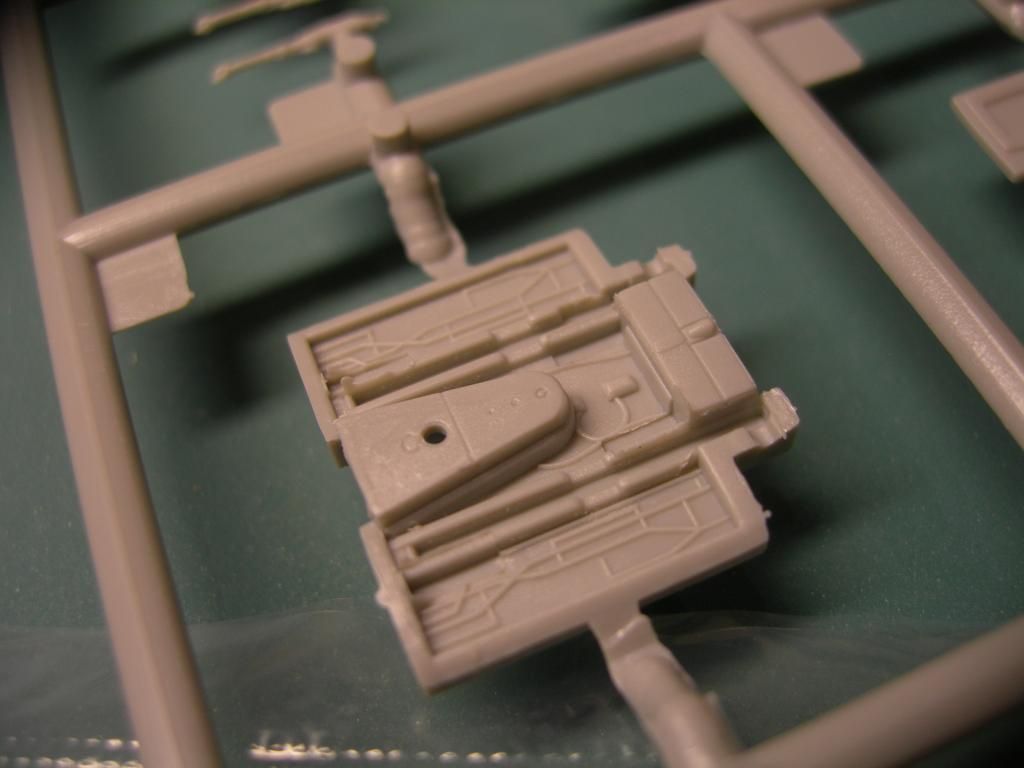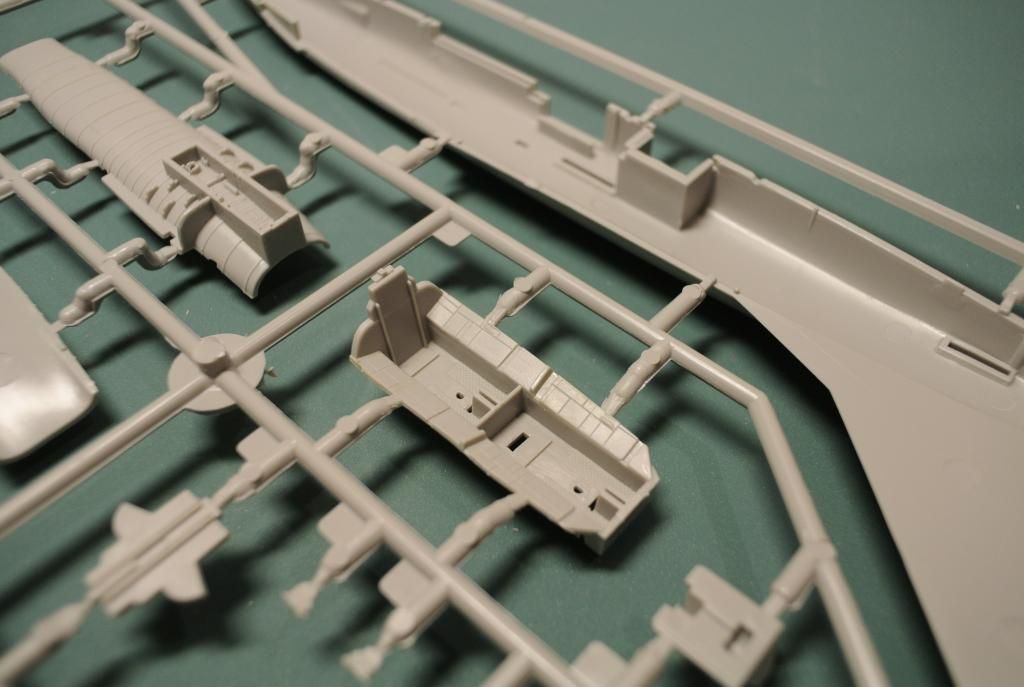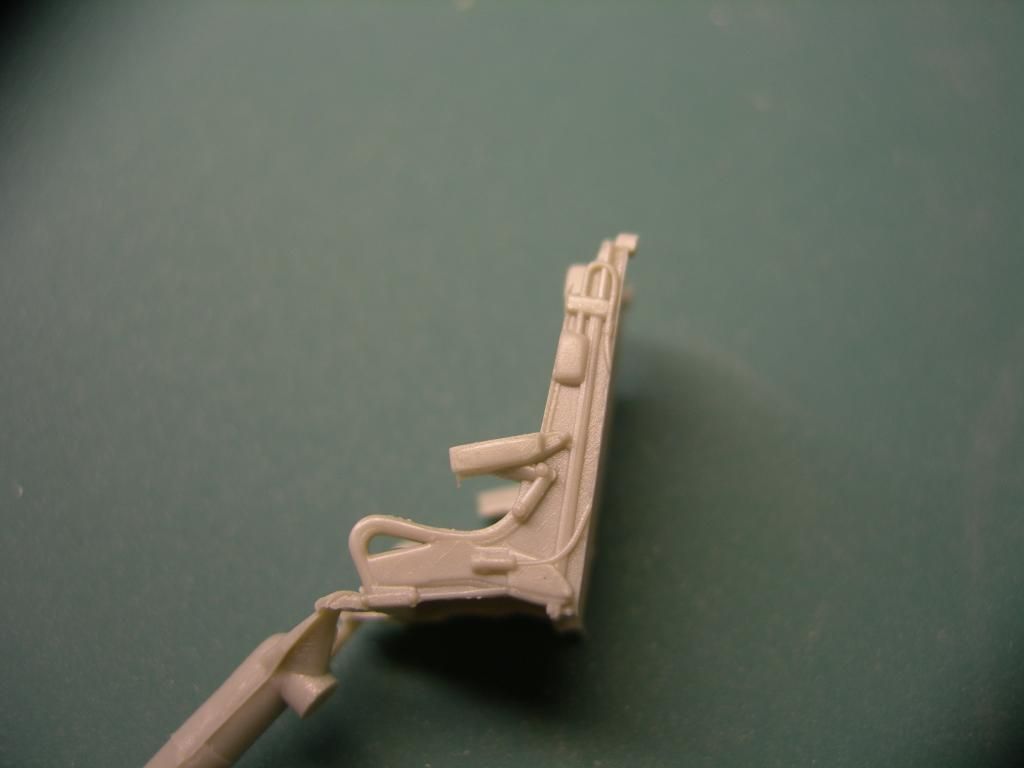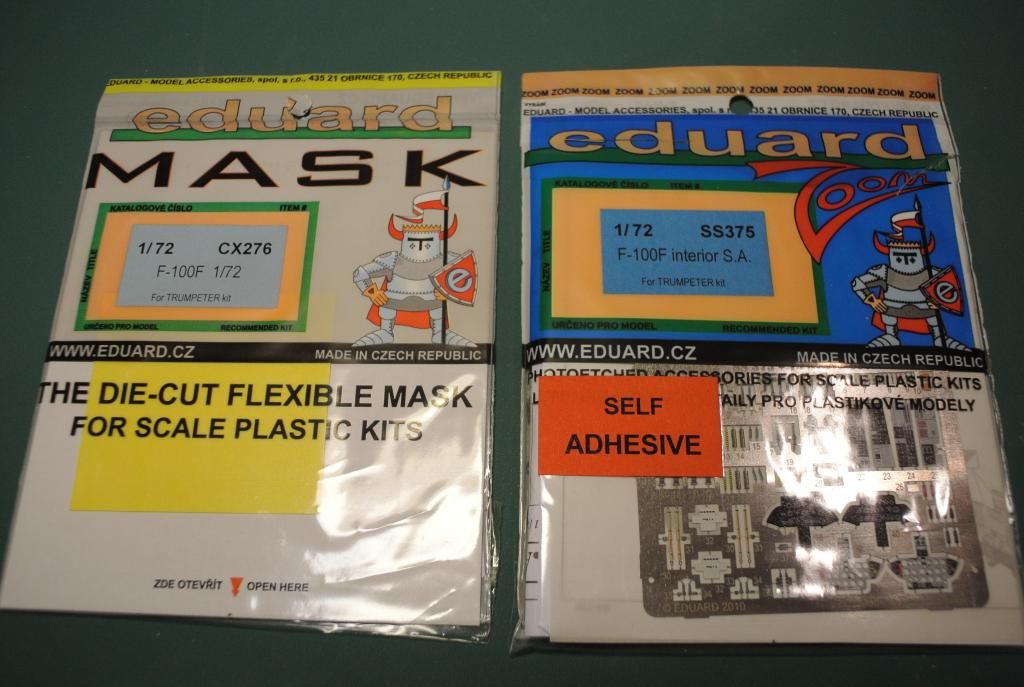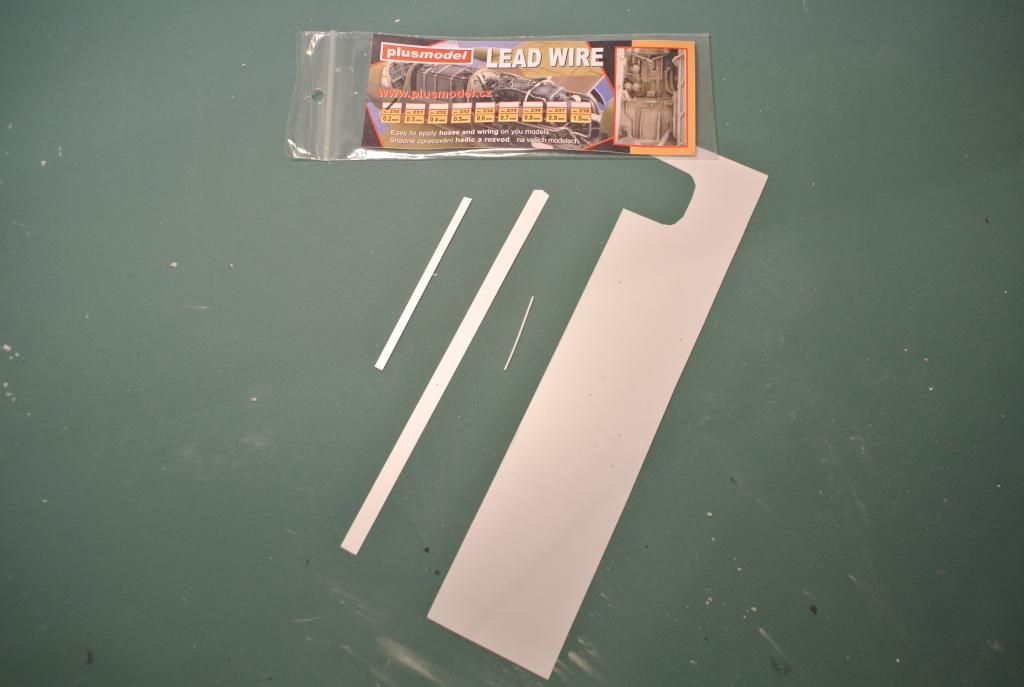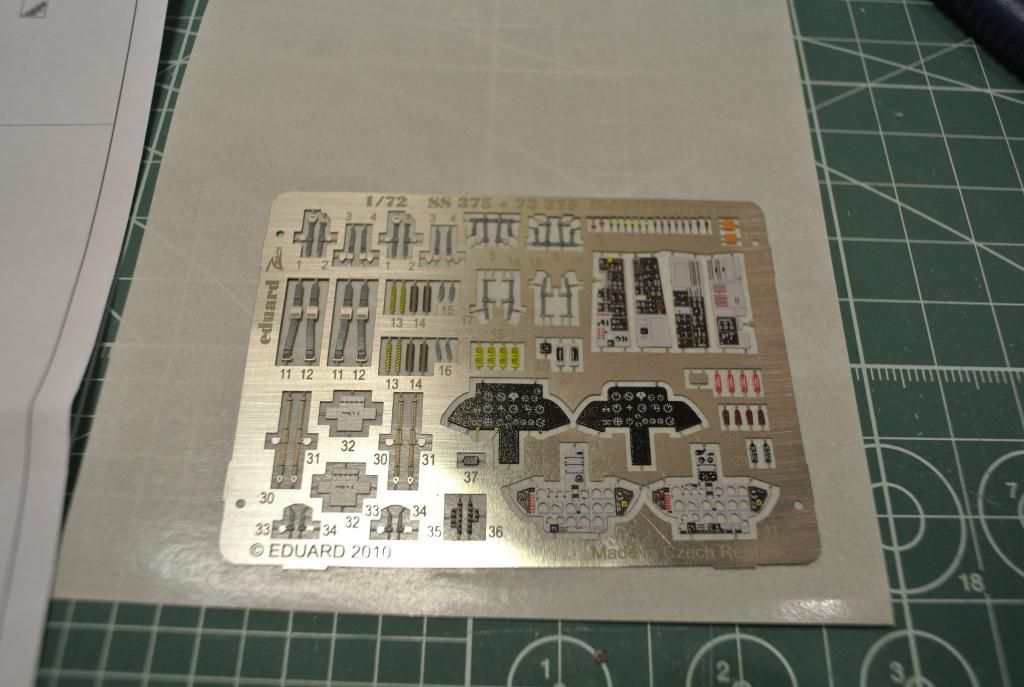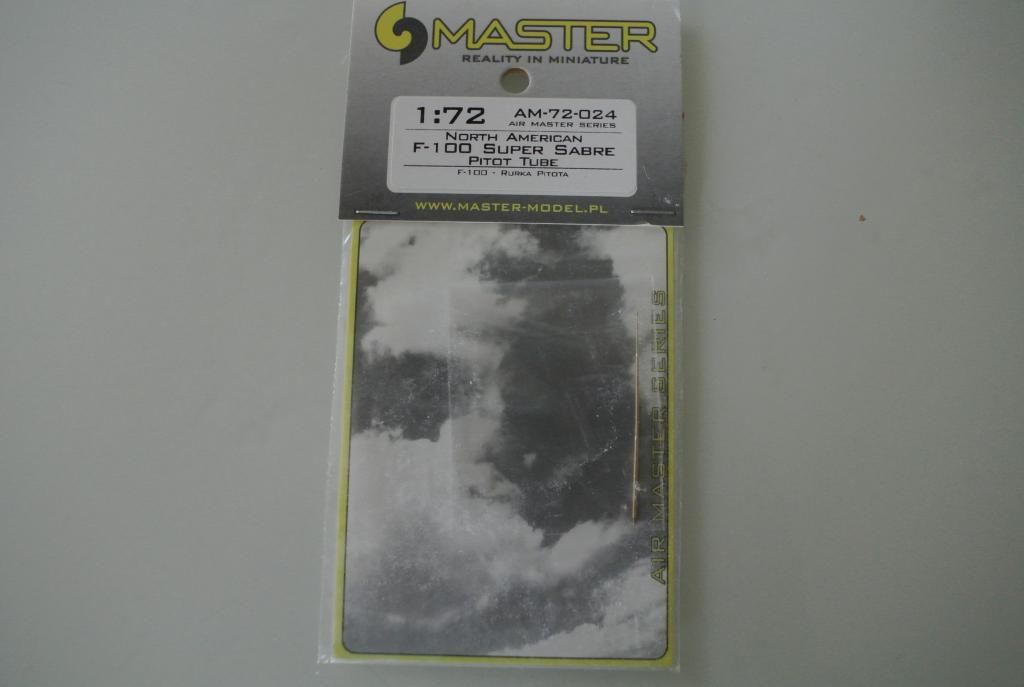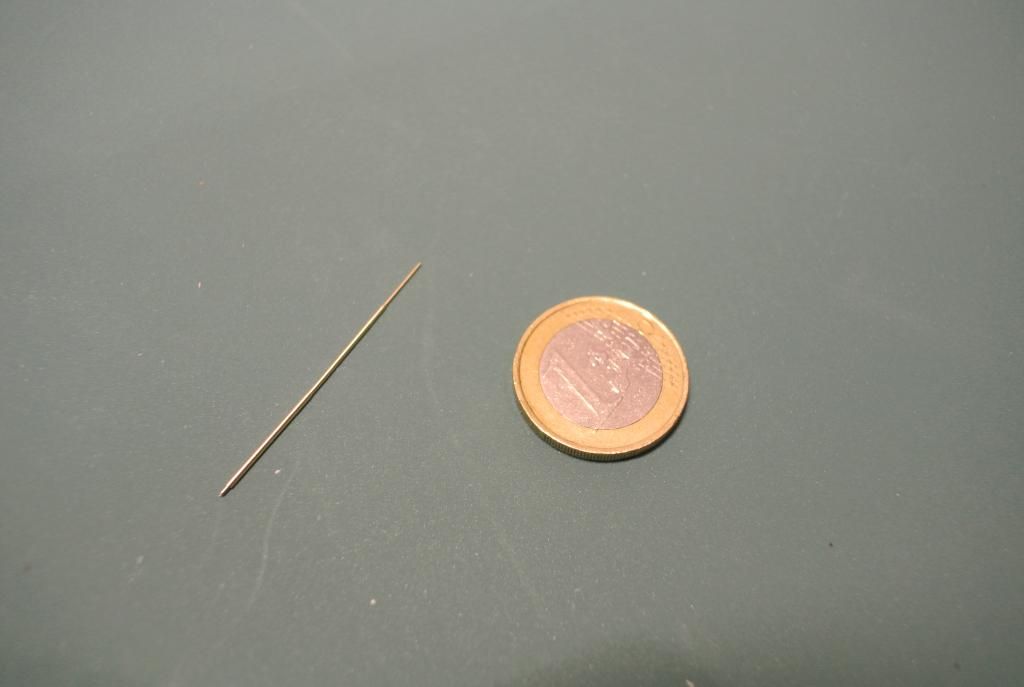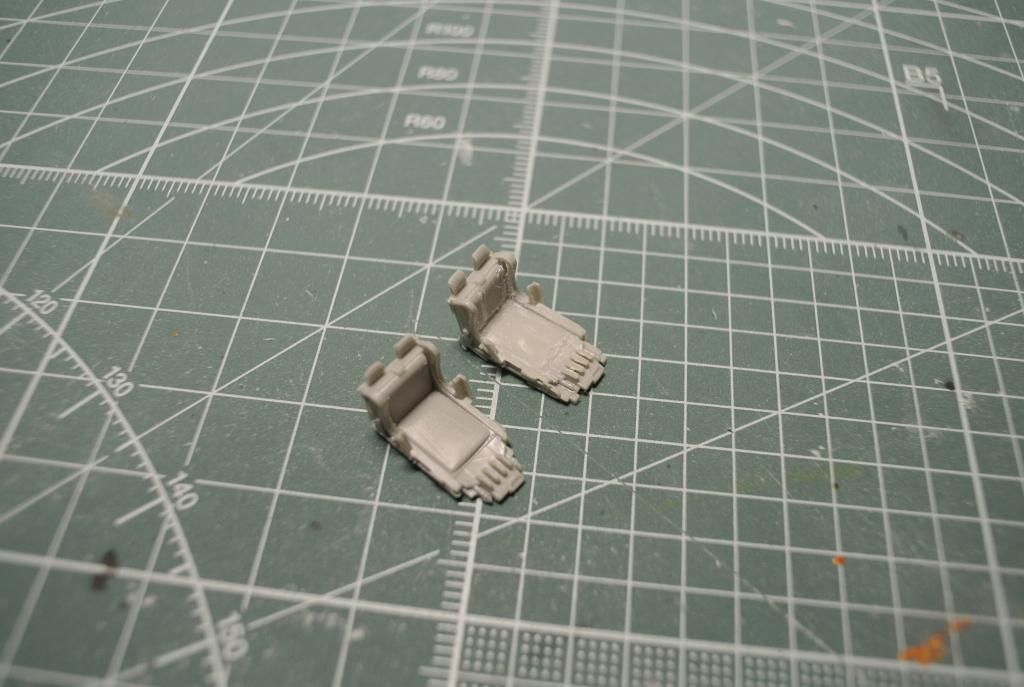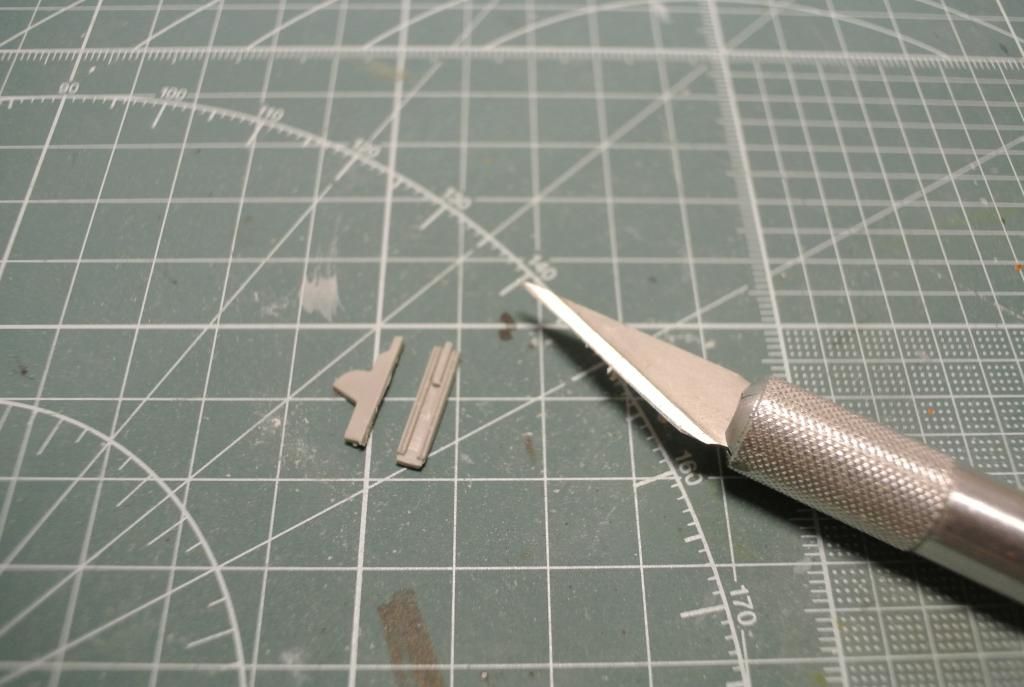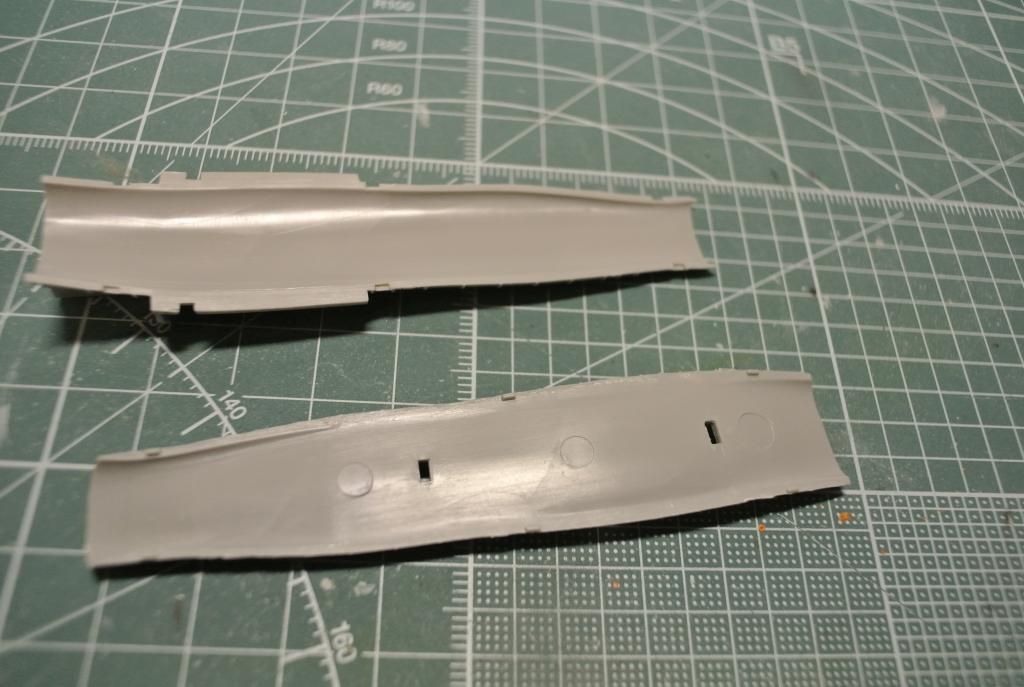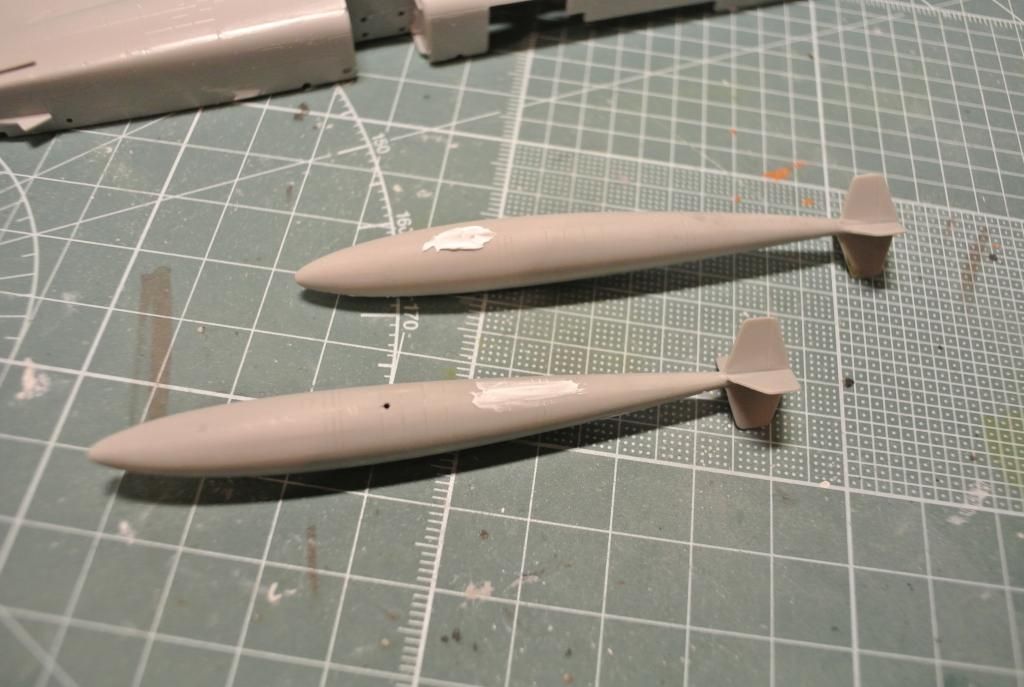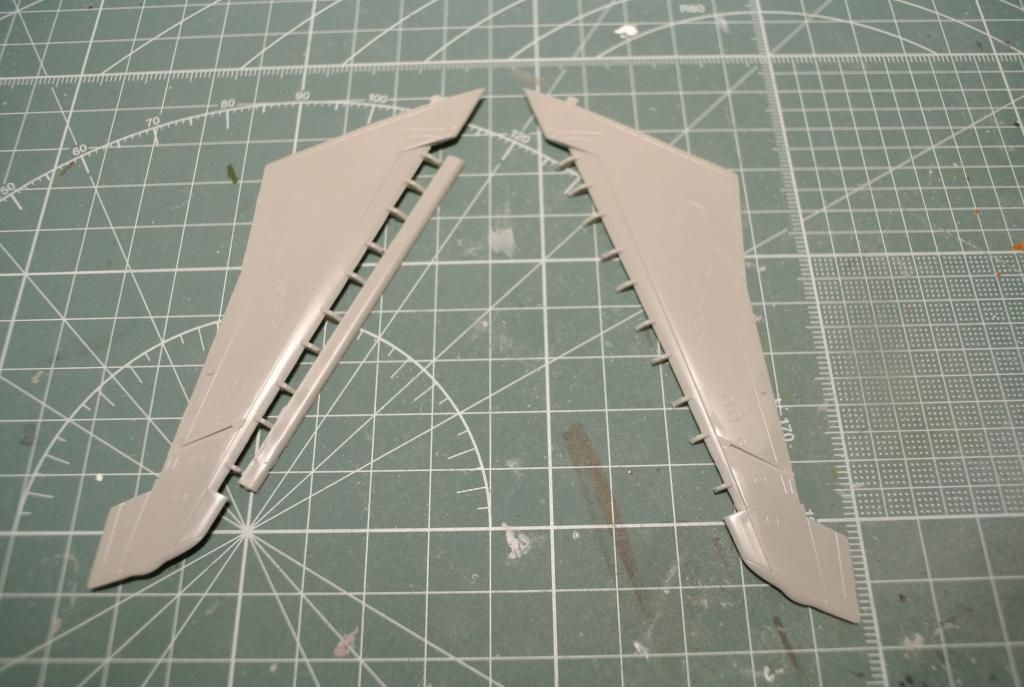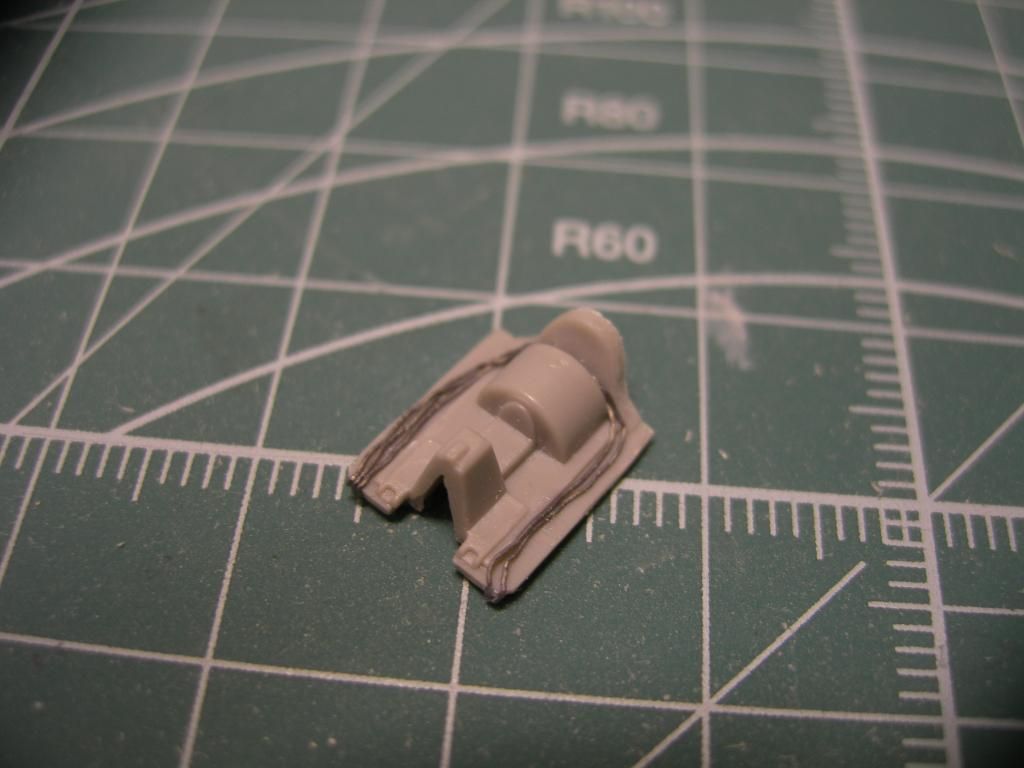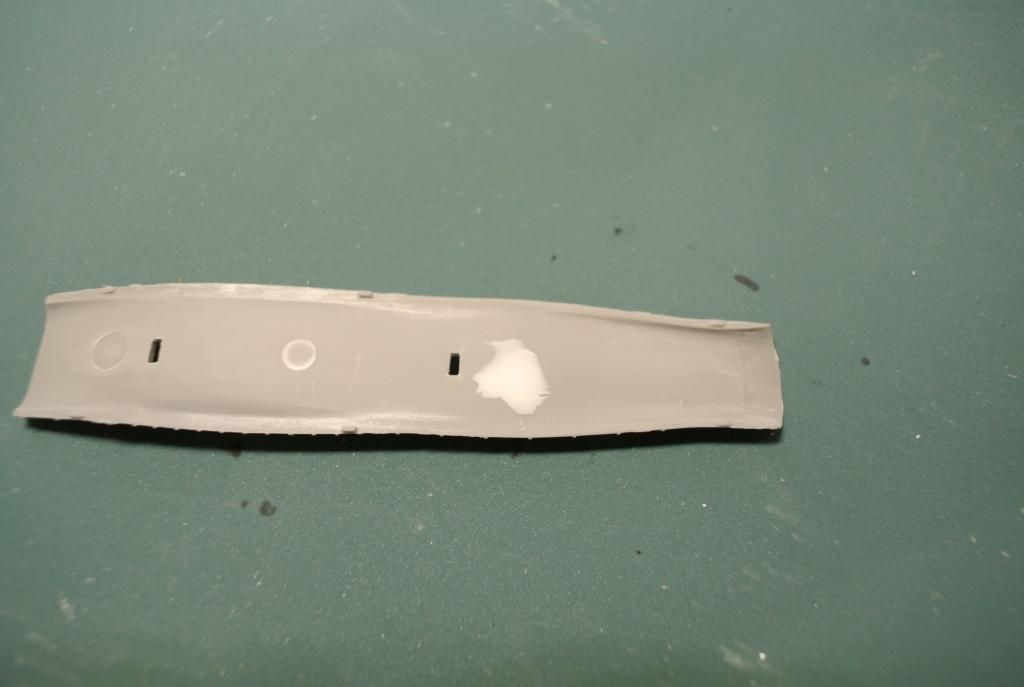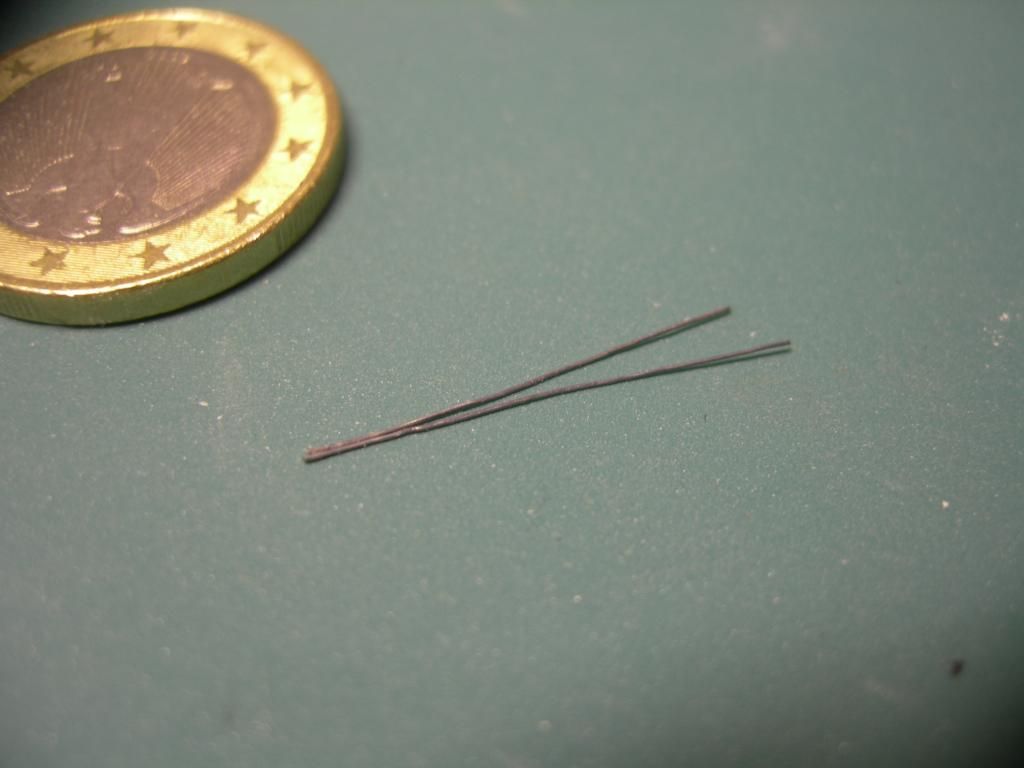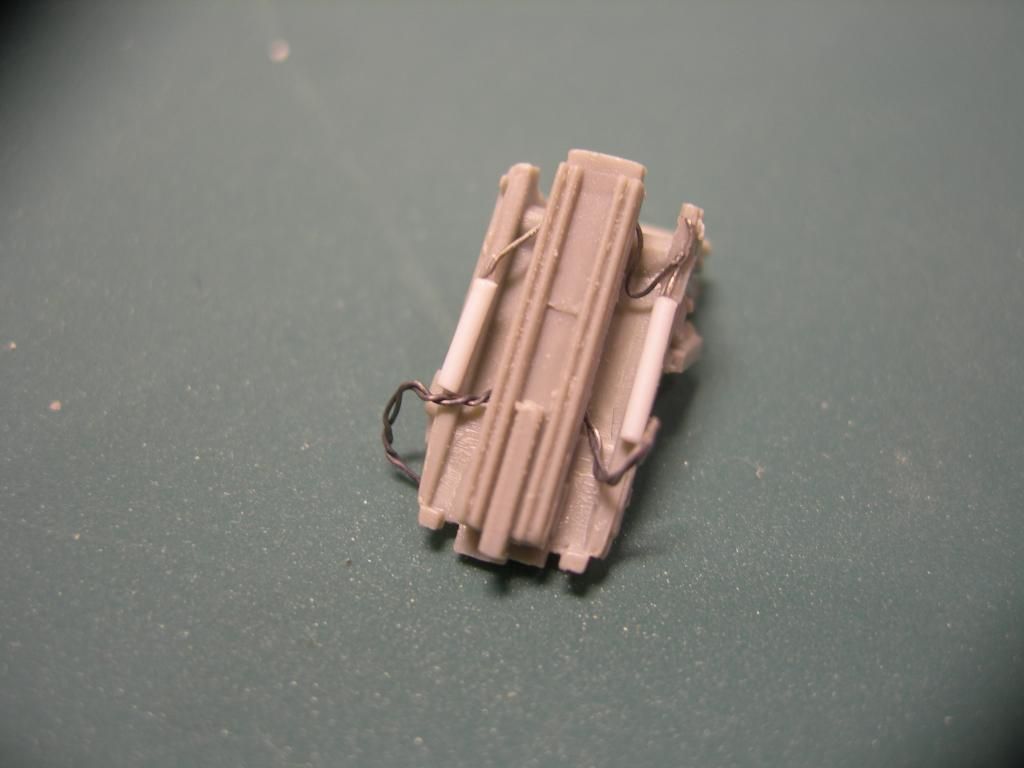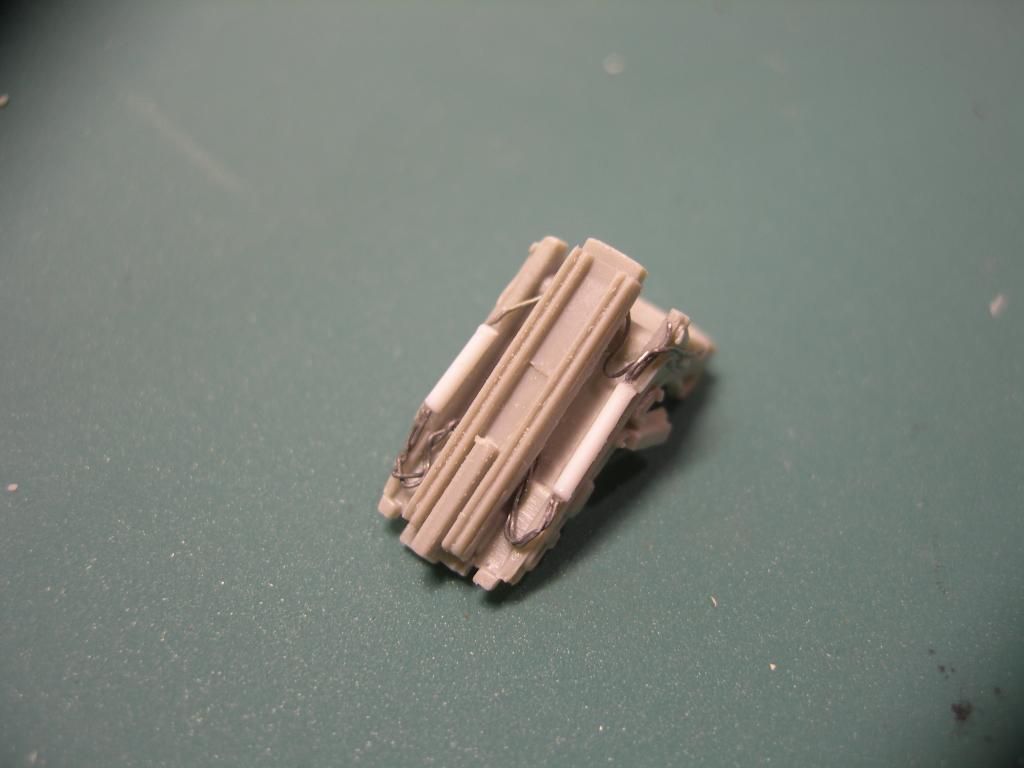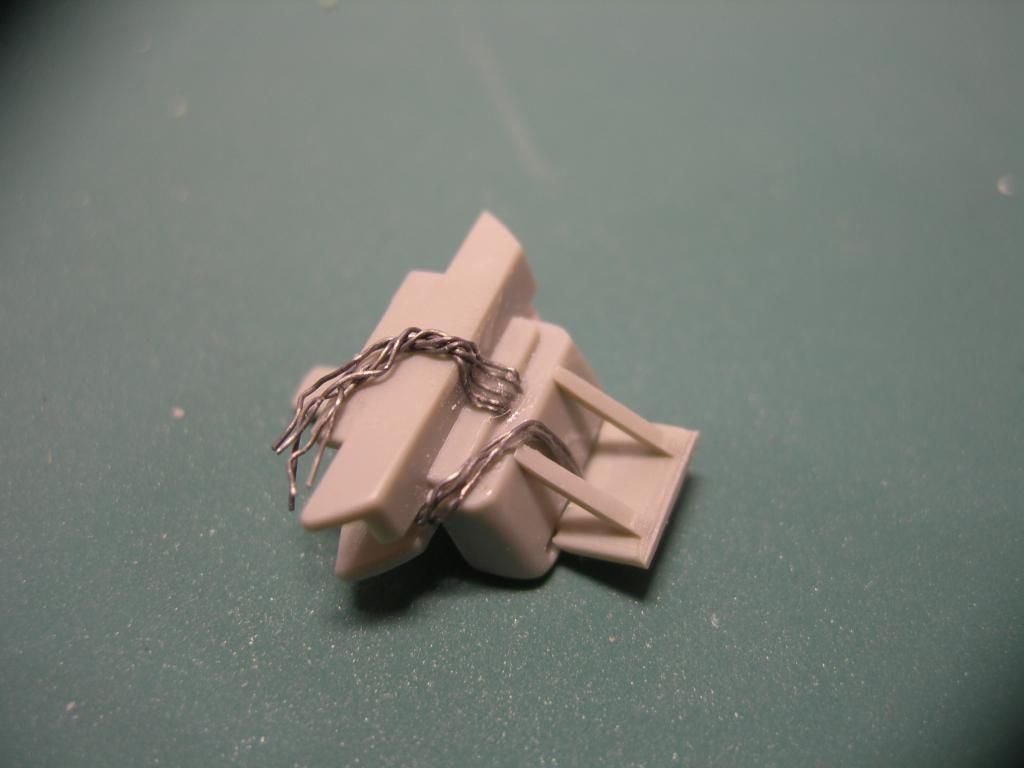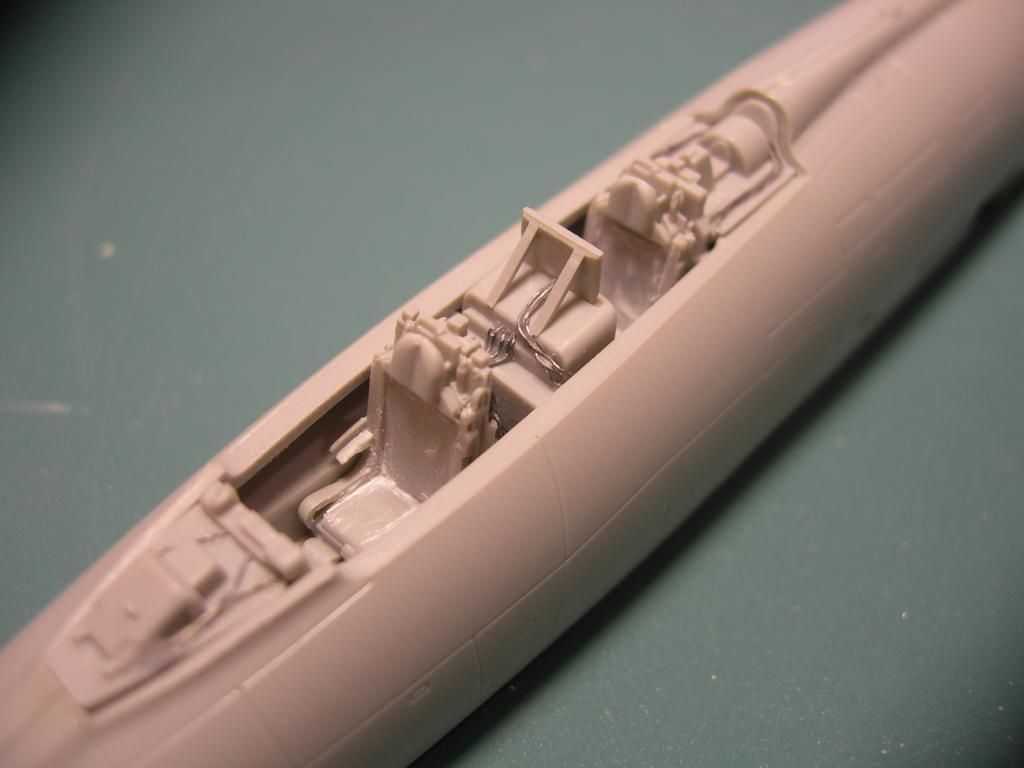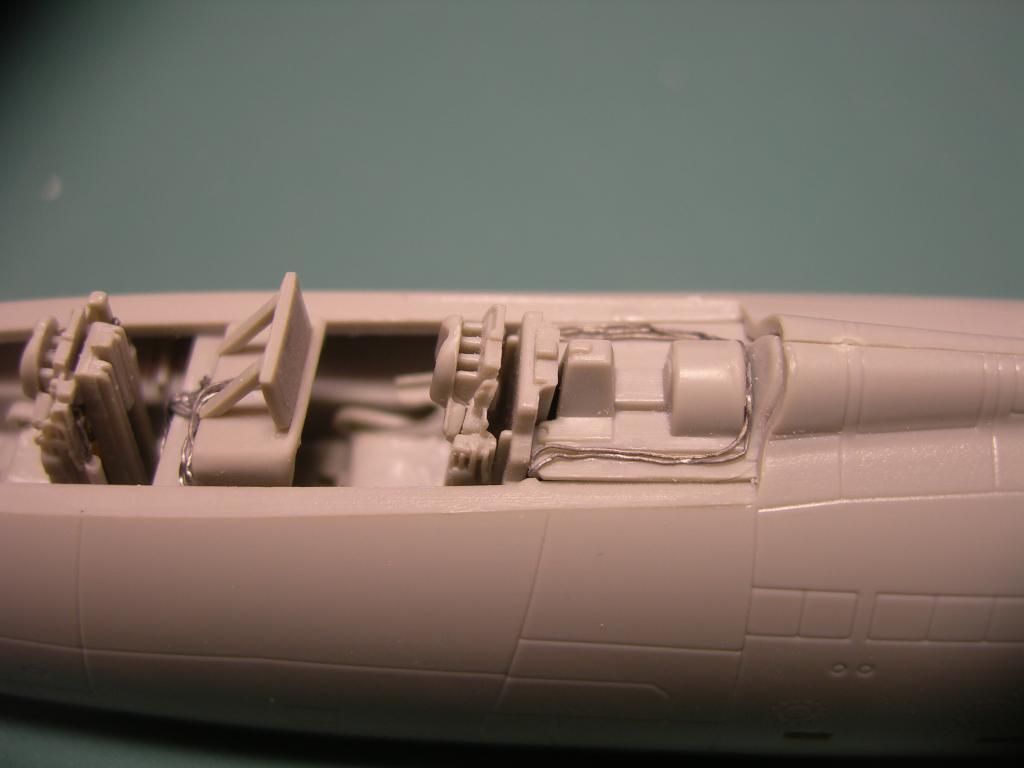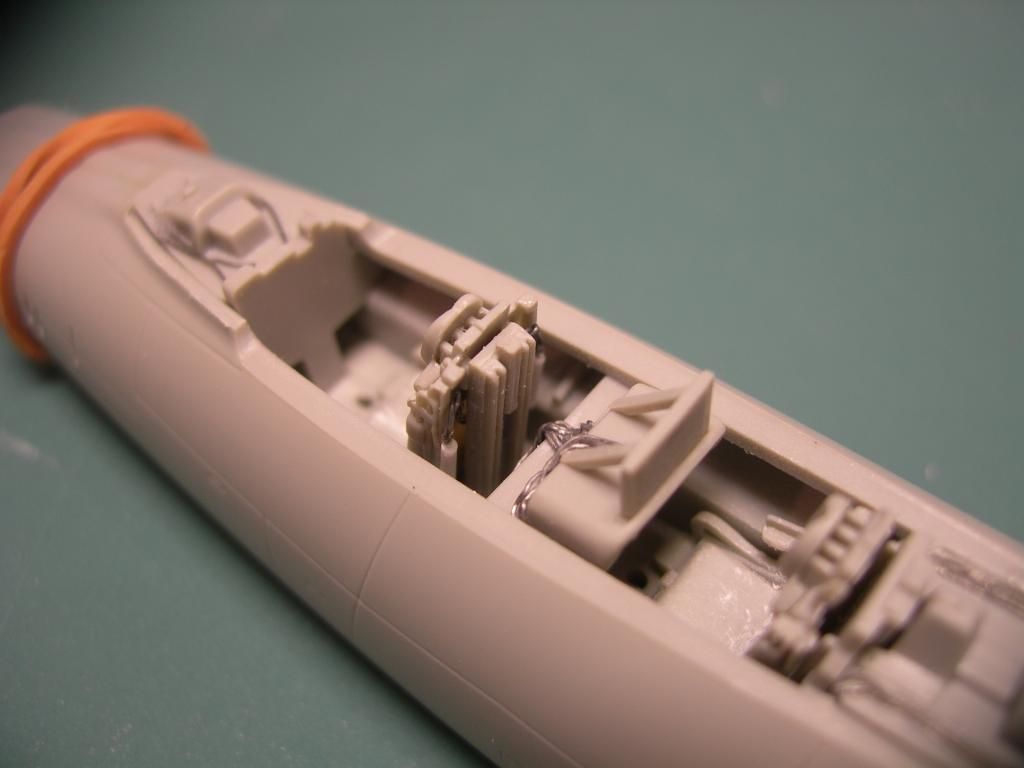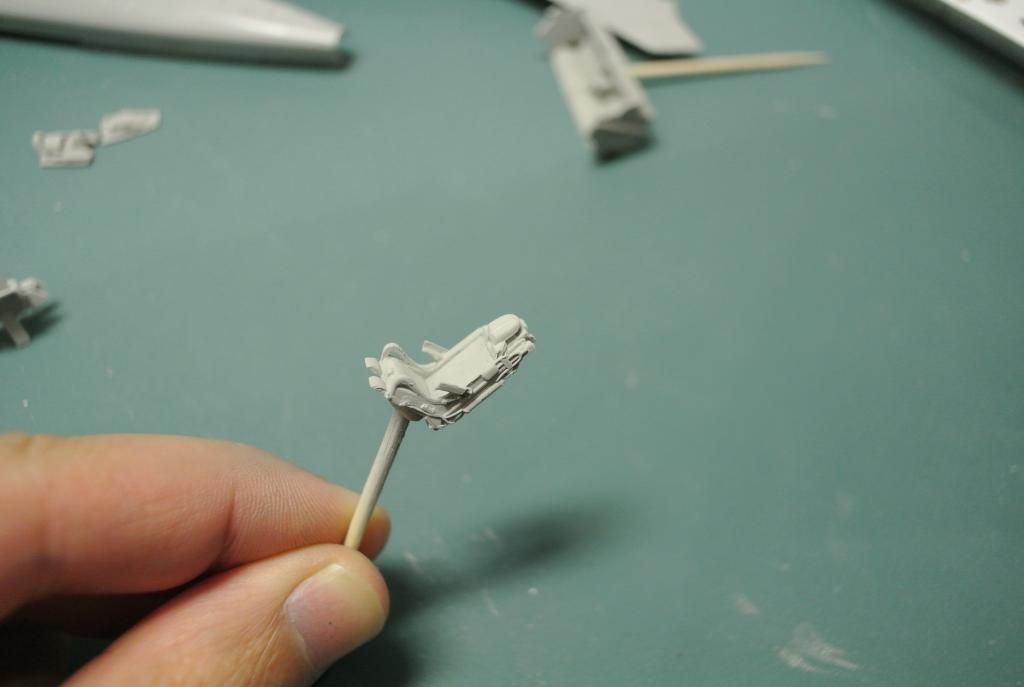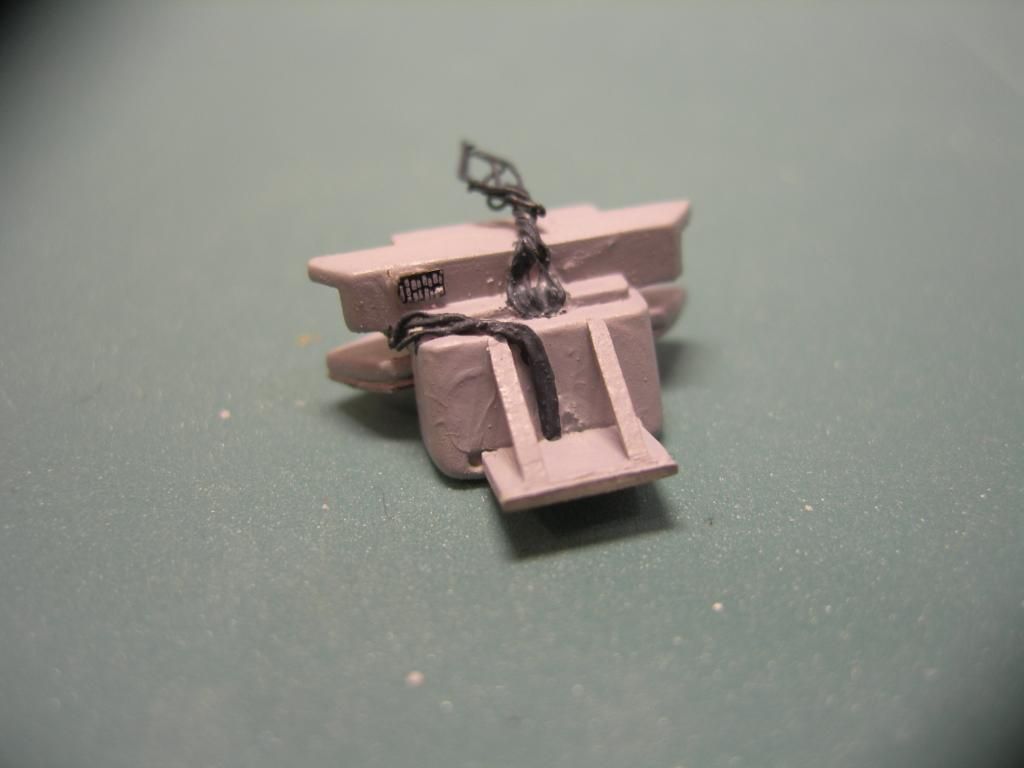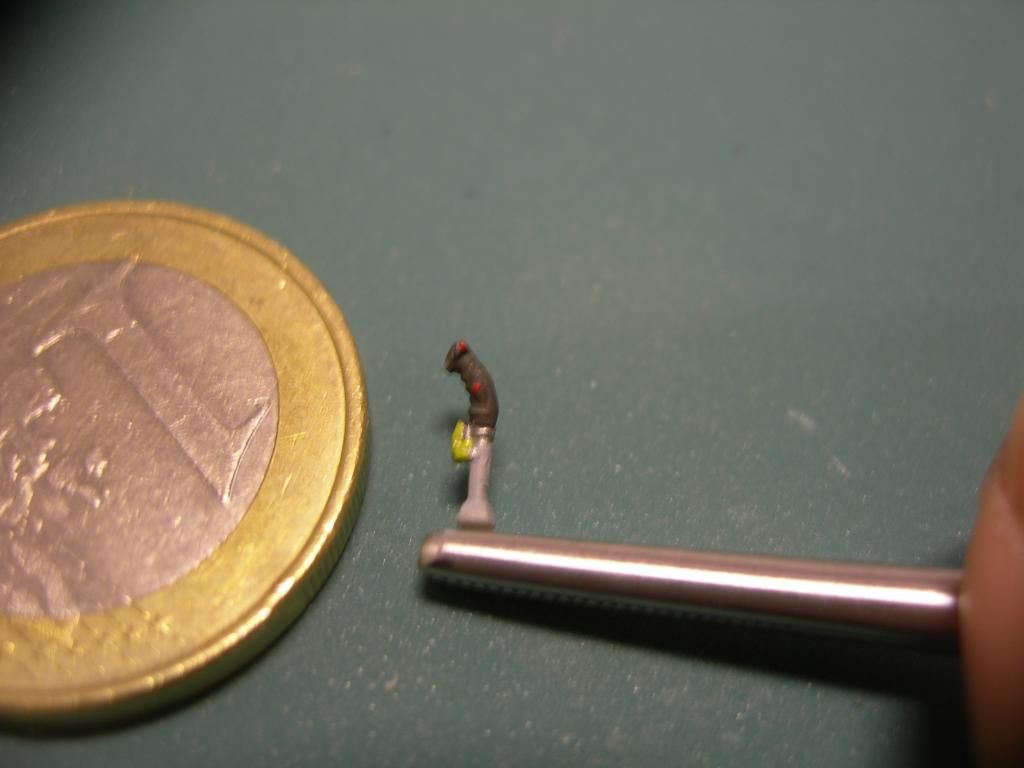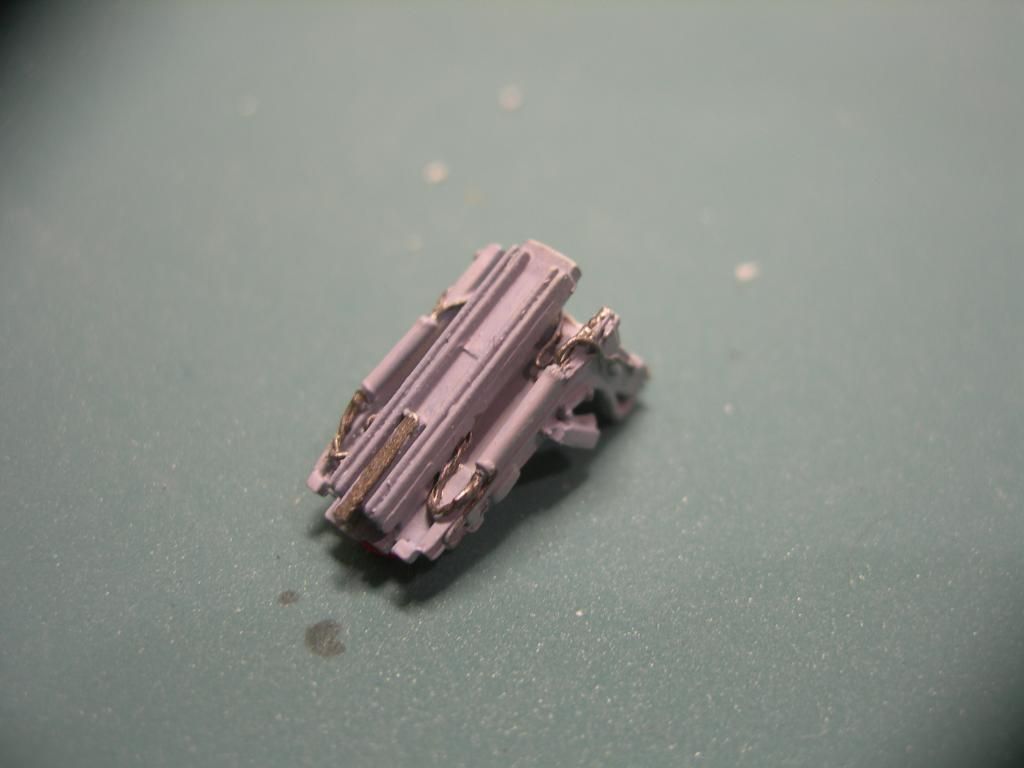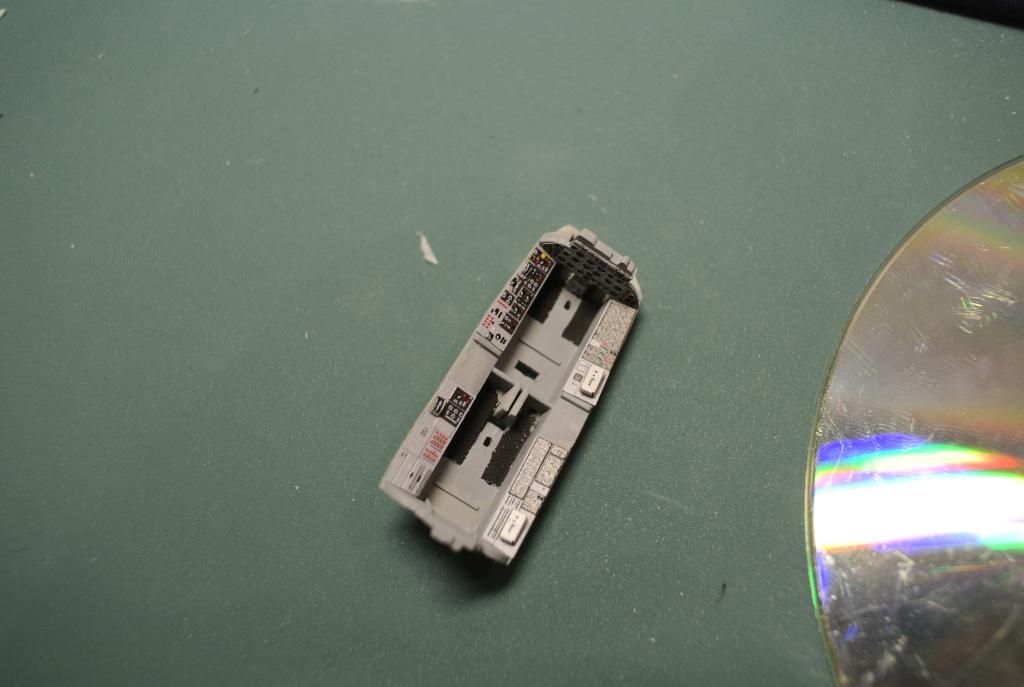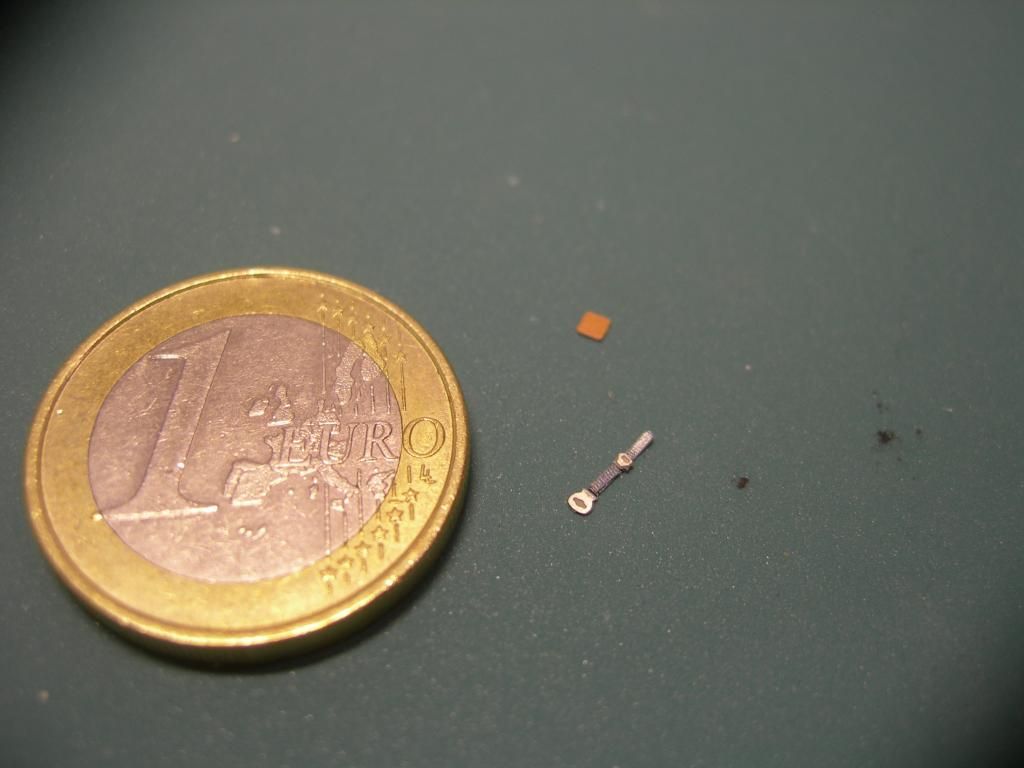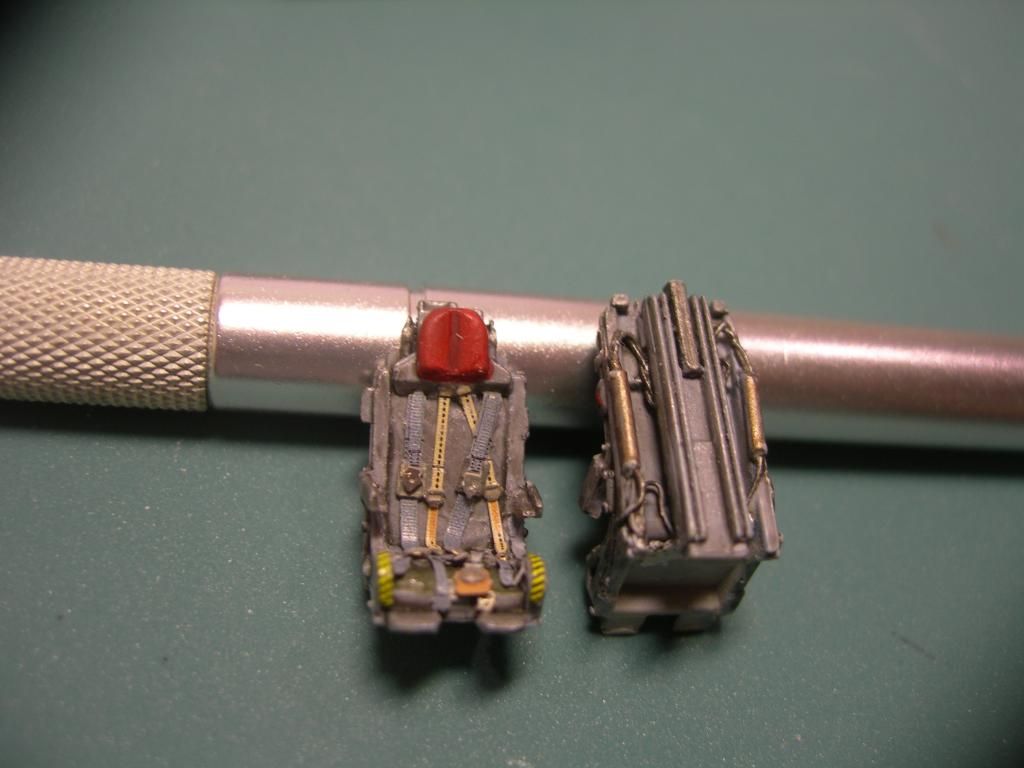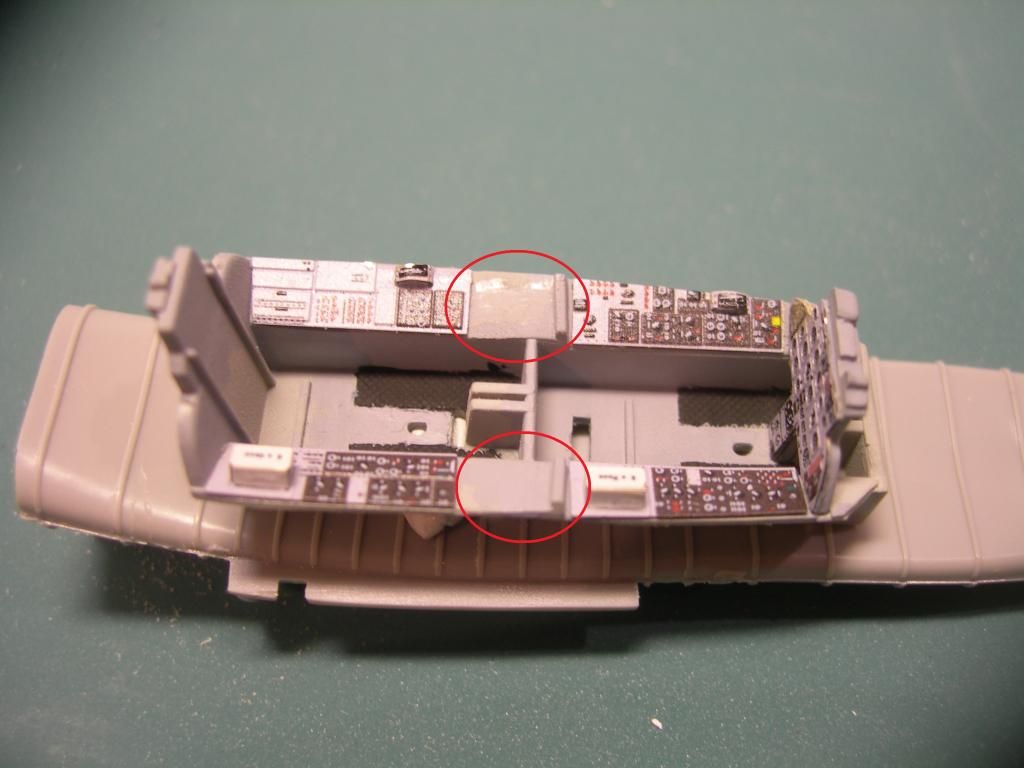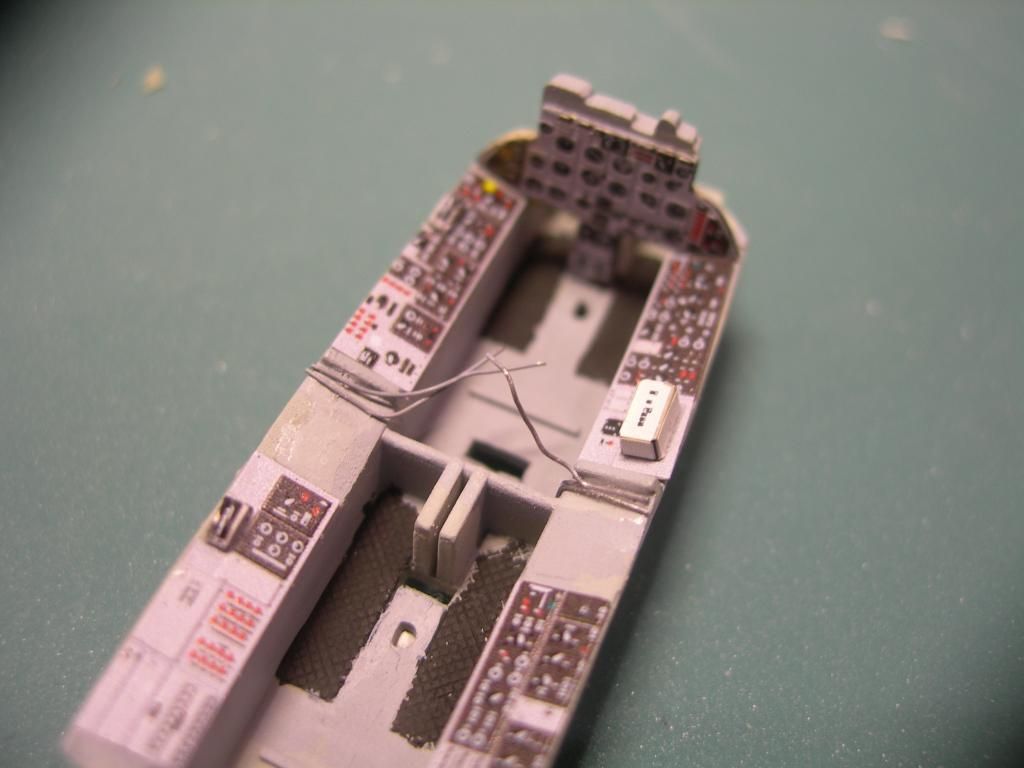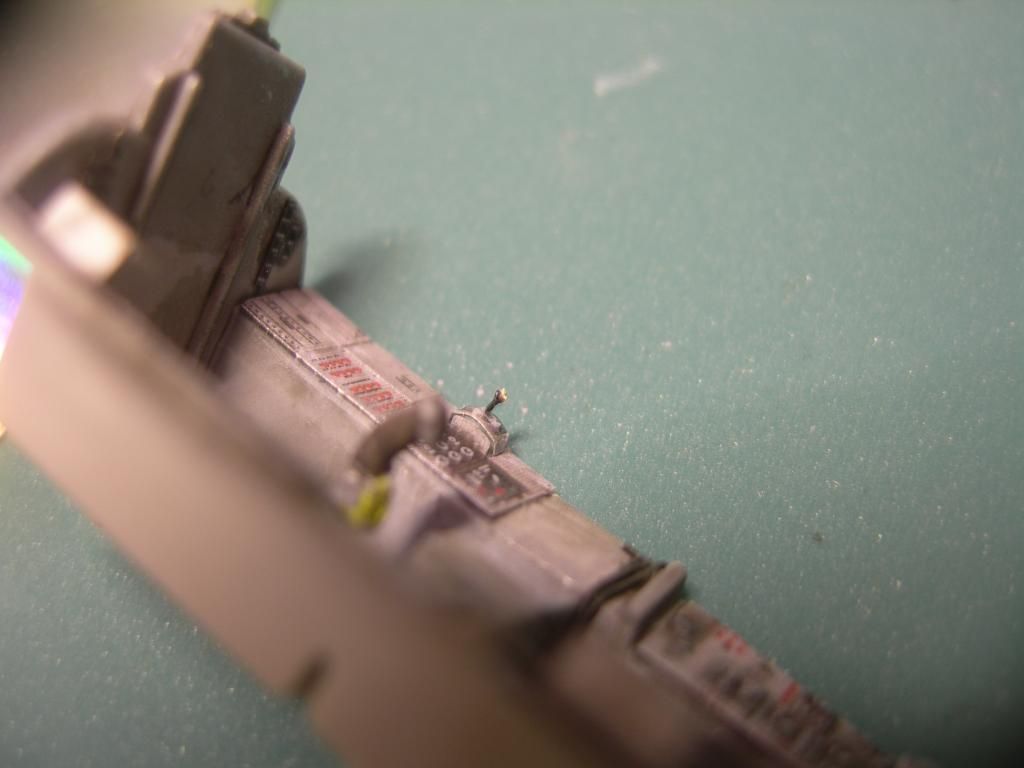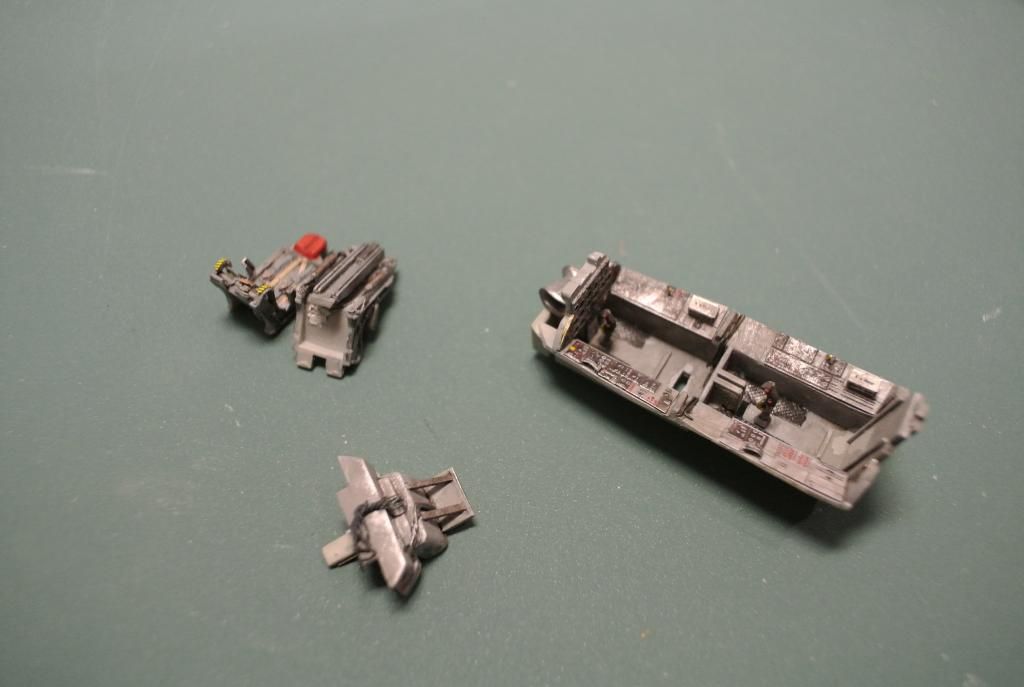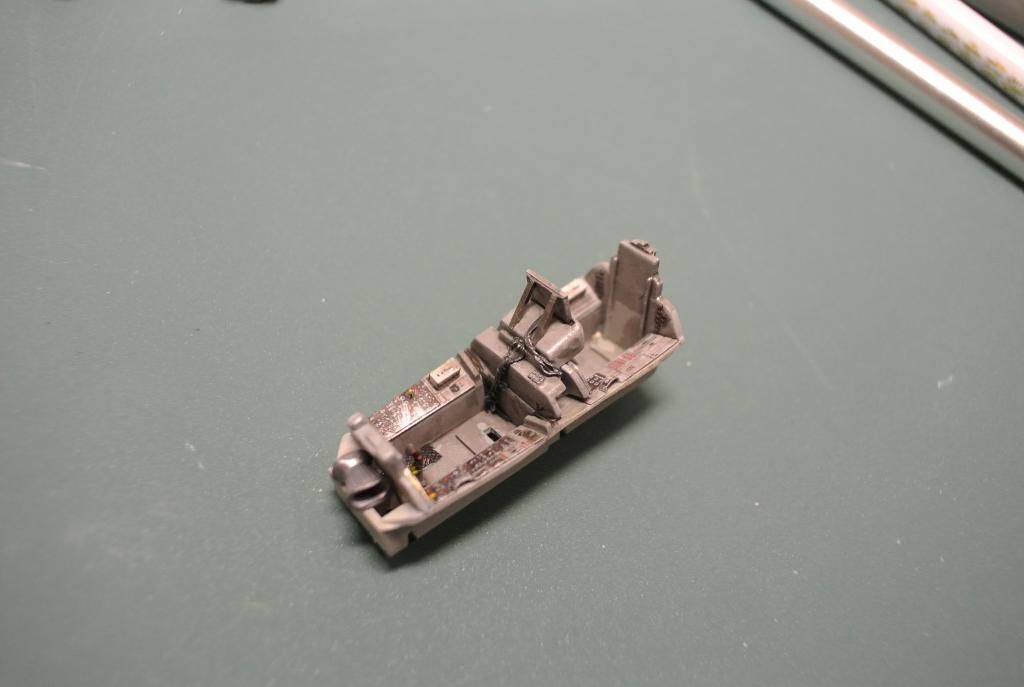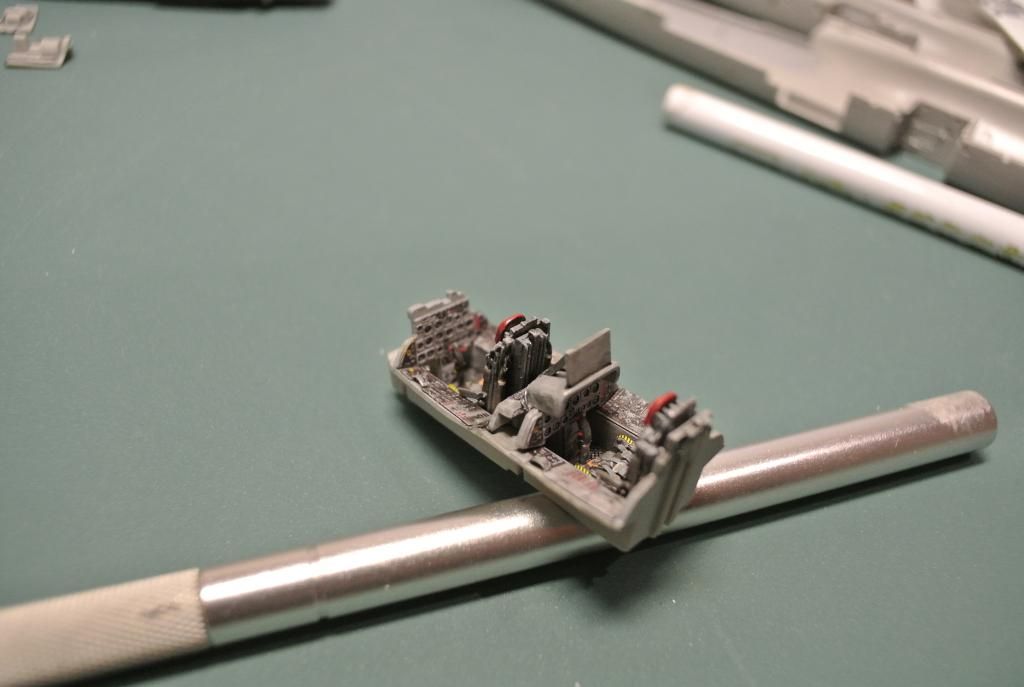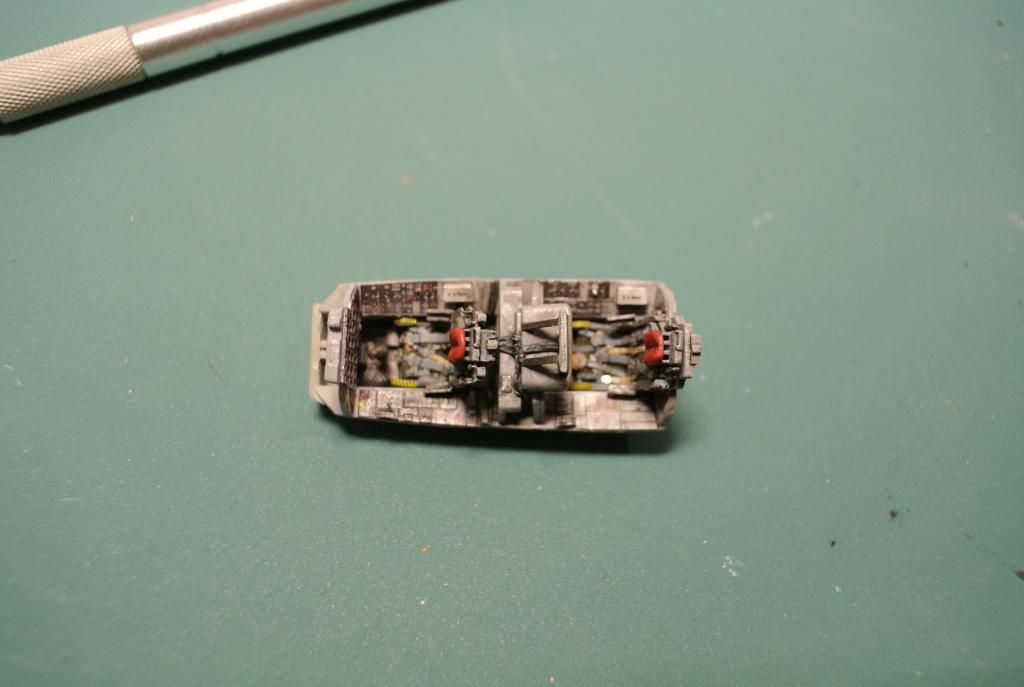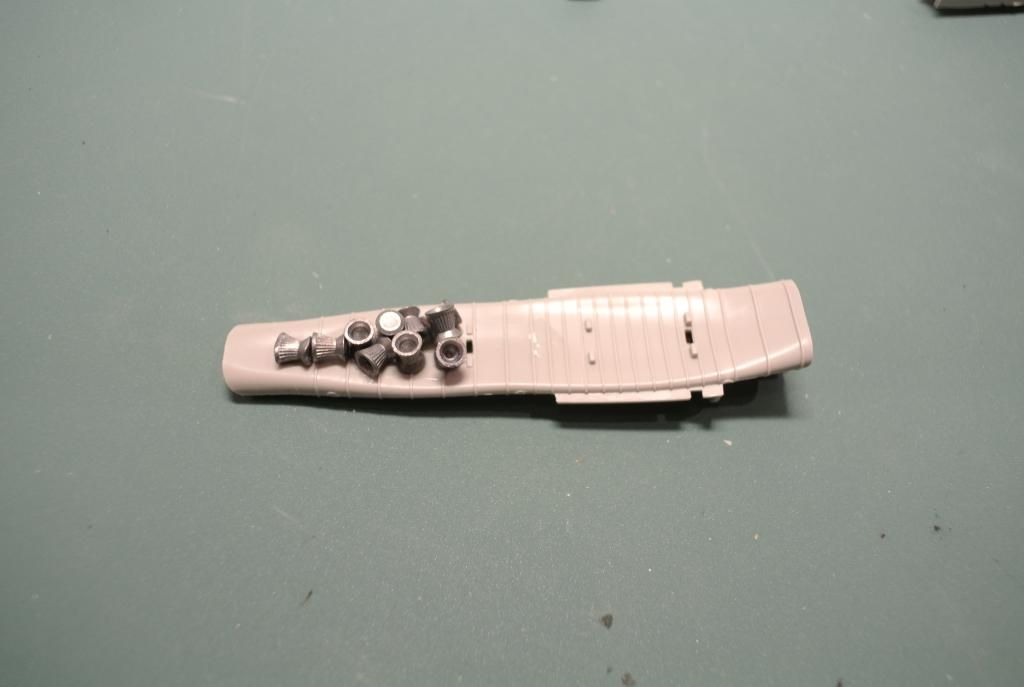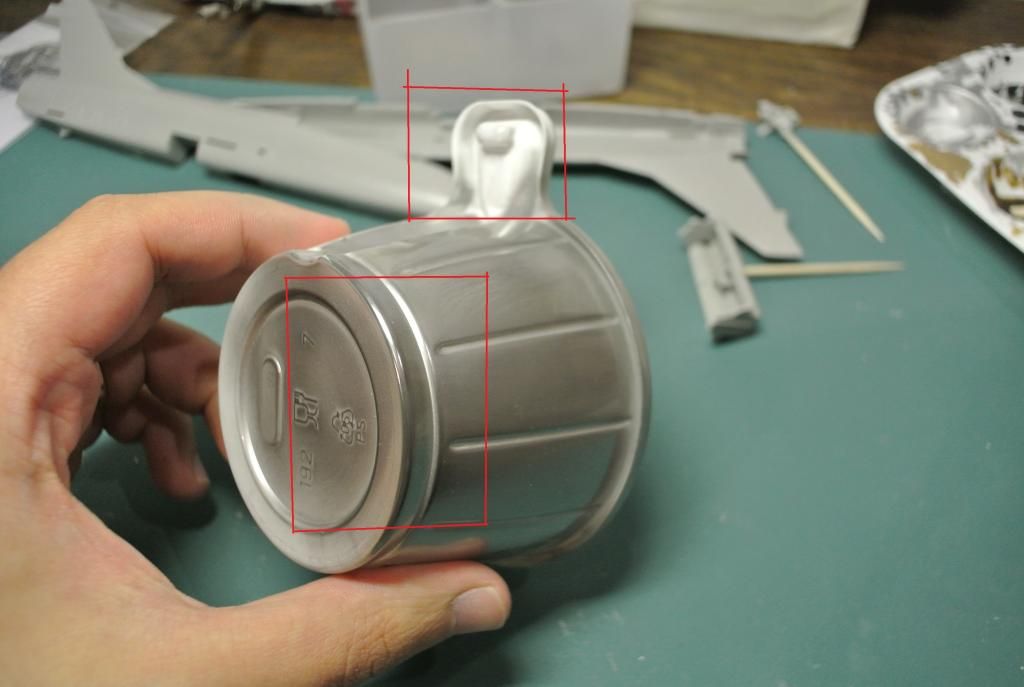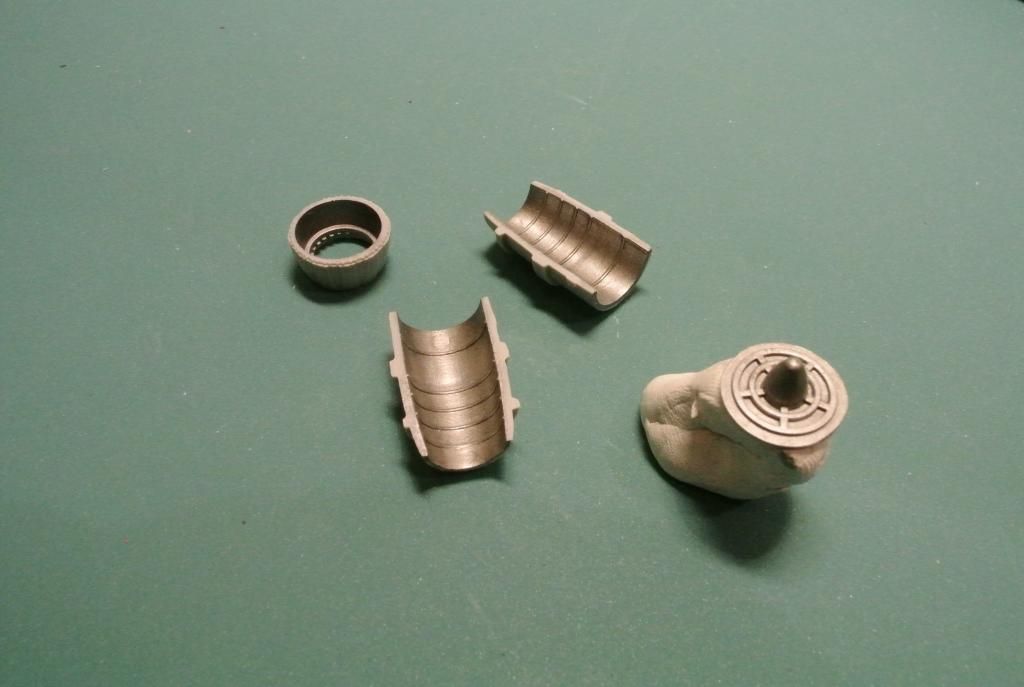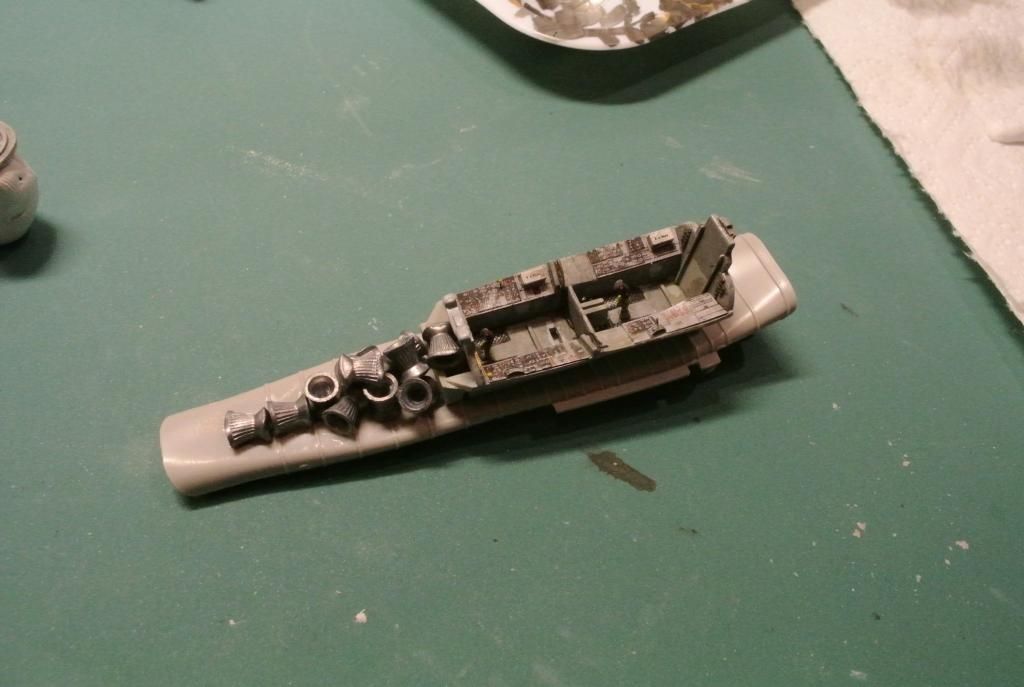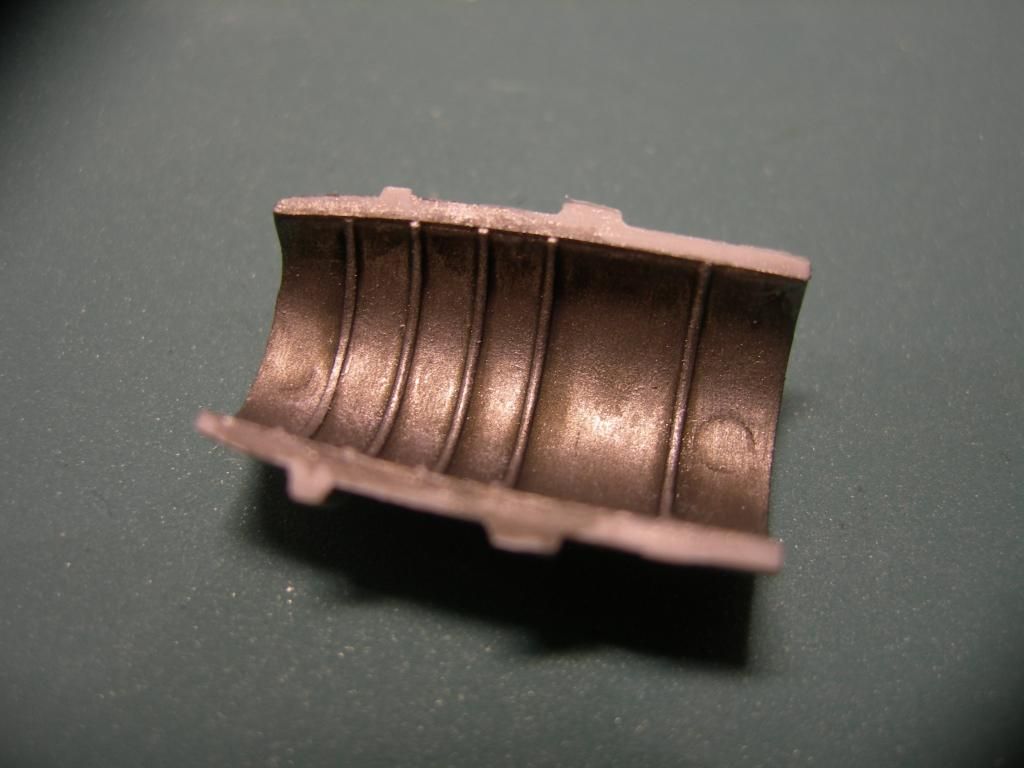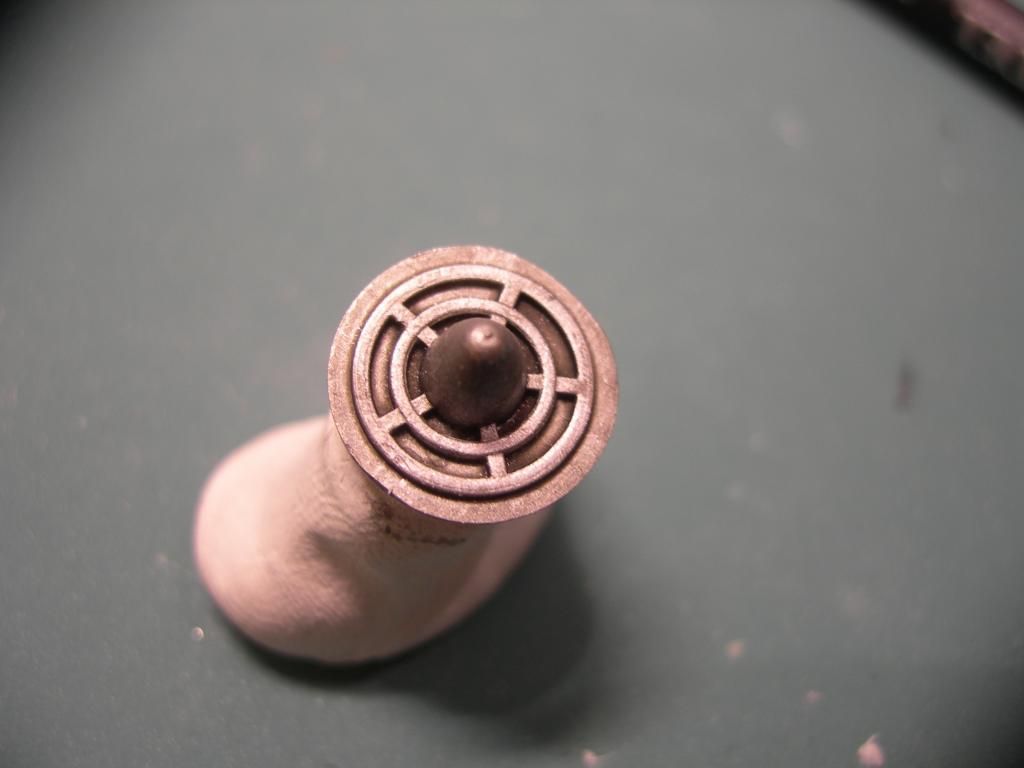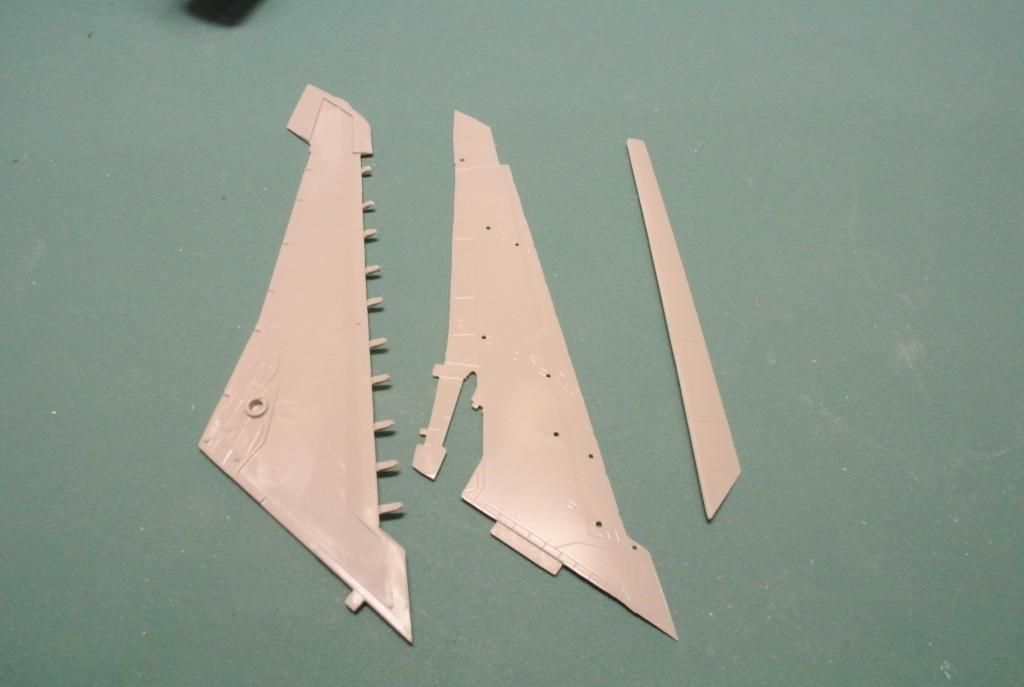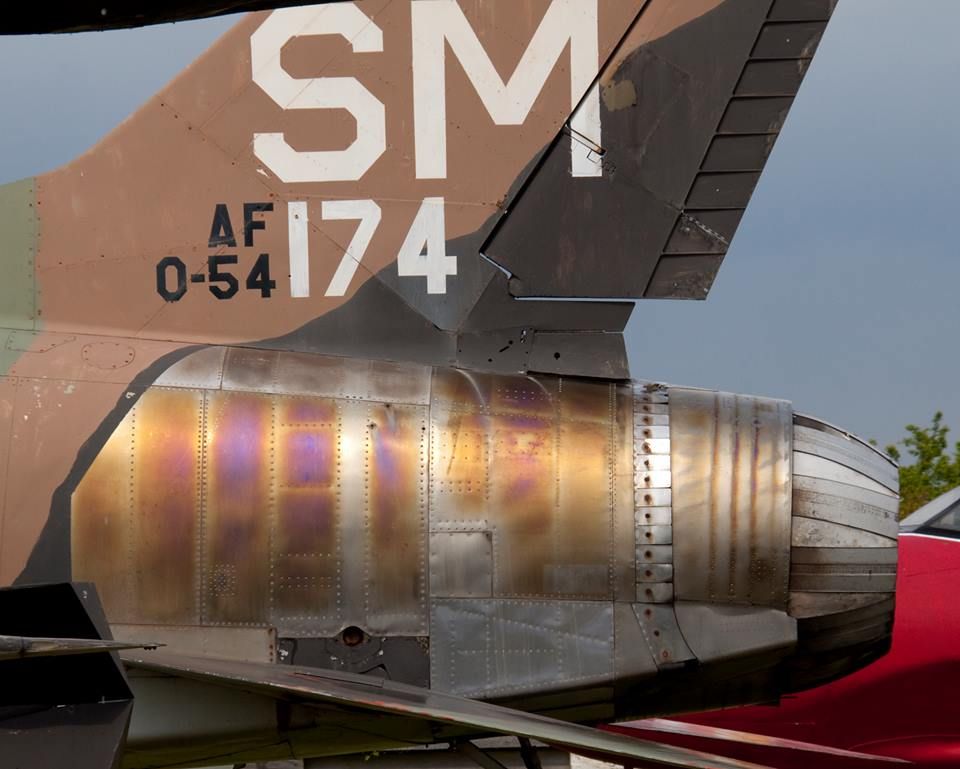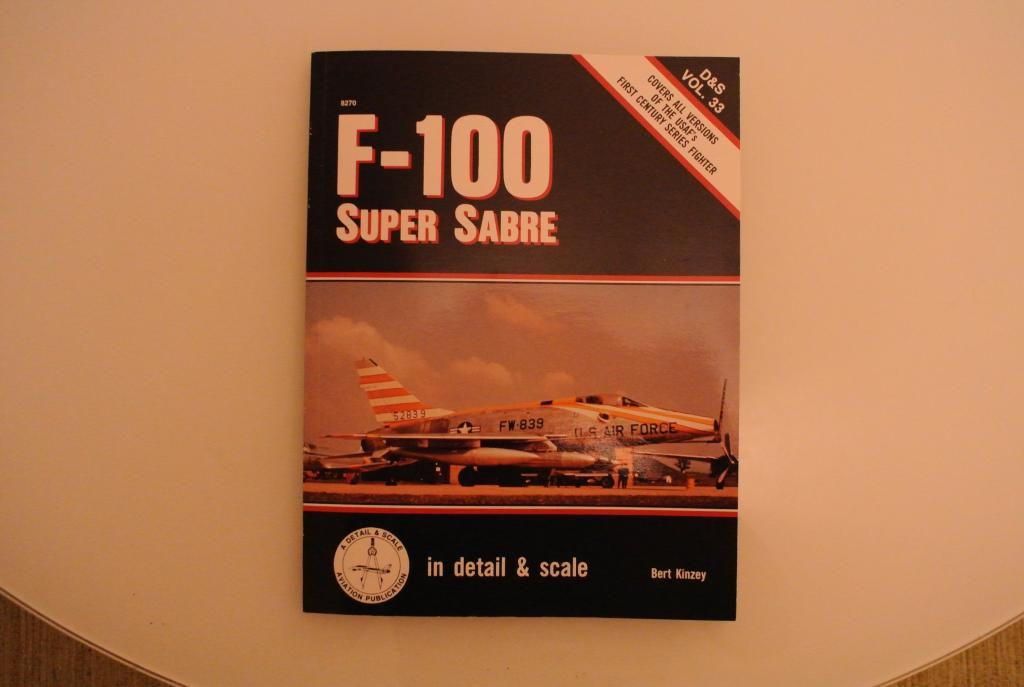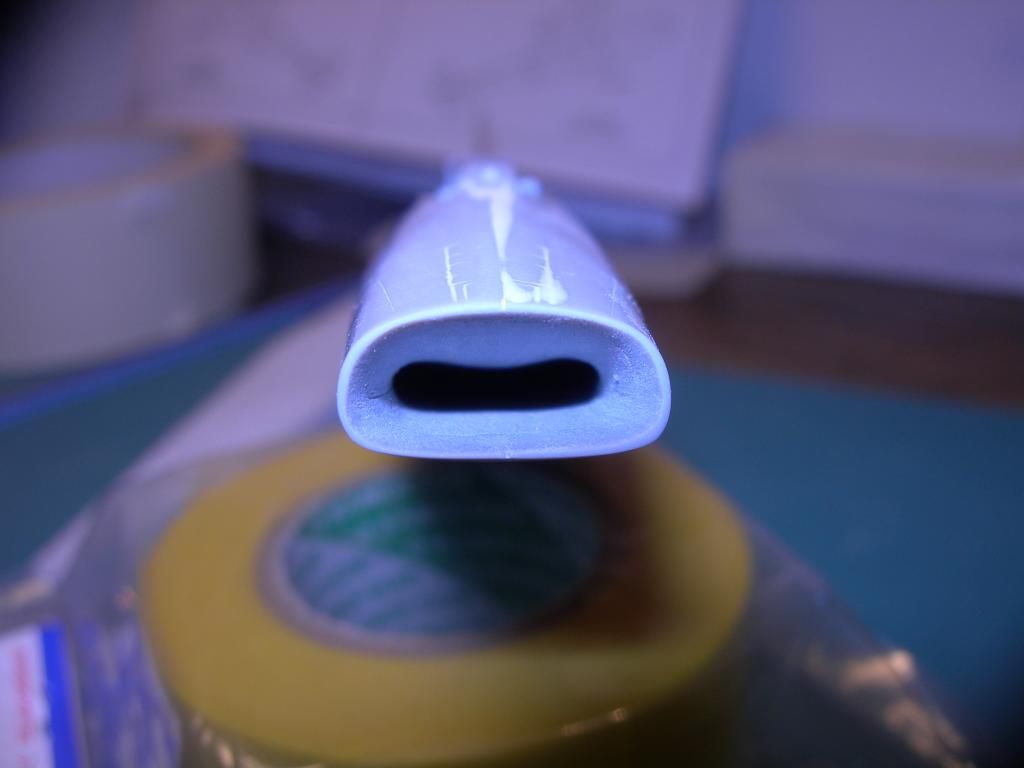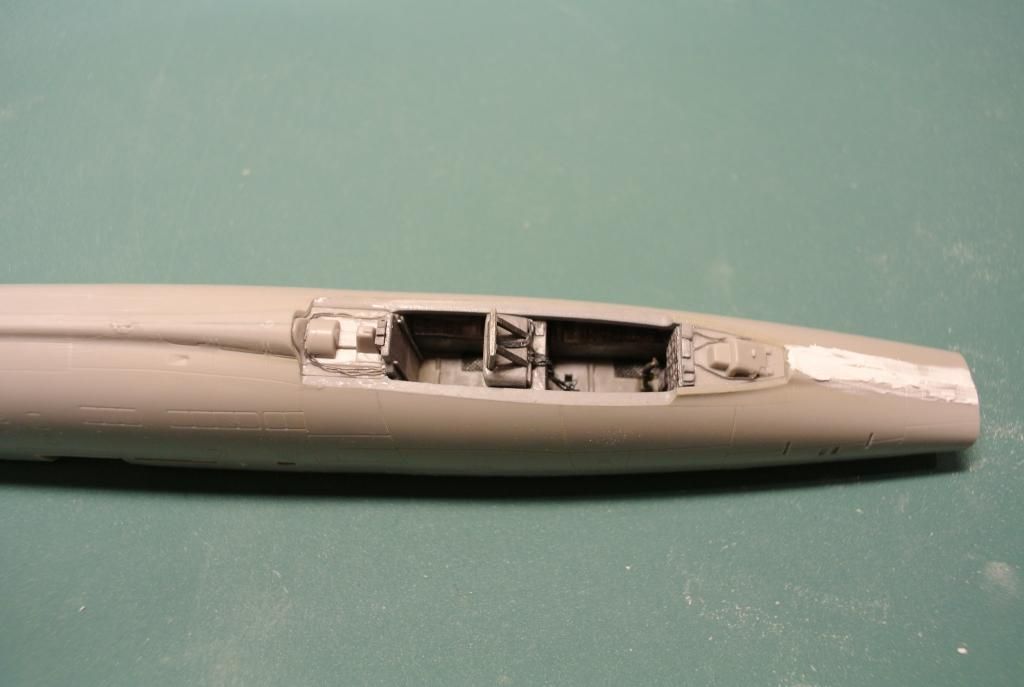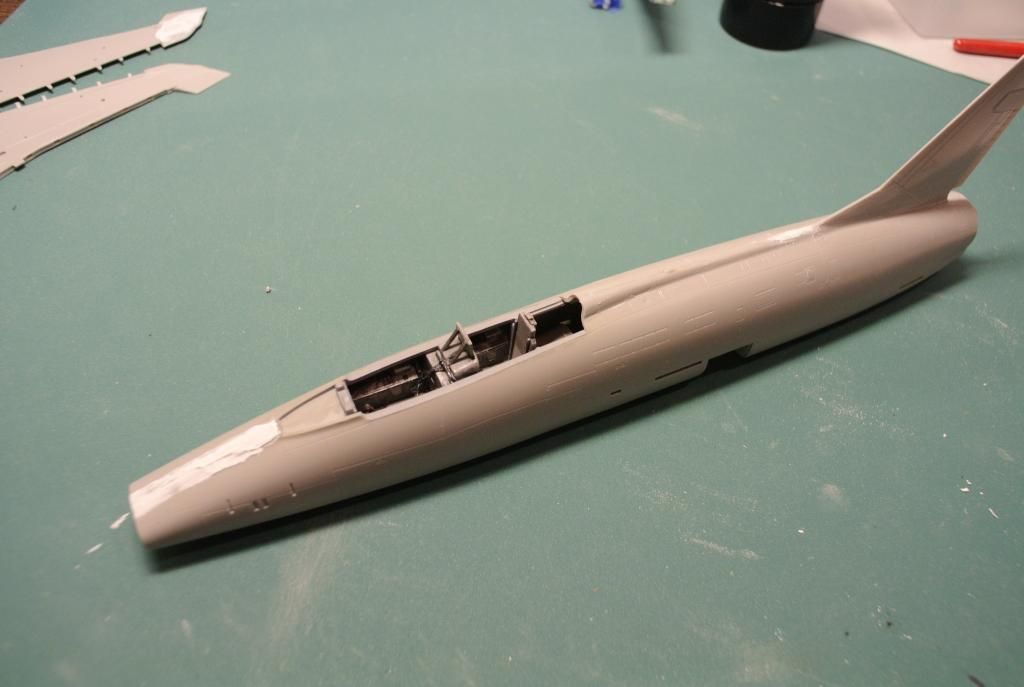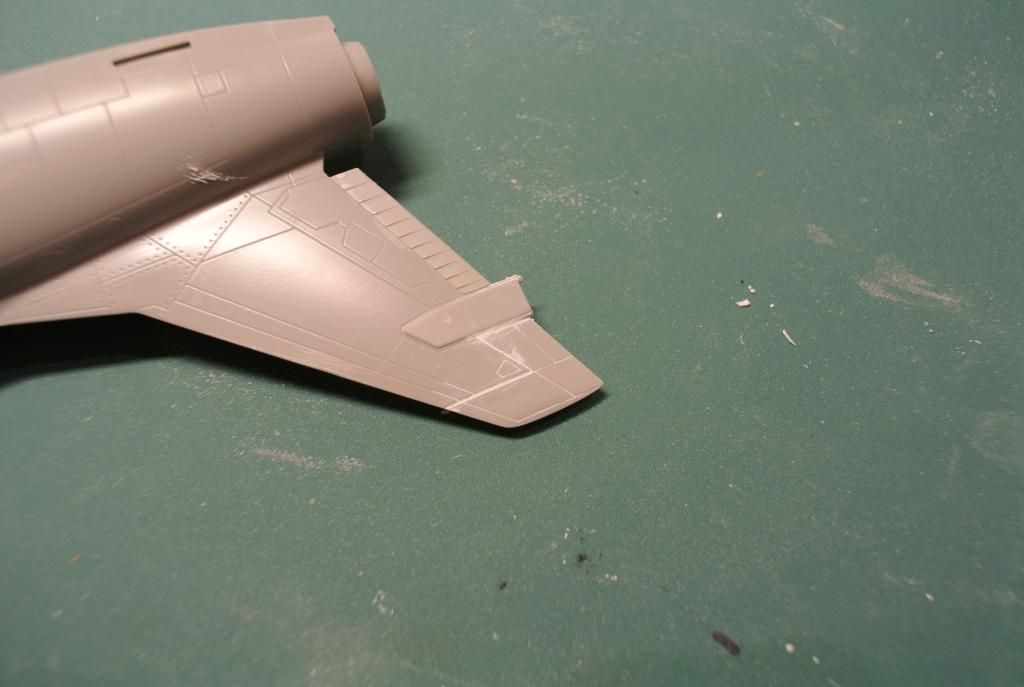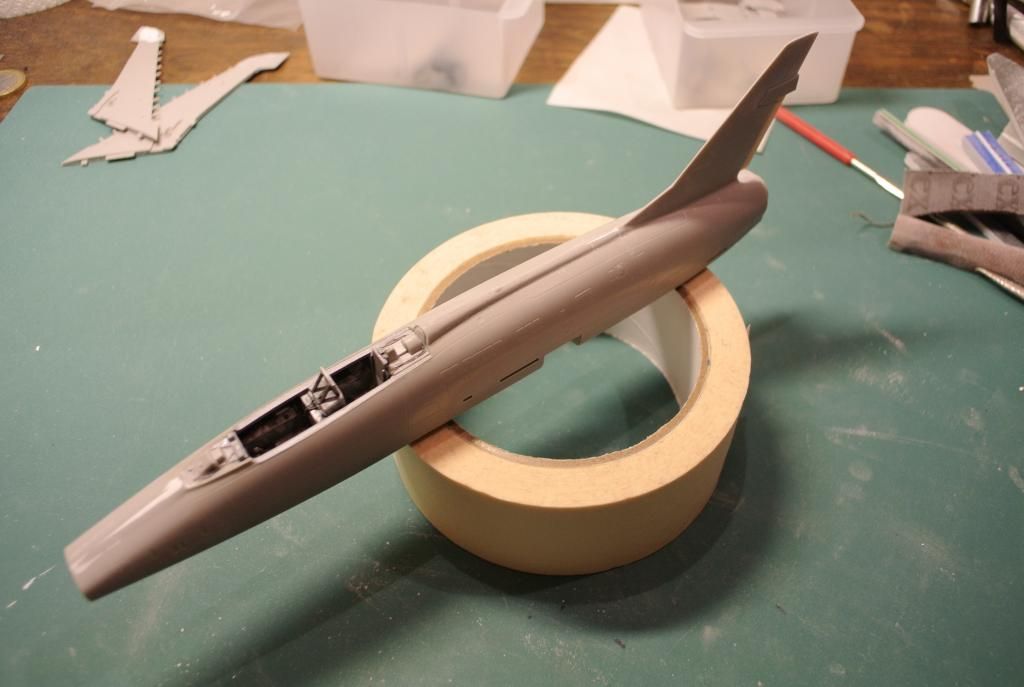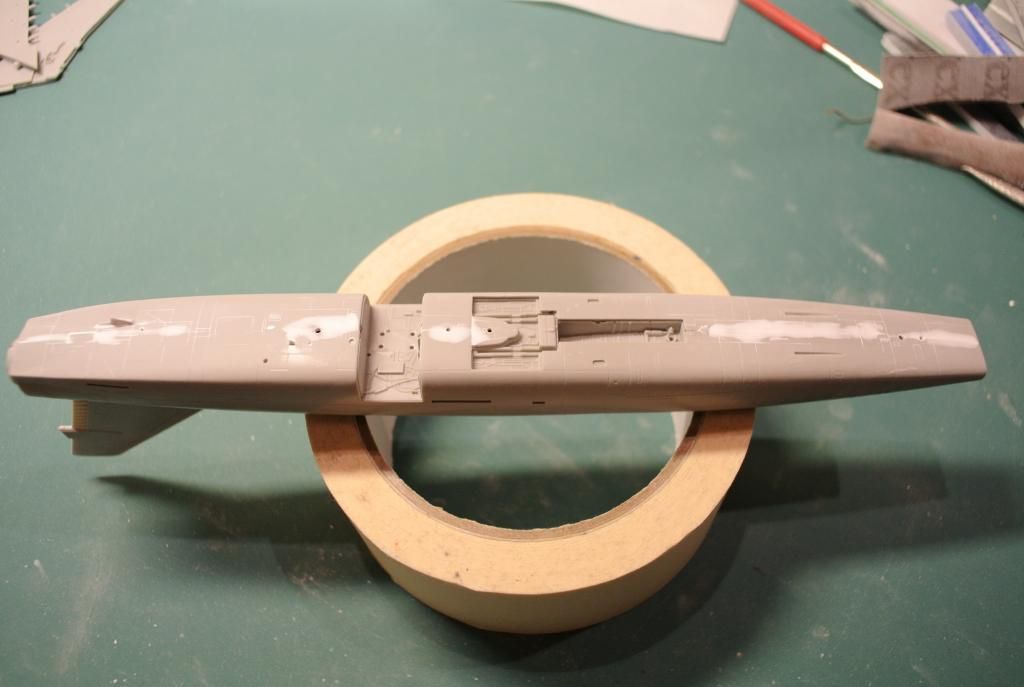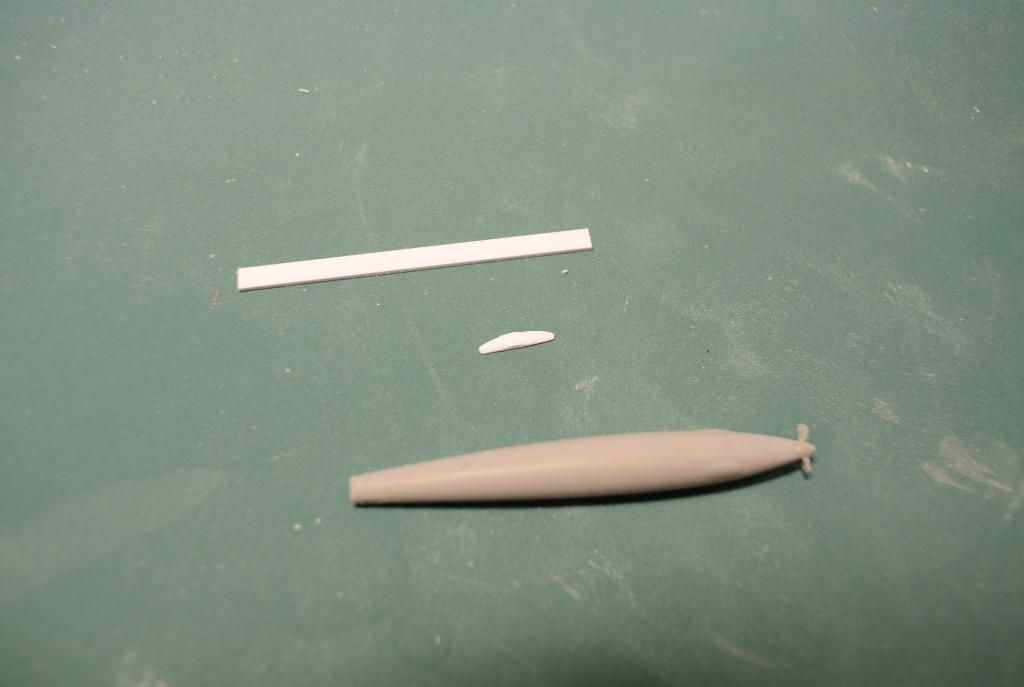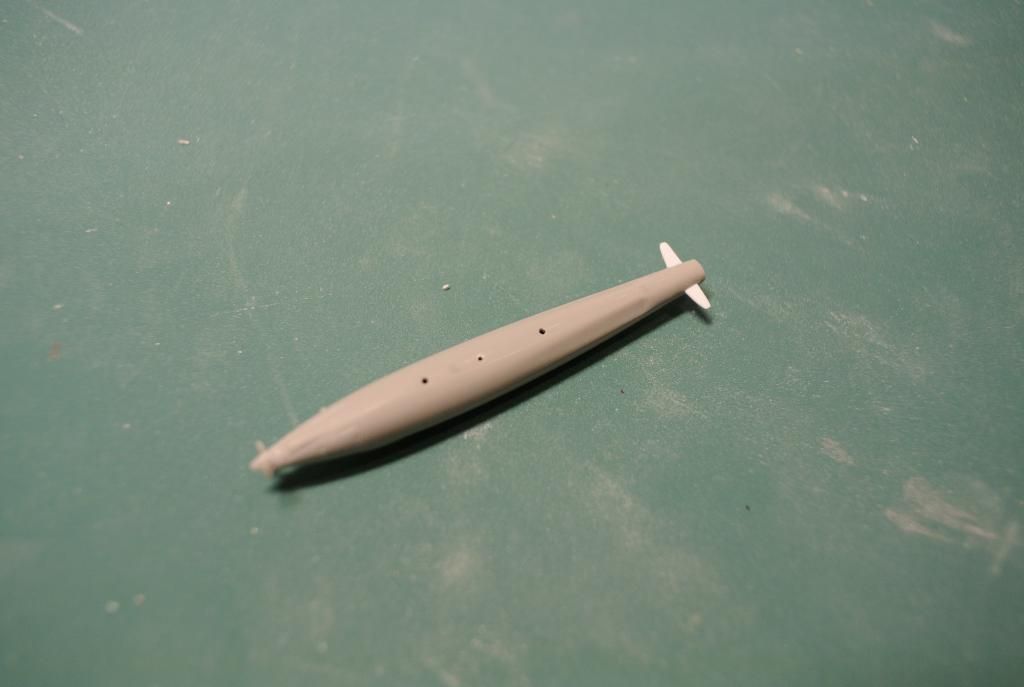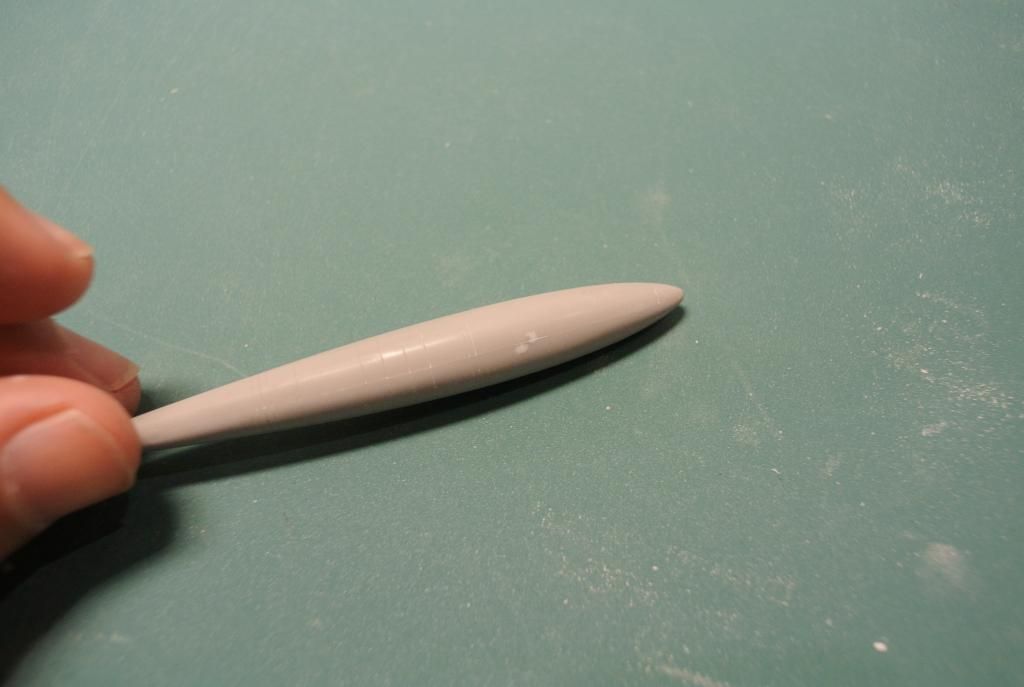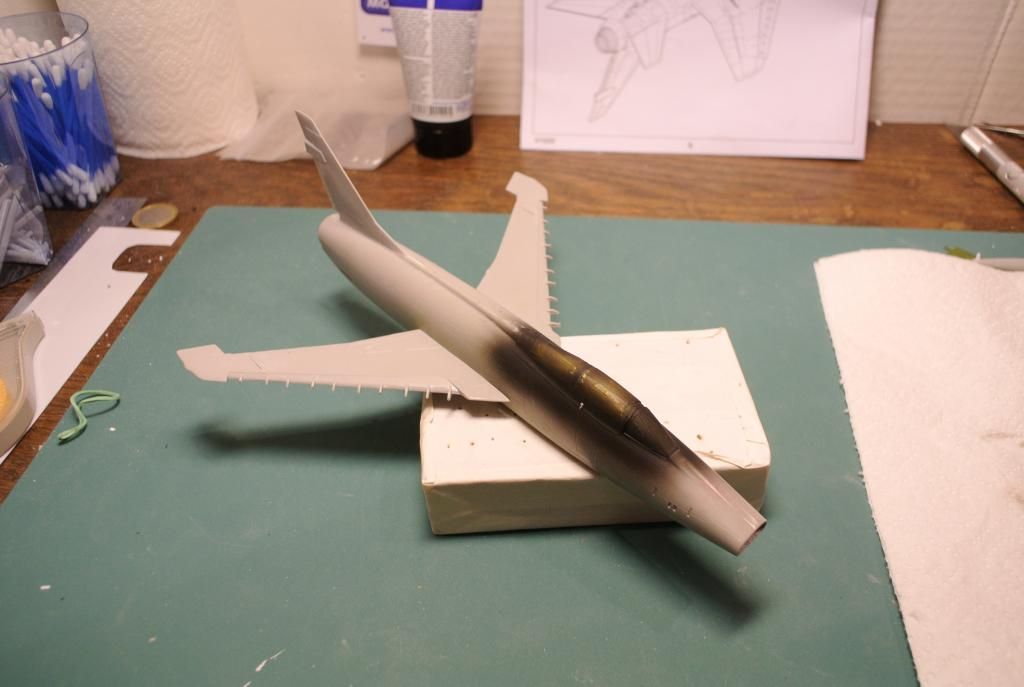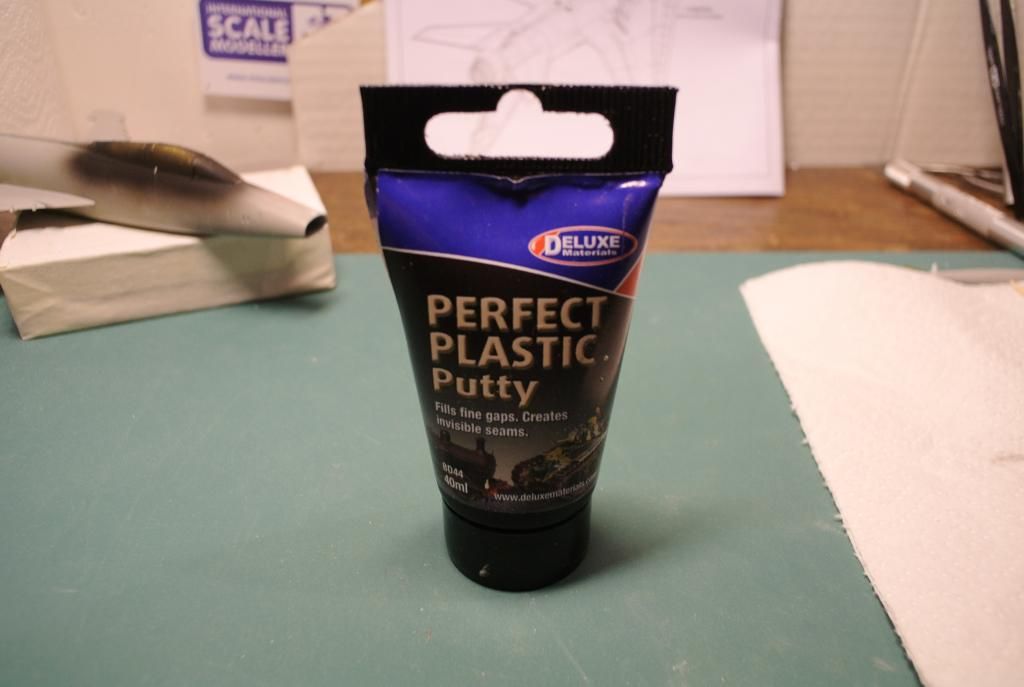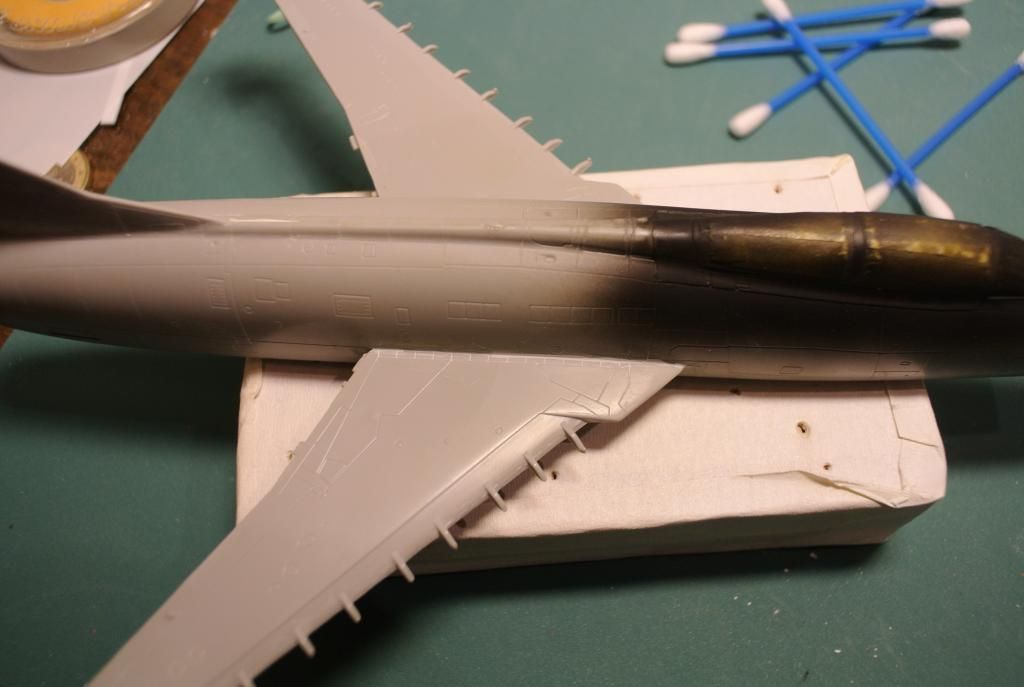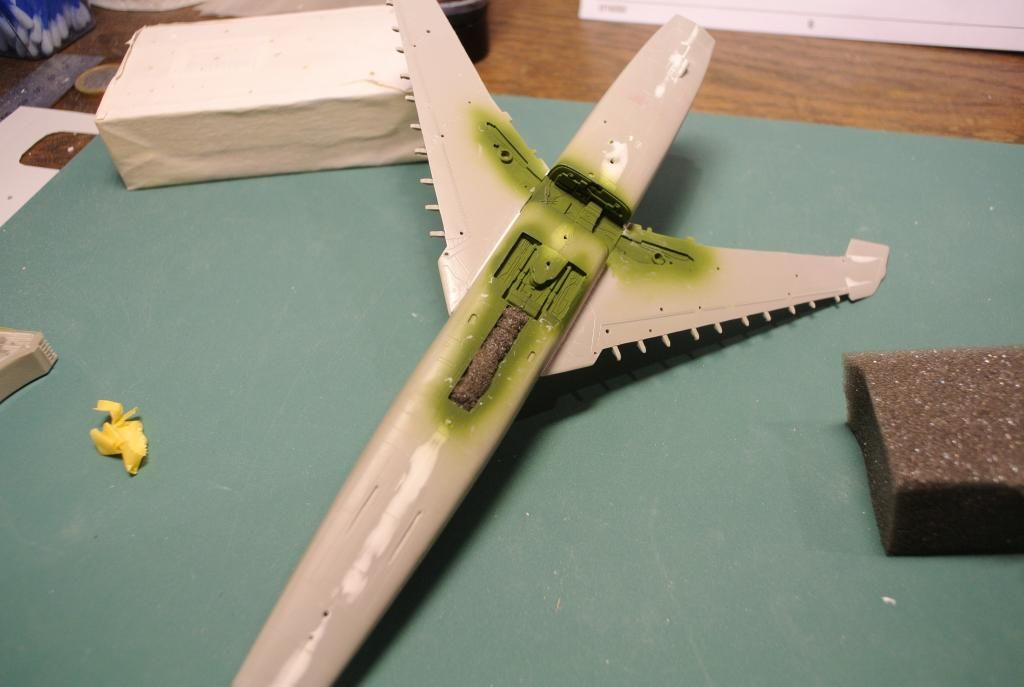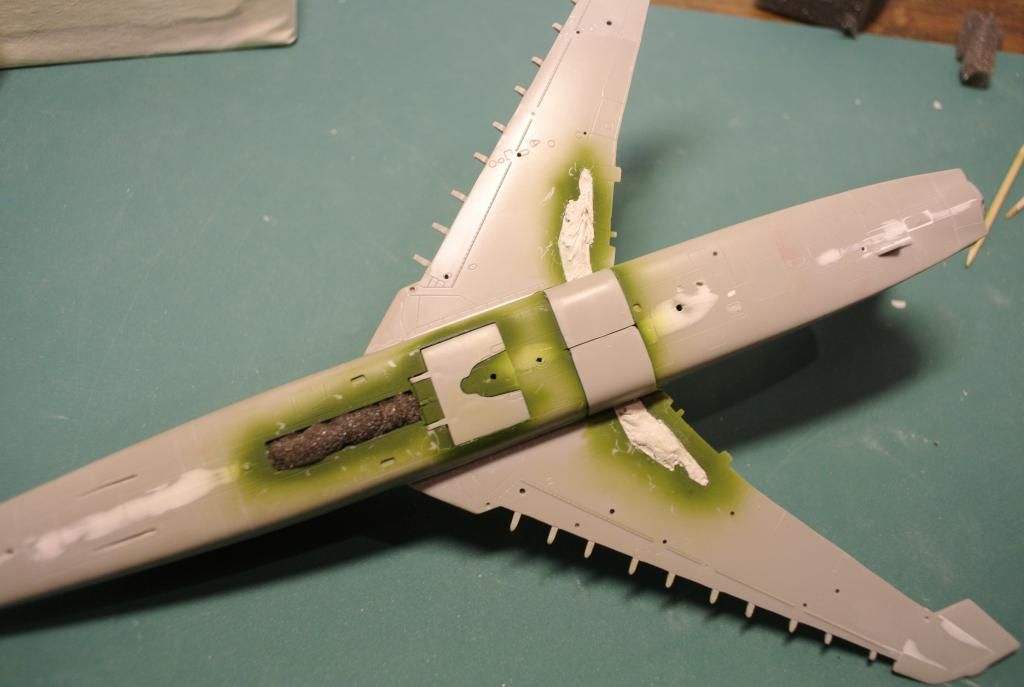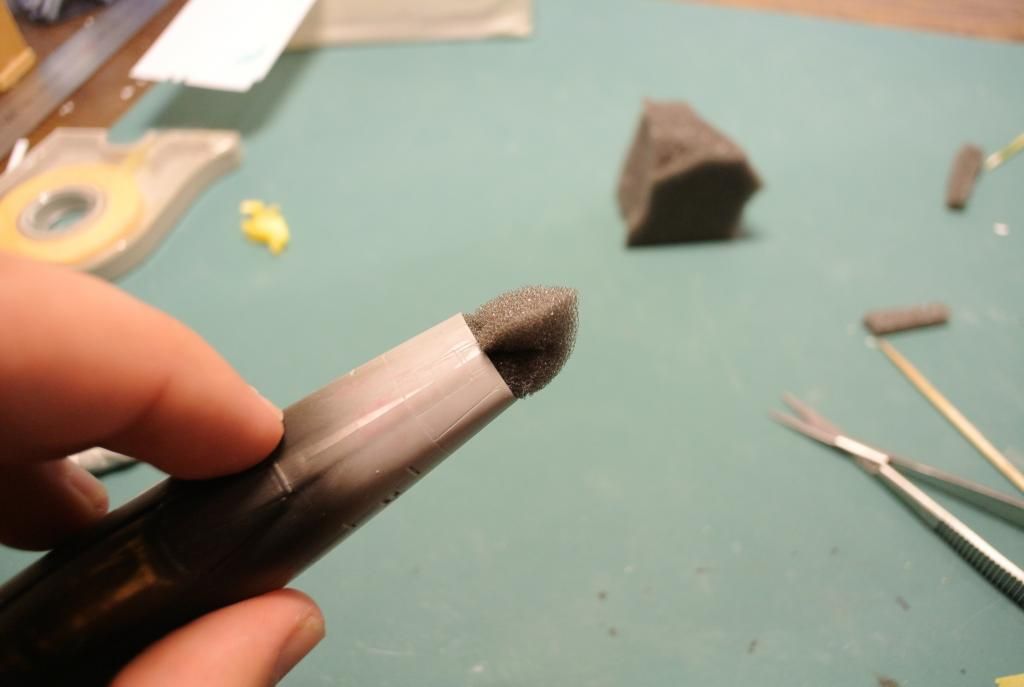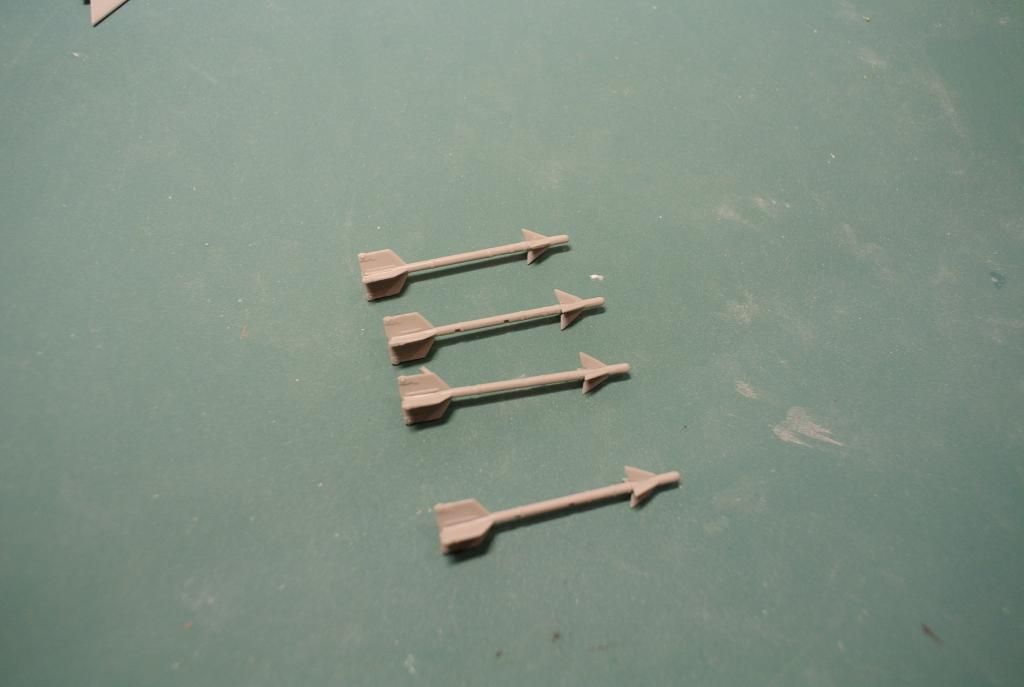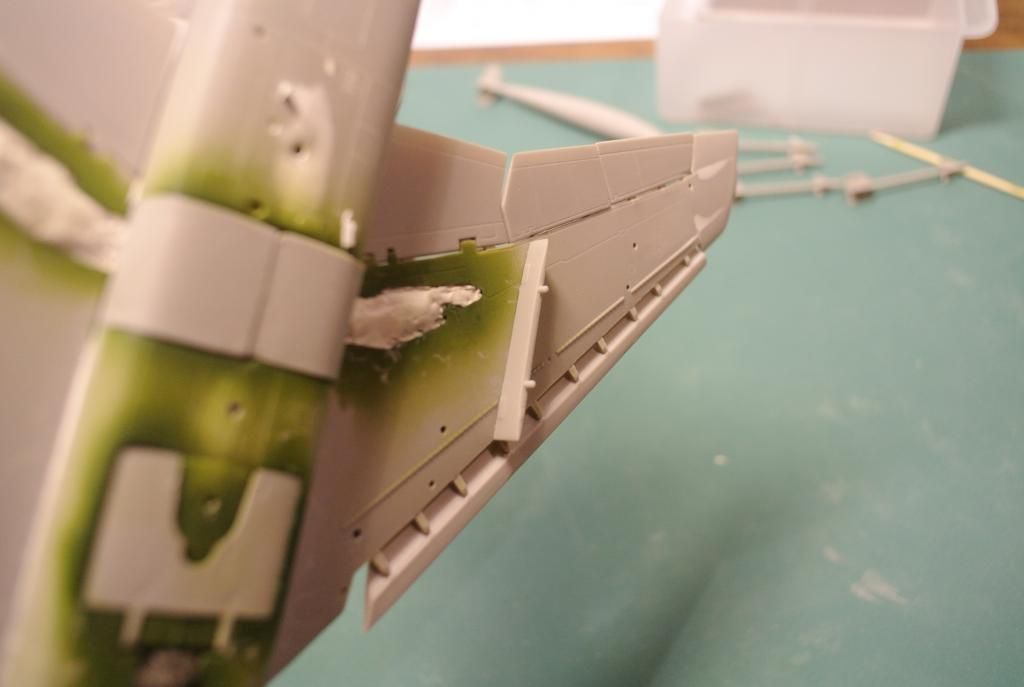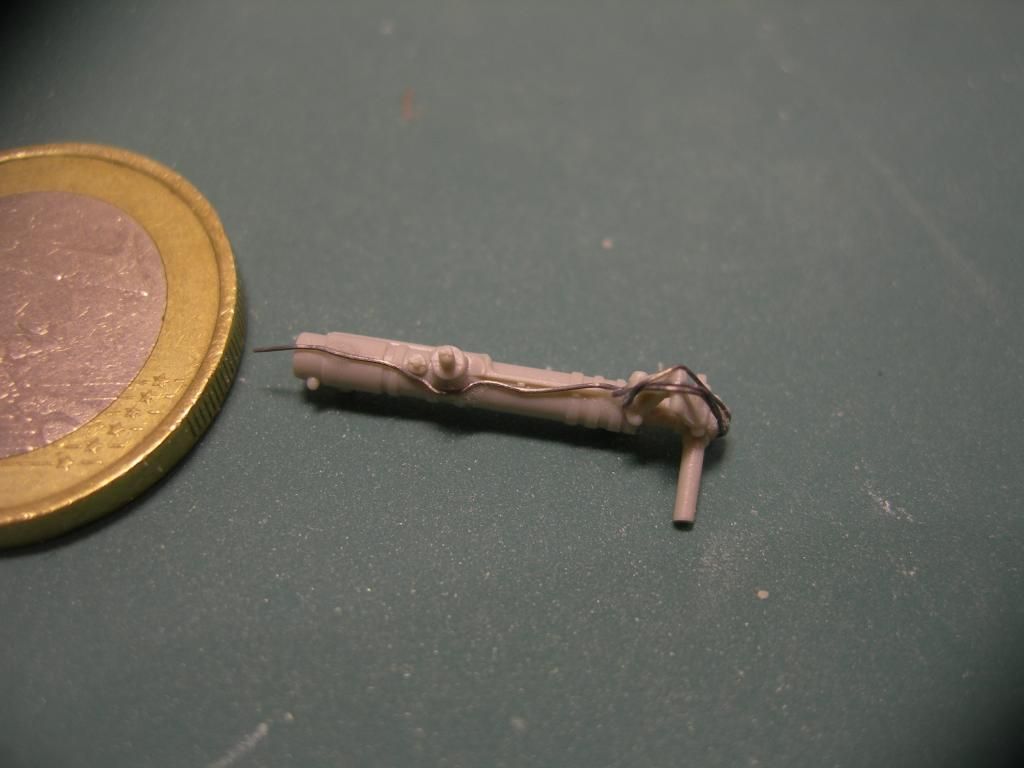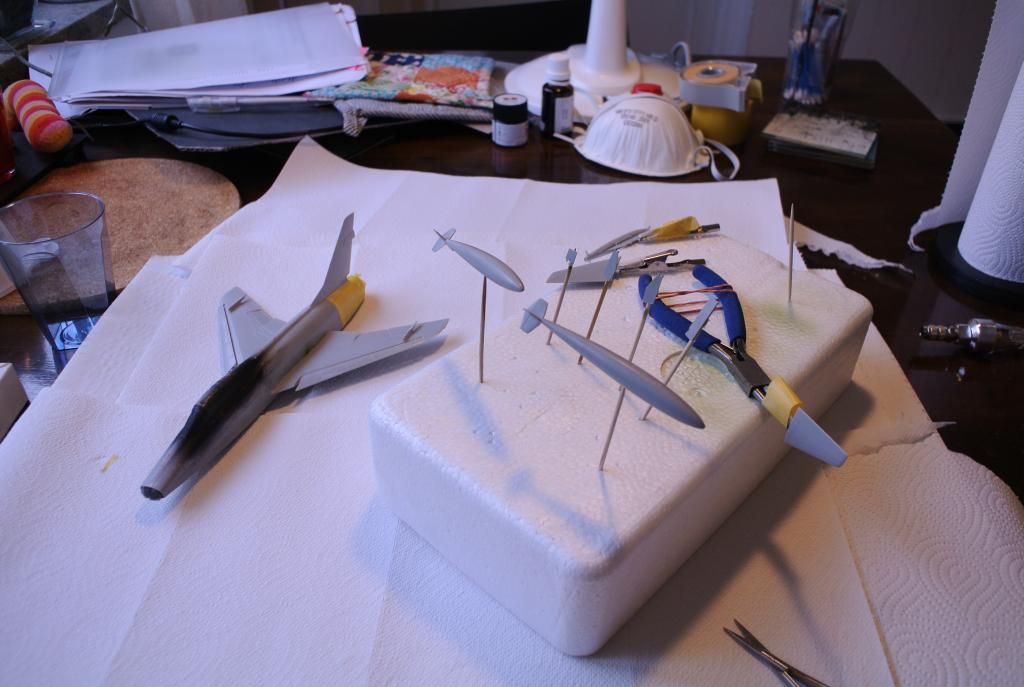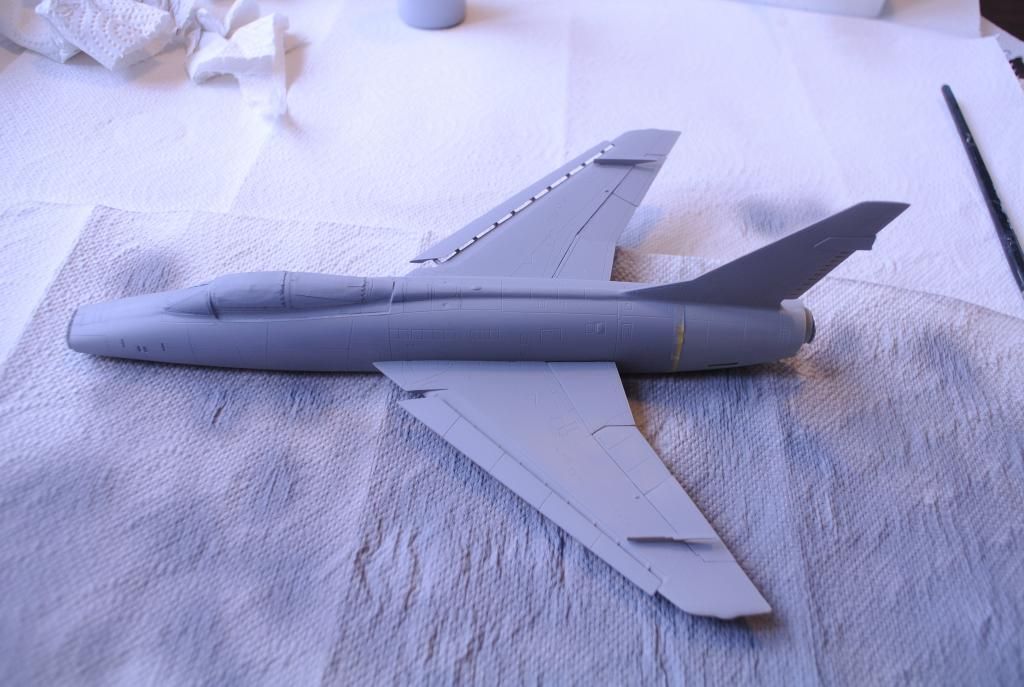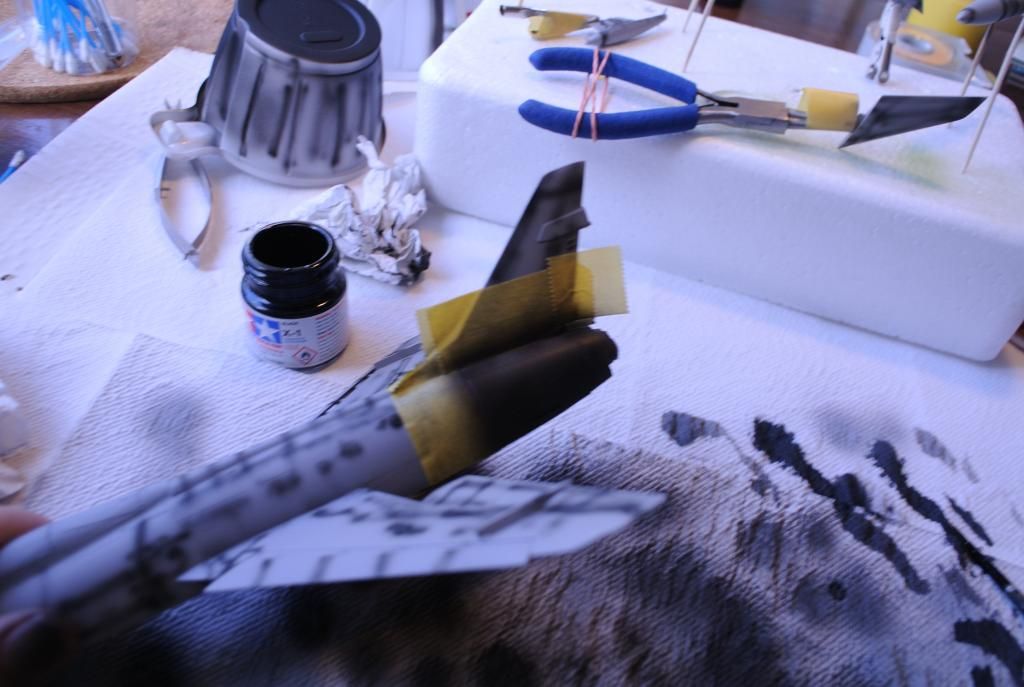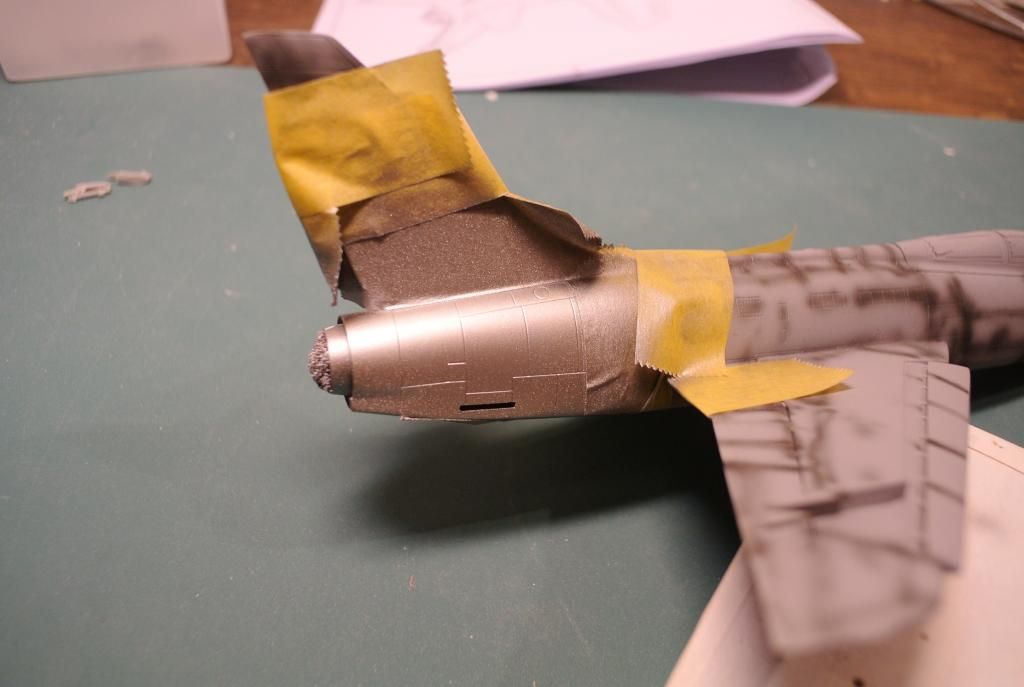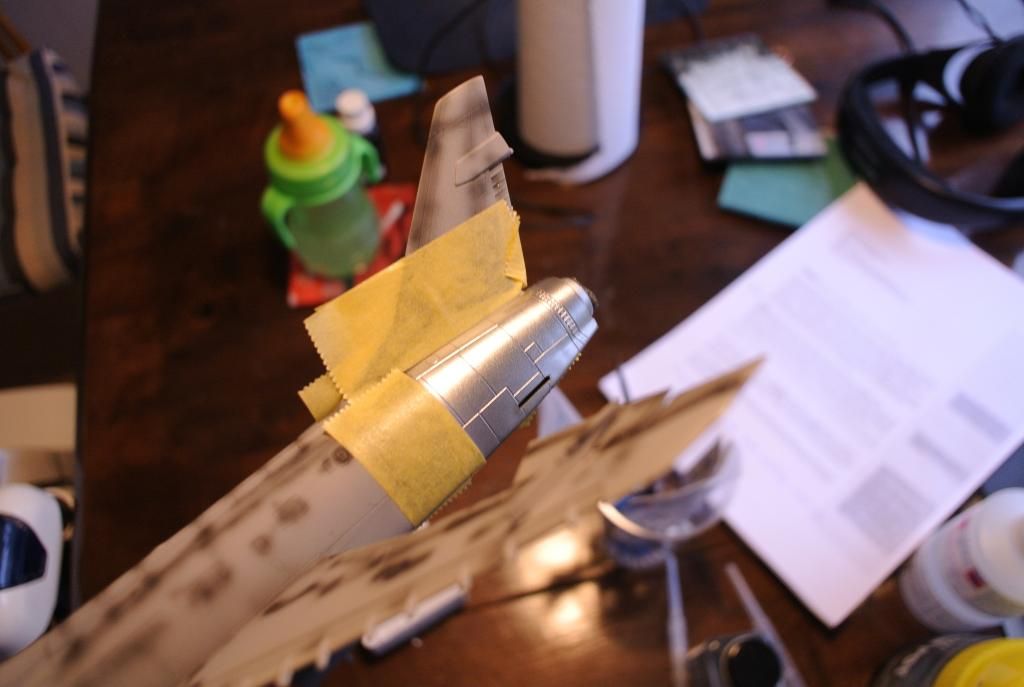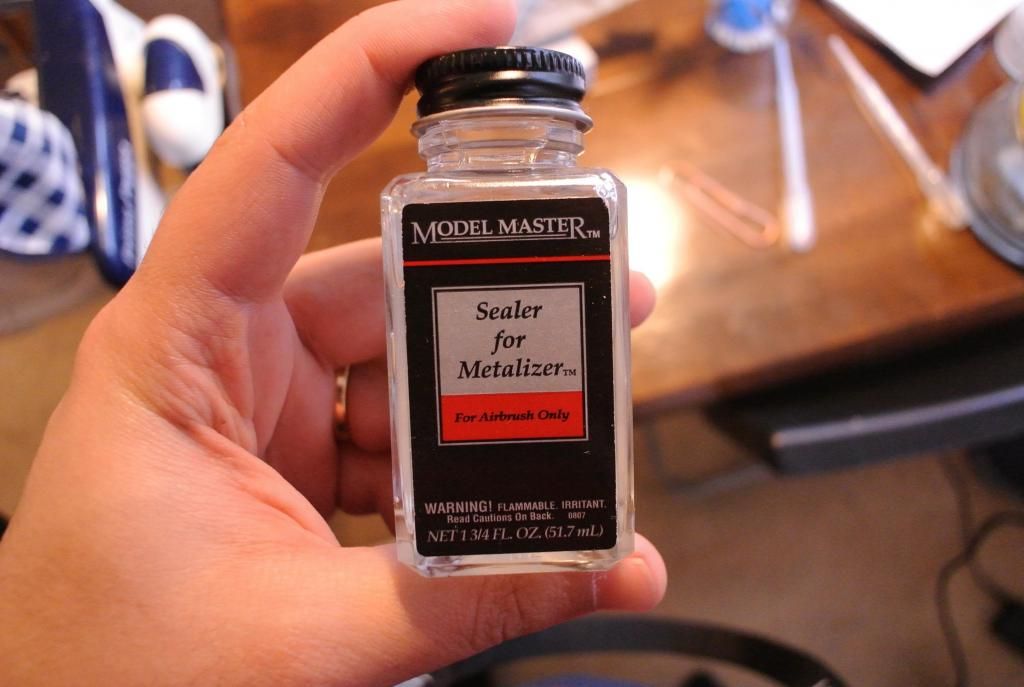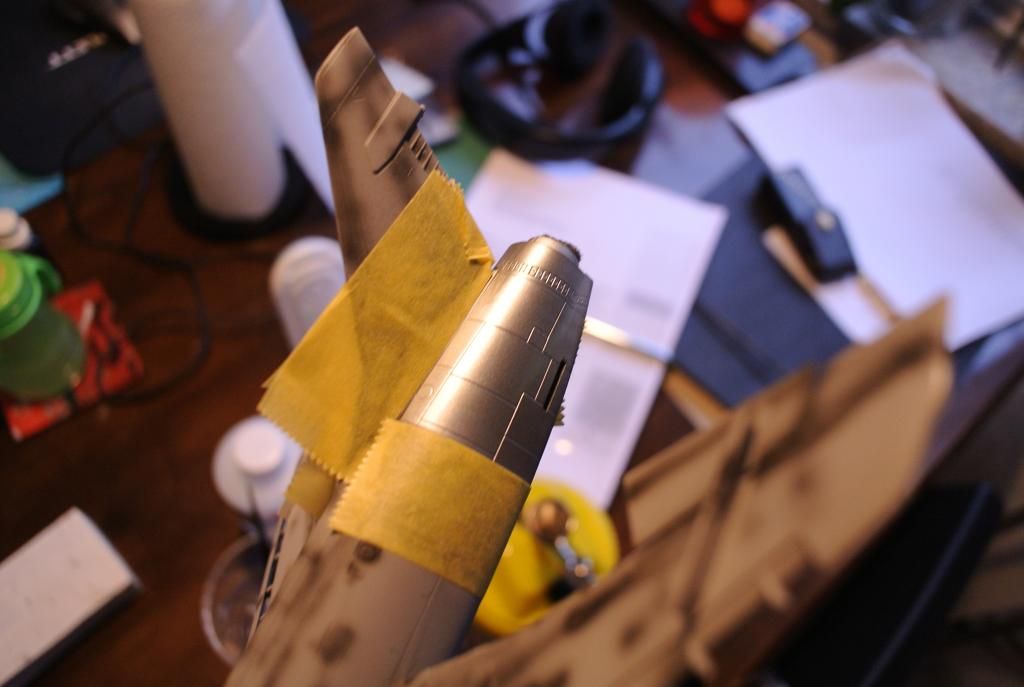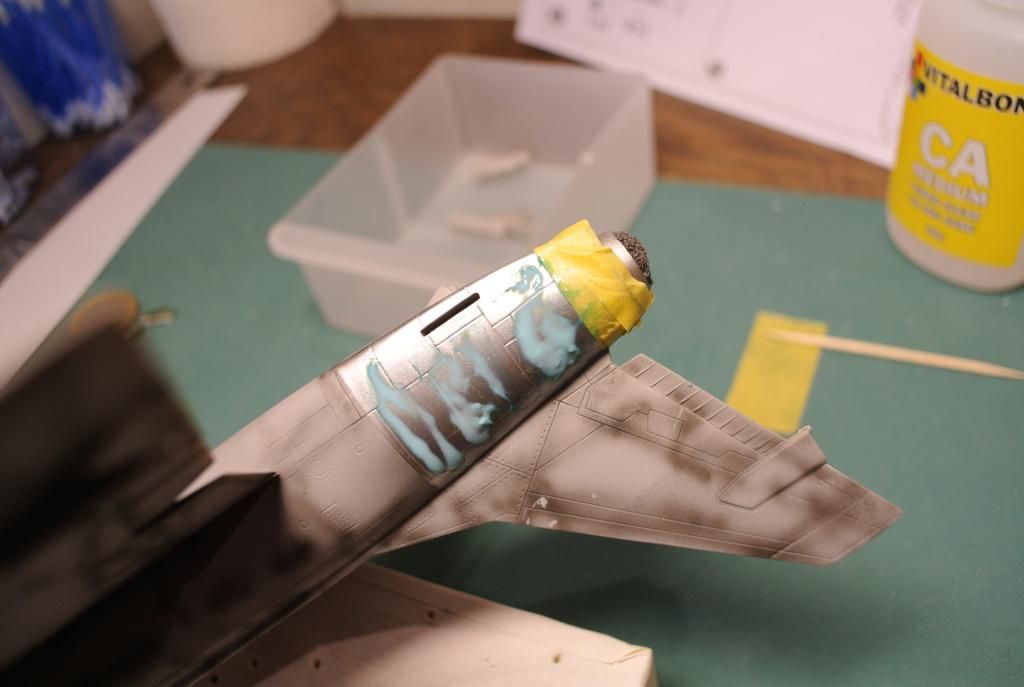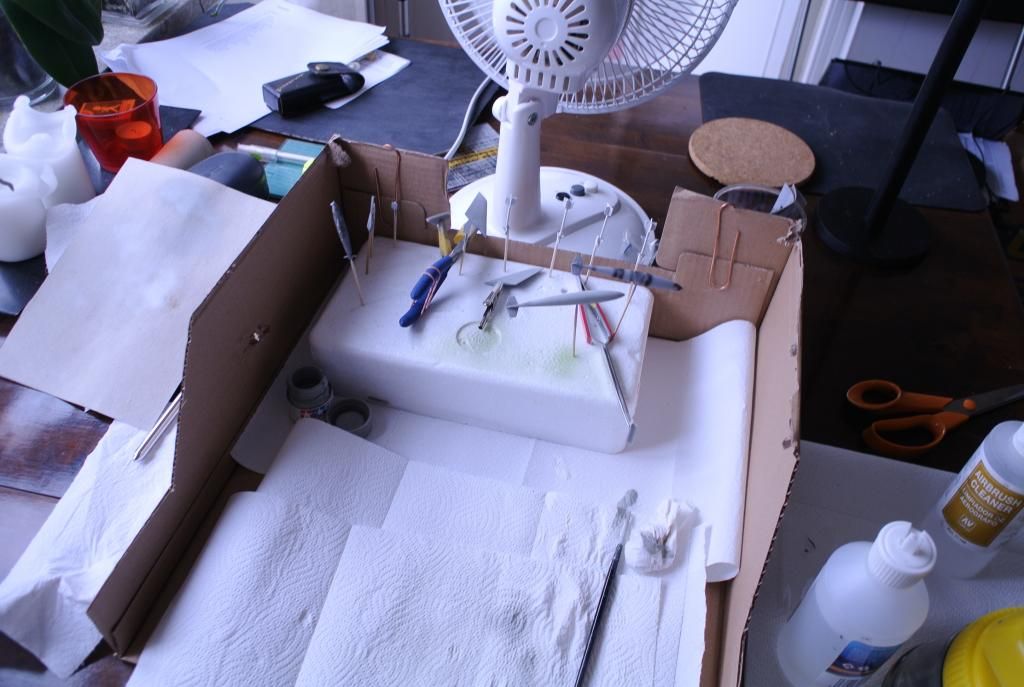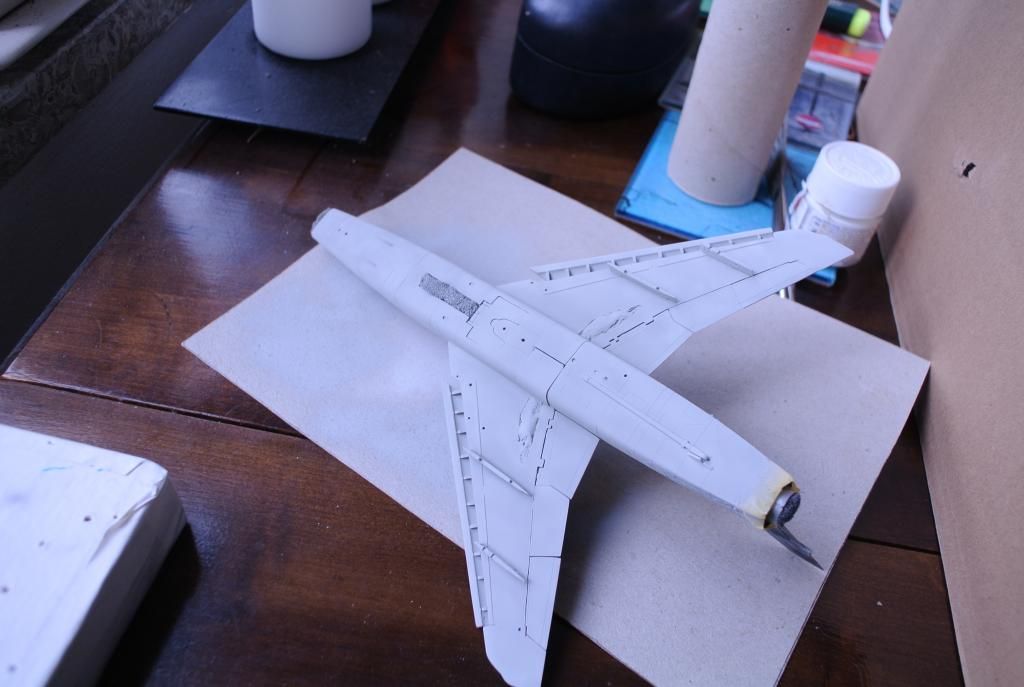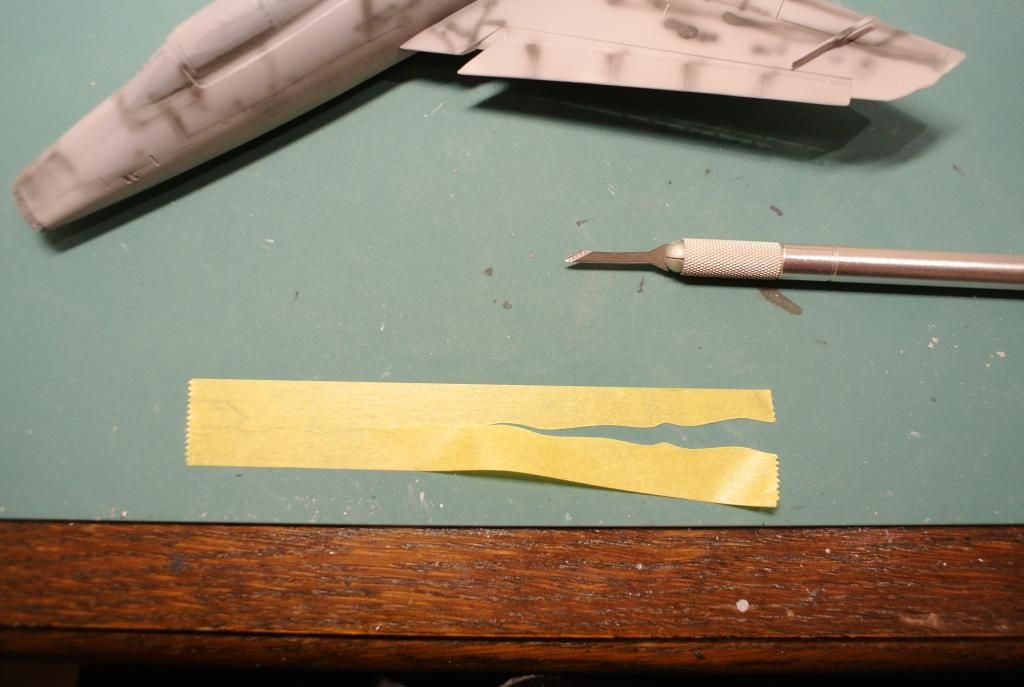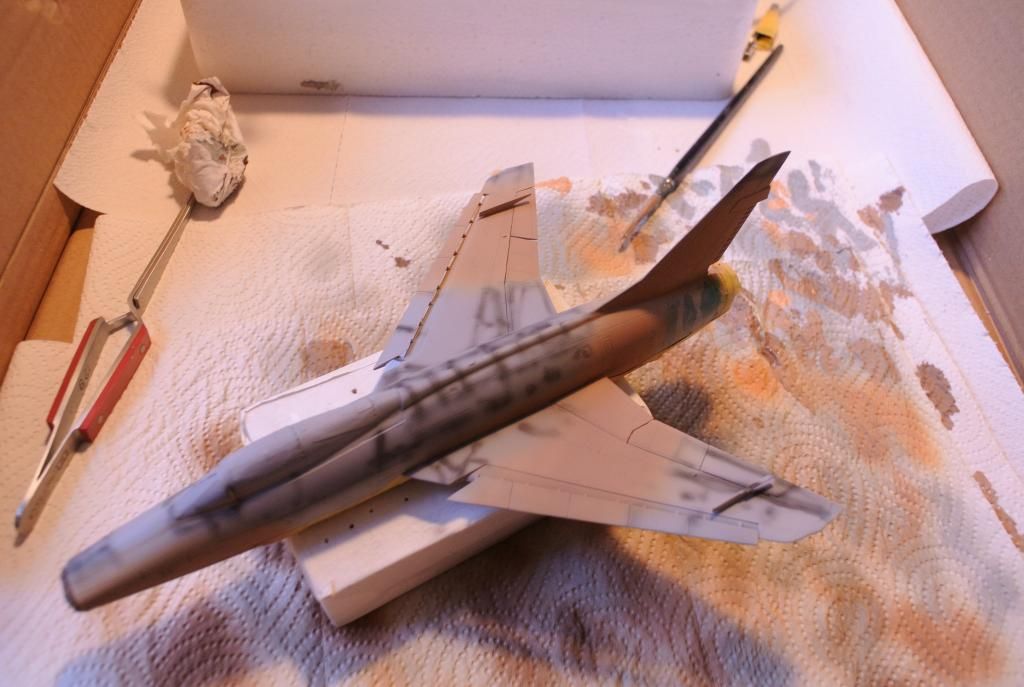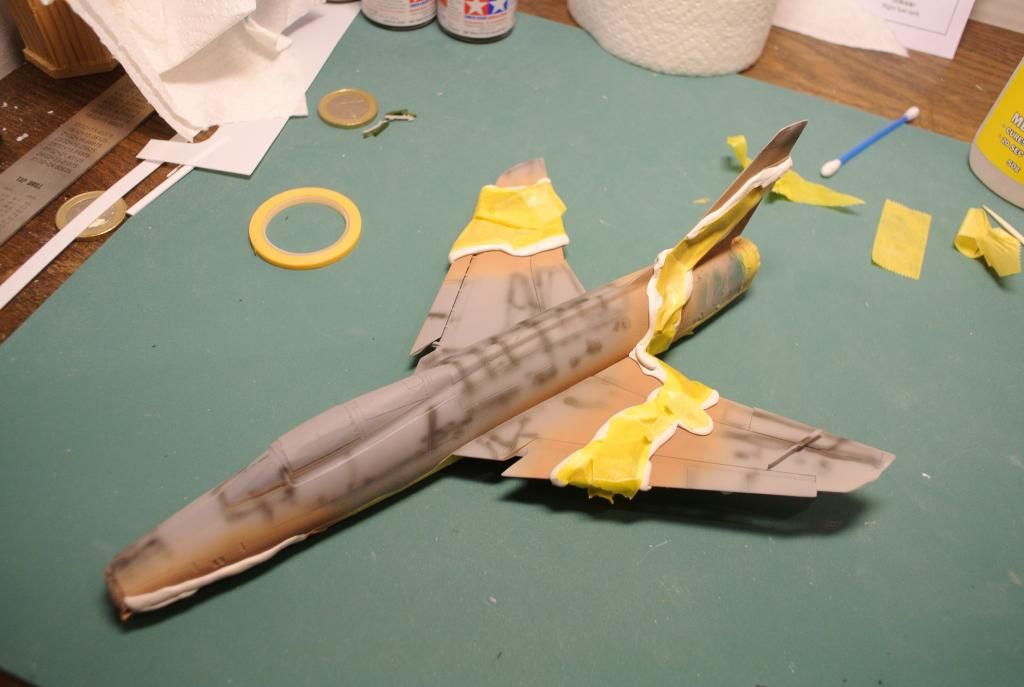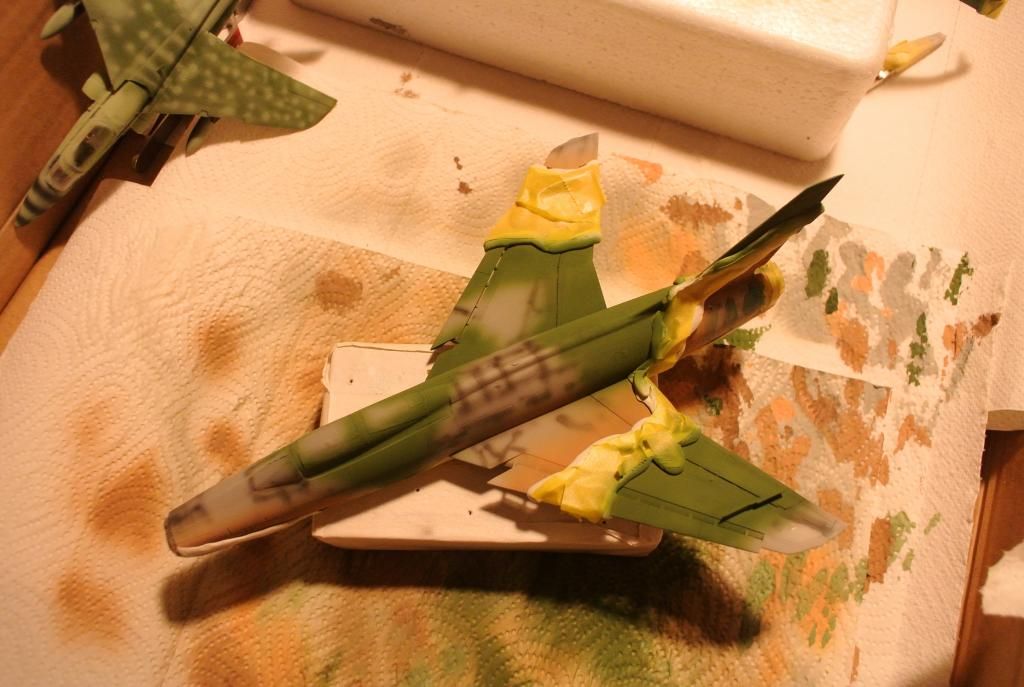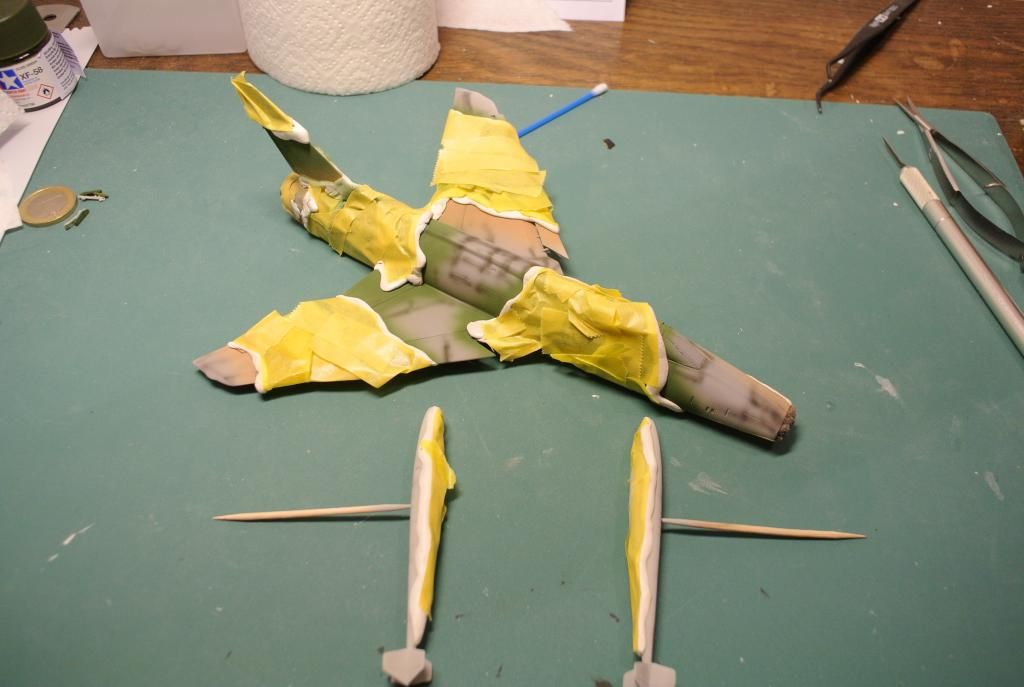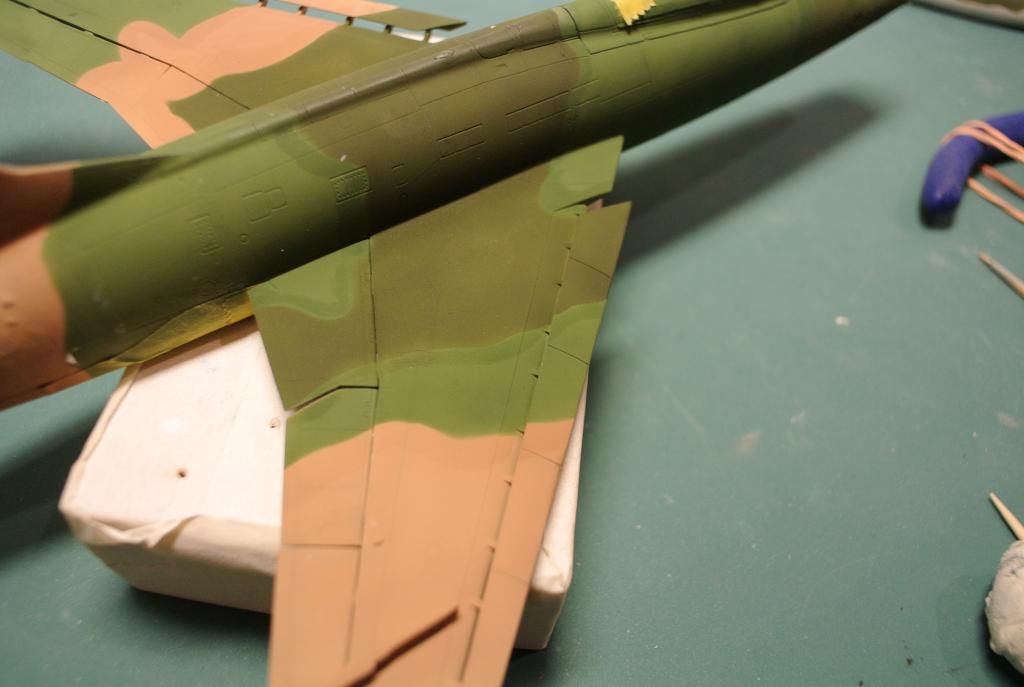Trumpeter 1/72 F-100F Super Sabre "Wild Weasel"
Posted: Fri Sep 19, 2014 1:51 pm
Background
The North American Aviation F-100 Super Sabre was the bridge between the subsonic and supersonic ages. It set the last subsonic speed record and the first supersonic speed record. It became the first supersonic production aircraft, and it was the first aircraft from which a pilot ejected at supersonic speed. Like the other early 100 series fighters, it pioneered the aerodynamics of supersonic flight and the complex control limits of thin supersonic wings, tails, and rudders. Also like all of the early 100 series fighters, it was only marginally supersonic. In military power, it often had difficulty pulling up rapidly when it had to, and the powerful afterburner was off or completely on. Test pilot George Welch described the effect of turning on the afterburner as being like “a kick from a well-fed mule".
Although the Hun was limited, it pioneered the design of operational supersonic aircraft. It made extensive use of heat-resistant titanium, its fuselage was ultra-streamlined, it had very thin control surfaces, and it had a thin intake duct in its nose. It was also the first U.S. aircraft with the horizontal tail positioned at the bottom of the fuselage [Boeing]. The layout of its cockpit controls was ergonomically and functionally sophisticated and yet simple.
After deeply troubled early development, the “Hun” (short for Hundred) seemed destined for a very limited service life. However, when war began in Southeast Asia, the Air Force had F-100s in large numbers and rushed them to Vietnam and Thailand. It was the first U.S. fighter/bomber to reach Vietnam, flying its first combat mission on June 7, 1964. The Super Sabre was used primarily as a fighter/bomber in South Vietnam, interdicting Viet Cong and North Vietnamese troop movements and providing close air support to U.S. and South Vietnamese troops in contact with the enemy. Two-seat F-100Fs were the first anti-SAM Wild Weasel aircraft and flew as fast forward air controllers north of the Demilitarized Zone, where losses by piston engine FACs were too high.
Huns flew 250,000 sorties during the war—more than any other fixed wing aircraft in Vietnam. In fact, this was even more sorties than North American P-51 Mustangs flew in all of World War II [Crosby, Bachelor and Lowe]. Huns began fighting in Vietnam in 1965 and continued to fight there until 1971.
Design
The Super Sabre design began as a successor to the legendary F-86 Sabre. Like the F-86, the F-100 would be a day fighter; it would not have the long-range radar an interceptor needed, and it could not fight at night or in bad weather. However, unlike the F-86, the F-100 would be supersonic in level flight. This heritage led to its official name, Super Sabre. North American initially called the F-100 the Sabre 45 because the new aircraft would need a 45 degree wing sweep to fly supersonically.
While the Sabre models before the Hotel version had six 50 caliber machine guns firing through the sides of the fuselage, the F-100 had four 20 mm cannons firing from the bottom of the nose. This gun position prevented the flash from blinding the pilot. The four General Electric M39 revolver cannons each had five chambers but a single barrel. While one chamber was firing, another would have its shell ejected, and another would have its shell loaded. Each gun could fire 1,500 twenty-millimeter cannon shells per second. This was a 50% higher rate of fire than the 50 caliber machine gun the M-39 replaced. Each cannon had 200 rounds, although it could carry up to 275. Its high rate of fire gave pilots only a few seconds of firing before their cannons ran dry. The M39 was effective against both aircraft and ground targets. For aiming the gun in a dogfight, the pilot had small ranging radar under the top of the oval air intake. A lead-computing computer put a pip on his heads up display to indicate where he could fire.
Comparing the F-86 and the F-100 directly, the Hun was seven feet longer, but its wingspan was only a foot longer. With 16,000 pounds of thrust in afterburner, the F-100 had three times the power of the F-86 while being only 3,000 pounds heavier.

F-100F
Given the tricky nature of F-100 flying, the last 339 F-100s to be built were F-100Fs. These were two-seat training aircraft, with the pilot being checked out sitting in the front. Compared to the D model on which it was based, the F-100F was three feet longer to make room for the second seat. It was still combat capable and could deliver bombs effectively. However, it only had two cannons.
The Vietnam War
Wild Weasel Operations
In 1965, as American began pouring resources into Vietnam, the Soviet Union began to supply North Vietnam with SA-2 Guideline surface-to-air missiles. The SA-2 was a big and dangerous missile. It was 35 feet (10.6 m) tall and weighed 5,000 pounds (2,300 kg). It carried a bomb-sized warhead of 440 pounds (200 kg), and it had a kill radius of 200 fee (65 m). It climbed quickly and could reach Mach 4. Its FAN SONG control radar used 600 kW of power and could direct three missiles simultaneously against the same target. Five years earlier, one of these Mach 3 “flying telephone poles” had shot down Francis Gary Powers’ U-2 over the Soviet Union. In 1962, during the Cuban missile crisis, an SA-2 SAM had shot down another U-2. Huns and other U.S. aircraft in Vietnam were even more vulnerable than the high-flying U-2s.

The United States had been developing radar warning electronics for the U-2. Within weeks, the Air Force installed this equipment four two-seat F-100Fs. Another three soon followed. These modified Huns were called Wild Weasels. These aircraft did not attack the enemy directly. They flew in Iron Hand packages with one F-100F Weasel and four fighter bombers. The Weasels directed bombers by firing smoke rockets at the target. These F-100Fs only acted as Wild Weasels for a brief period, between November 1965 and May 1966. During those five months, Iron Hand packages flew 19,000 sorties, fired on 180 SAMs, and lost 11 aircraft. They defined the roles and tactics for future Weasels. The Wild Weasel role then passed to F-105s and F-4s. These aircraft cruised faster and had the space for additional electronics and missiles. Later Wild Weasels had jamming pods that protected them from SAMs as well as AGM-45 Shrike anti-radiation missiles to attack SAM sites directly. F-100F Wild Weasels had neither, making their job exceedingly dangerous. Three of the seven F-100F Weasels were lost, two in combat.
Misty FAC Operations
For combat air support missions, Huns were almost always directed by a piston engine forward air controller (FAC). The FAC would coordinate with ground elements, mark the enemy with smoke rockets, act as a traffic director for incoming fighter/bombers, clear each approach hot or tell the attacker to go around, and giving outgoing bombers a bomb damage assessment for their runs.
Late in the war, the Air Force had problems with its forward air controller (FAC) aircraft, which directed fighter/bomber attacks against enemy troops that were threatening U.S. and South Vietnamese forces. Existing propeller and turboprop FAC aircraft were slow, and they suffered heavy losses from North Vietnamese antiaircraft artillery and SAMs in the area just north of the DMZ. In this area, called Route Package 1 (RP1), the USAF needed much faster FAC aircraft.
The Air Force turned to the two-seat F-100F, which had room for an observer/controller in the back seat. Compared to the D model on which it was based, the F-100F was three feet longer to make room for the second position. Although initially used as a conversion trainer for new Hun pilots in squadrons, it was still combat capable and could deliver bombs. However, it only had two cannons instead of four.
Given the call sign Misty, these F-100F fast FAC aircraft took over from slower propeller FAC aircraft in RP-1. Even with higher speeds, however, Misty FAC missions were very hazardous. Of 157 Misty FAC pilots, 34 were shot down. This was four times the loss rate in other F-100 units. Given their losses and the need for them to be used as conversion trainers, there were never enough F-100Fs to go around.
By war's end, 242 F-100 Super Sabres had been lost in Vietnam, as the F-100 was progressively replaced by the F-4 Phantom II and the F-105 Thunderchief. The Hun had logged 360,283 combat sorties during the war and its wartime operations came to end on 31 July 1971. The four fighter wings with F-100s flew more combat sorties in Vietnam than over 15,000 P-51 Mustangs flew during World War II. After 1965, they did not fly into North Vietnam and mainly performed close air support missions. Despite the April 1965 dogfight, the Air Force classified the engagement as resulting in a "probable" kill, and no F-100 was ever officially credited with any aerial victories. No F-100 in Vietnam was lost to enemy fighters, but 186 were shot down by anti-aircraft fire, 7 were destroyed from Vietcong attacks on airbases, and 45 crashed in operational incidents.

Videos
Start up and lift off
[youtube]qrypgKwdZ4Y[/youtube]
The Collings Foundation's F-100F and Colonel George "Bud" Day Celebration and Flight.
[youtube]k9s6t1whZp8[/youtube]
Small amount of F-4 Phantom, UH-1 Huey and TA-4 Skyhawk footage as a bonus
Next up, a kit review, until then. Cheers!
The North American Aviation F-100 Super Sabre was the bridge between the subsonic and supersonic ages. It set the last subsonic speed record and the first supersonic speed record. It became the first supersonic production aircraft, and it was the first aircraft from which a pilot ejected at supersonic speed. Like the other early 100 series fighters, it pioneered the aerodynamics of supersonic flight and the complex control limits of thin supersonic wings, tails, and rudders. Also like all of the early 100 series fighters, it was only marginally supersonic. In military power, it often had difficulty pulling up rapidly when it had to, and the powerful afterburner was off or completely on. Test pilot George Welch described the effect of turning on the afterburner as being like “a kick from a well-fed mule".
Although the Hun was limited, it pioneered the design of operational supersonic aircraft. It made extensive use of heat-resistant titanium, its fuselage was ultra-streamlined, it had very thin control surfaces, and it had a thin intake duct in its nose. It was also the first U.S. aircraft with the horizontal tail positioned at the bottom of the fuselage [Boeing]. The layout of its cockpit controls was ergonomically and functionally sophisticated and yet simple.
After deeply troubled early development, the “Hun” (short for Hundred) seemed destined for a very limited service life. However, when war began in Southeast Asia, the Air Force had F-100s in large numbers and rushed them to Vietnam and Thailand. It was the first U.S. fighter/bomber to reach Vietnam, flying its first combat mission on June 7, 1964. The Super Sabre was used primarily as a fighter/bomber in South Vietnam, interdicting Viet Cong and North Vietnamese troop movements and providing close air support to U.S. and South Vietnamese troops in contact with the enemy. Two-seat F-100Fs were the first anti-SAM Wild Weasel aircraft and flew as fast forward air controllers north of the Demilitarized Zone, where losses by piston engine FACs were too high.
Huns flew 250,000 sorties during the war—more than any other fixed wing aircraft in Vietnam. In fact, this was even more sorties than North American P-51 Mustangs flew in all of World War II [Crosby, Bachelor and Lowe]. Huns began fighting in Vietnam in 1965 and continued to fight there until 1971.
Design
The Super Sabre design began as a successor to the legendary F-86 Sabre. Like the F-86, the F-100 would be a day fighter; it would not have the long-range radar an interceptor needed, and it could not fight at night or in bad weather. However, unlike the F-86, the F-100 would be supersonic in level flight. This heritage led to its official name, Super Sabre. North American initially called the F-100 the Sabre 45 because the new aircraft would need a 45 degree wing sweep to fly supersonically.
While the Sabre models before the Hotel version had six 50 caliber machine guns firing through the sides of the fuselage, the F-100 had four 20 mm cannons firing from the bottom of the nose. This gun position prevented the flash from blinding the pilot. The four General Electric M39 revolver cannons each had five chambers but a single barrel. While one chamber was firing, another would have its shell ejected, and another would have its shell loaded. Each gun could fire 1,500 twenty-millimeter cannon shells per second. This was a 50% higher rate of fire than the 50 caliber machine gun the M-39 replaced. Each cannon had 200 rounds, although it could carry up to 275. Its high rate of fire gave pilots only a few seconds of firing before their cannons ran dry. The M39 was effective against both aircraft and ground targets. For aiming the gun in a dogfight, the pilot had small ranging radar under the top of the oval air intake. A lead-computing computer put a pip on his heads up display to indicate where he could fire.
Comparing the F-86 and the F-100 directly, the Hun was seven feet longer, but its wingspan was only a foot longer. With 16,000 pounds of thrust in afterburner, the F-100 had three times the power of the F-86 while being only 3,000 pounds heavier.

F-100F
Given the tricky nature of F-100 flying, the last 339 F-100s to be built were F-100Fs. These were two-seat training aircraft, with the pilot being checked out sitting in the front. Compared to the D model on which it was based, the F-100F was three feet longer to make room for the second seat. It was still combat capable and could deliver bombs effectively. However, it only had two cannons.
The Vietnam War
Wild Weasel Operations
In 1965, as American began pouring resources into Vietnam, the Soviet Union began to supply North Vietnam with SA-2 Guideline surface-to-air missiles. The SA-2 was a big and dangerous missile. It was 35 feet (10.6 m) tall and weighed 5,000 pounds (2,300 kg). It carried a bomb-sized warhead of 440 pounds (200 kg), and it had a kill radius of 200 fee (65 m). It climbed quickly and could reach Mach 4. Its FAN SONG control radar used 600 kW of power and could direct three missiles simultaneously against the same target. Five years earlier, one of these Mach 3 “flying telephone poles” had shot down Francis Gary Powers’ U-2 over the Soviet Union. In 1962, during the Cuban missile crisis, an SA-2 SAM had shot down another U-2. Huns and other U.S. aircraft in Vietnam were even more vulnerable than the high-flying U-2s.

The United States had been developing radar warning electronics for the U-2. Within weeks, the Air Force installed this equipment four two-seat F-100Fs. Another three soon followed. These modified Huns were called Wild Weasels. These aircraft did not attack the enemy directly. They flew in Iron Hand packages with one F-100F Weasel and four fighter bombers. The Weasels directed bombers by firing smoke rockets at the target. These F-100Fs only acted as Wild Weasels for a brief period, between November 1965 and May 1966. During those five months, Iron Hand packages flew 19,000 sorties, fired on 180 SAMs, and lost 11 aircraft. They defined the roles and tactics for future Weasels. The Wild Weasel role then passed to F-105s and F-4s. These aircraft cruised faster and had the space for additional electronics and missiles. Later Wild Weasels had jamming pods that protected them from SAMs as well as AGM-45 Shrike anti-radiation missiles to attack SAM sites directly. F-100F Wild Weasels had neither, making their job exceedingly dangerous. Three of the seven F-100F Weasels were lost, two in combat.
Misty FAC Operations
For combat air support missions, Huns were almost always directed by a piston engine forward air controller (FAC). The FAC would coordinate with ground elements, mark the enemy with smoke rockets, act as a traffic director for incoming fighter/bombers, clear each approach hot or tell the attacker to go around, and giving outgoing bombers a bomb damage assessment for their runs.
Late in the war, the Air Force had problems with its forward air controller (FAC) aircraft, which directed fighter/bomber attacks against enemy troops that were threatening U.S. and South Vietnamese forces. Existing propeller and turboprop FAC aircraft were slow, and they suffered heavy losses from North Vietnamese antiaircraft artillery and SAMs in the area just north of the DMZ. In this area, called Route Package 1 (RP1), the USAF needed much faster FAC aircraft.
The Air Force turned to the two-seat F-100F, which had room for an observer/controller in the back seat. Compared to the D model on which it was based, the F-100F was three feet longer to make room for the second position. Although initially used as a conversion trainer for new Hun pilots in squadrons, it was still combat capable and could deliver bombs. However, it only had two cannons instead of four.
Given the call sign Misty, these F-100F fast FAC aircraft took over from slower propeller FAC aircraft in RP-1. Even with higher speeds, however, Misty FAC missions were very hazardous. Of 157 Misty FAC pilots, 34 were shot down. This was four times the loss rate in other F-100 units. Given their losses and the need for them to be used as conversion trainers, there were never enough F-100Fs to go around.
By war's end, 242 F-100 Super Sabres had been lost in Vietnam, as the F-100 was progressively replaced by the F-4 Phantom II and the F-105 Thunderchief. The Hun had logged 360,283 combat sorties during the war and its wartime operations came to end on 31 July 1971. The four fighter wings with F-100s flew more combat sorties in Vietnam than over 15,000 P-51 Mustangs flew during World War II. After 1965, they did not fly into North Vietnam and mainly performed close air support missions. Despite the April 1965 dogfight, the Air Force classified the engagement as resulting in a "probable" kill, and no F-100 was ever officially credited with any aerial victories. No F-100 in Vietnam was lost to enemy fighters, but 186 were shot down by anti-aircraft fire, 7 were destroyed from Vietcong attacks on airbases, and 45 crashed in operational incidents.

Videos
Start up and lift off
[youtube]qrypgKwdZ4Y[/youtube]
The Collings Foundation's F-100F and Colonel George "Bud" Day Celebration and Flight.
[youtube]k9s6t1whZp8[/youtube]
Small amount of F-4 Phantom, UH-1 Huey and TA-4 Skyhawk footage as a bonus
Next up, a kit review, until then. Cheers!

